UNESCO Building
The Paris-based headquarters of the United Nations Educational Scientific and Cultural Organization located near the Invalides .
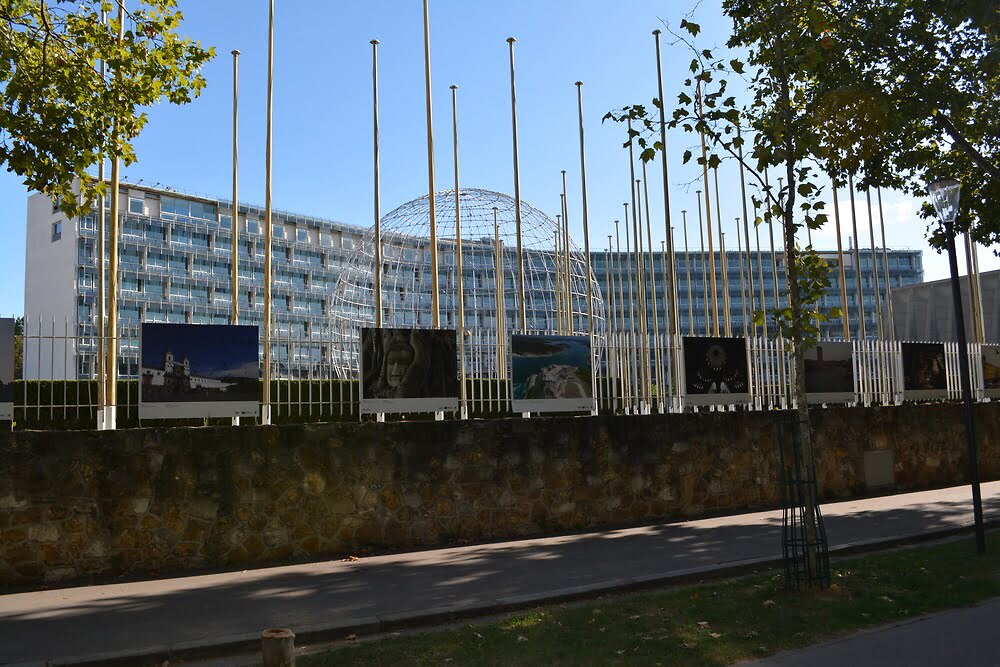
Specialized Agency of the United Nations, UNESCO aims at a world peace based on dignity and solidarity. Its founding Member States created the United Nations Educational, Scientific and Cultural Organization in 1946 for the purpose of advancing, through the educational and scientific, cultural and communication relations of the peoples of the world, the objective of international peace and of the common welfare of mankind.
Inaugurated in 1958, the international headquarters of UNESCO is the most international building in Paris, both in terms of the membership of the Organization it houses (currently standing at 186 States) and in terms of its construction, for it is the combined work of the American Breuer, the Italian Nervi and the French Zehrfuss.
The works of art on display reflect international artistic co-operation and include the General Conference Hall and works of Bazaine, Calder, Giacometti, Le Corbusier, Miro and Artigas, Moore, Picasso, Takis, Tapies, Tsereteli, the Noguchi garden of peace and the Nagasaki angel, the Meditation Area by Tadao Ando, the Square of Tolerance by Dani Karavan and the Symbolic Globe by Erik Reitzel.
Throughout the year, UNESCO invites you to visit the building and works of art and to attend a variety of different cultural events: exhibitions, concerts, shows and special events.
Location : 7 Place de Fontenoy 75007 Paris
Phone : 01 45 68 10 00
How to get there :
- Metro line 6 or 10: Segur, Cambronne
- Monday to Friday: 9.30 am to 5 pm.
- Free entrance
Official website : https://fr.unesco.org/about-us/unesco-house

Best hotels in Paris
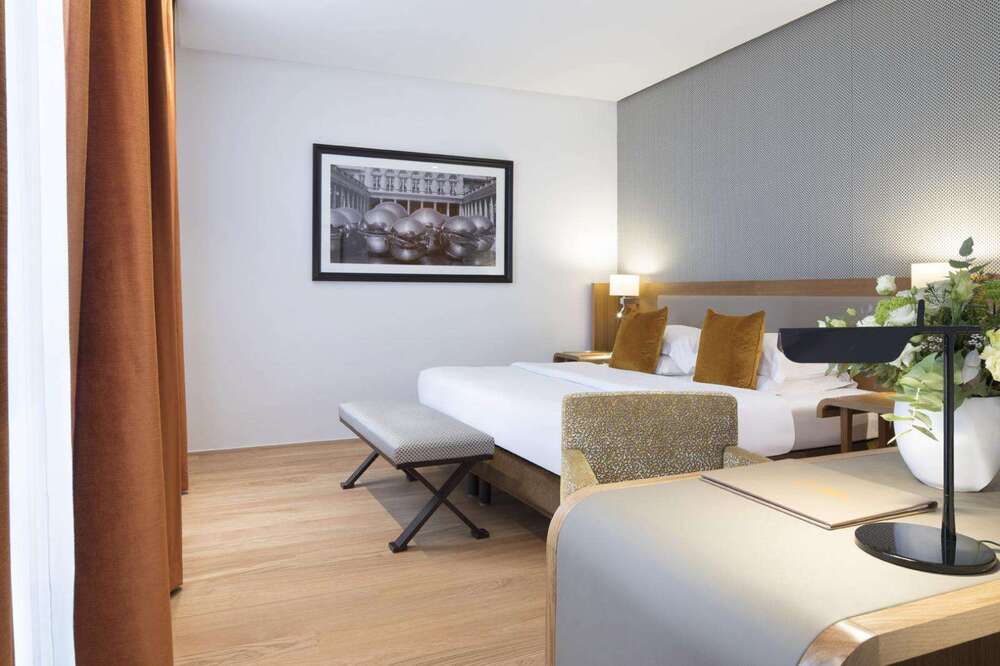
- Add your Hotel
- Restaurants
- 5 stars Hotels
- 4 stars Hotels
- 3 stars Hotels
- 2 stars Hotels
The Summer Olympic Games in Paris in 2024!
Celebrate Bastille Day 2024 in Paris: a spectacular fireworks display and unforgettable national celebration
Christmas Magic in Paris: Must-See Shop Windows of 2023
Victor Hugo House
Maison de Balzac
Paris Fashion Week 2023: Dive into the World of Fashion
- Museums and Exhibits
- Shows and Comedy
- Concert and Music
- Movies and Tv Shows
- History and Heritage
6 Unesco World Heritage sites to discover in Paris and the Ile-de-France region
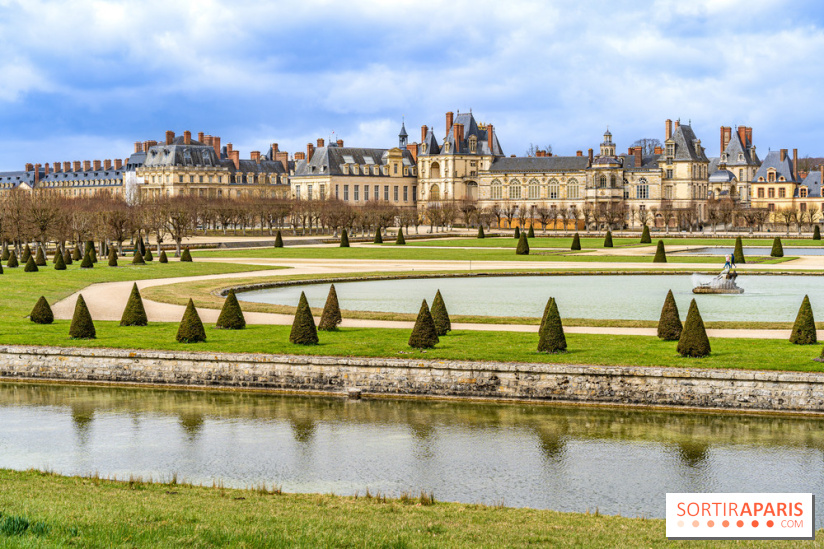
Ile-de-France is home to a number of sublime Unesco World Heritage sites. Here are 6 listed sites in and around Paris for you to discover . We invite you to explore these exceptional sites, starting with the famous Château de Versailles . Located at the gateway to Paris, these sites are just waiting to be discovered.
- Tourism: Val-d'Oise village named one of France's most beautiful villages retains its title
- Tourism: visit the historic Paris and the oldest places in the capital
- Tips for the week of August 19 - 25, 2024 in Paris: free or inexpensive outings
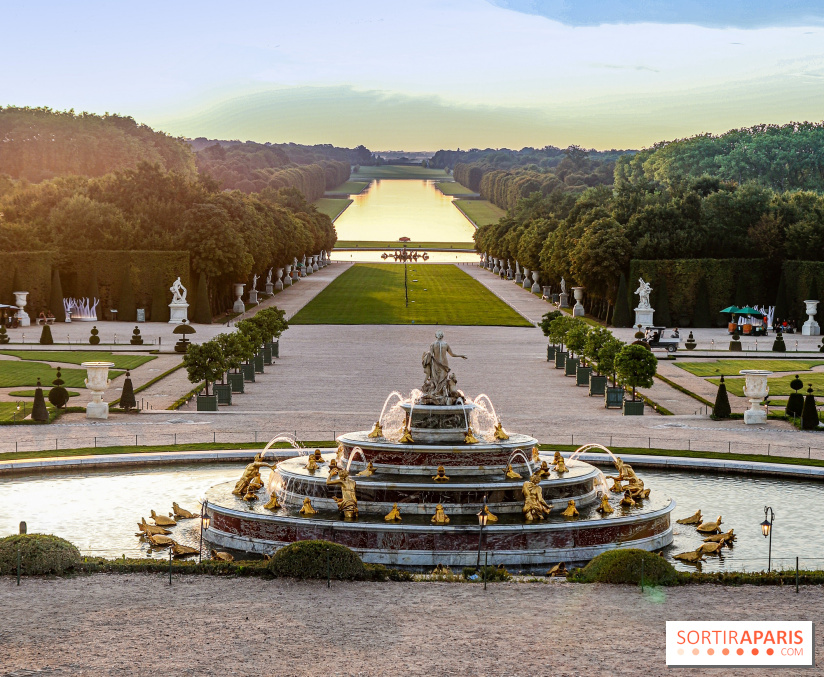
Refer your establishment, click here Promote your event, click here
Recommended age For all

27 Best UNESCO world heritage sites in France

- Post category: Travel to France
- Post author: Nassie Angadi
France is a country with so much rich history , it can seems like the entire country should be on a protected list. From soaring medieval cathedrals to imposing castles all over the country, it can be difficult to know where to begin.
The World Heritage List is created by UNESCO to protect sites of “outstanding universal value” to humanity. With different categories for culture and nature, there are so many beautiful UNESCO world heritage sites in France it is hard to choose which ones to visit.
Having traveled to many of these sites, I can say however there are ones that clearly stand out for their history as much as their beauty. So let’s have a look at the most beautiful UNESCO World heritage sites in France, shall we? Allons-y!
1. Palais de Versailles
It was built by the famous Sun King Louis XIV of France , but we think more today of the tragic destiny of Marie-Antoinette and the French Revolution . The Château de Versailles is a palace that is officially recognized as a UNESCO World heritage site.
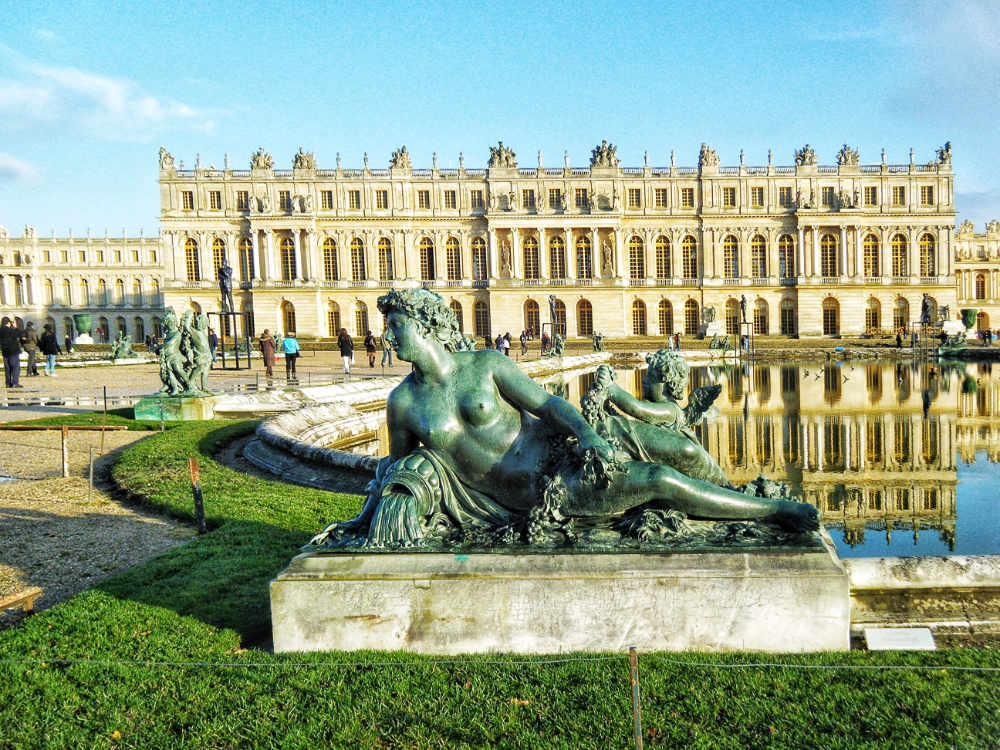
☞ READ MORE: French travel phrases you need for a trip to France
Many other key moments in history took place here as well, such as the Treaty of Versailles (WW1), subsequent German retaliation (WW2), amongst many others, so wander around and breathe in the history of France .
You can read more about visiting the Château de Versailles here. It does get quite crowded, especially in the summer so I highly advise booking tickets in advance.
2. Pont du Gard
About 72 miles (117 km) away from Aix-en-Provence in the region of Provence, is an ancient Roman aqueduct known as Pont du Gard.
Built over a period of 5 years in the 1st century, the aqueduct was built to carry water to over 50 km (31 miles) to what was then the Roman colony of Nimes .
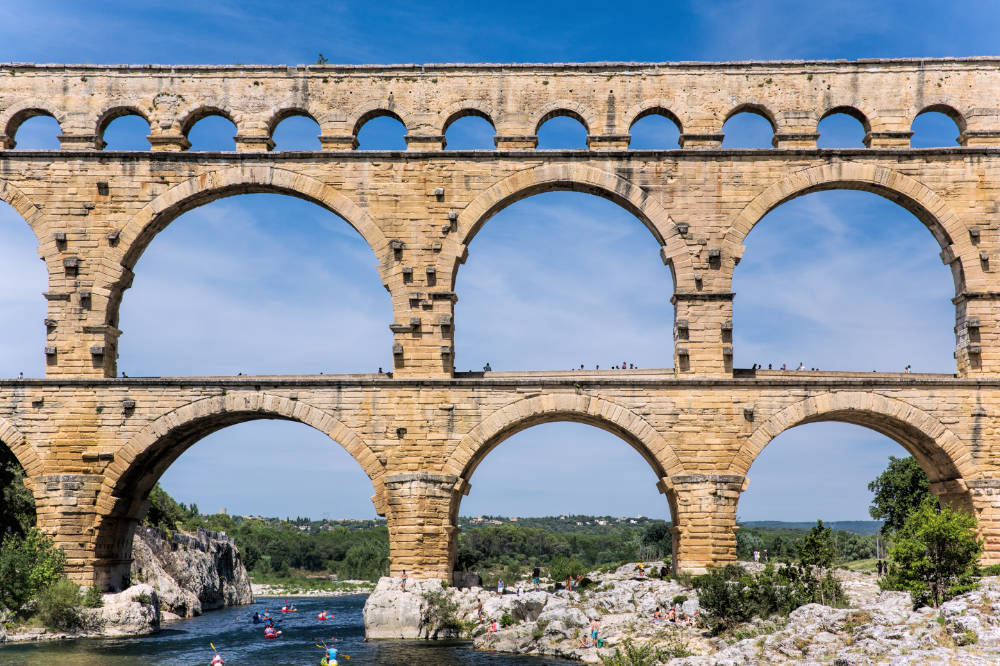
With 3 tiers of arches, it crosses the river Gardon and is the highest of all Roman aqueduct bridges, as well as being one of the best-preserved.
After the Roman empire collapsed, the Pont du Gard remained in use as it also served as a toll bridge for people looking to cross the river. The bridge remained mostly intact, with the Ducs of nearby Uzès being responsible for maintaining the bridge.
Rather than delivering water, the bridge instead became a tourist attraction , with everyone from French Kings to apprentice masons making their way to the bridge to admire its architecture.
In the early 2000s, traffic around the area was rerouted to preserve this UNESCO world heritage site and from pollution and maintain the tranquil nature of the area. Today, it is one of the most popular destinations in France after the Palace of Versailles and Mont Saint Michel.
You will need a rental car to visit, or alternatively you can book a tour from Aix-en-Provence . You can read more about Pont du Gard here.
3. Carcassone
Located in the south of France in Occitanie, one of the most popular tourist attractions in France has to be the in town of Carcassonne.
La Cité de Carcassonne and its Château Comtal, with its enormous walls, look and feel like they belong in another time. And indeed they do, dating back to the Middle ages, when wars were waged on horseback and moats were enough to keep invaders out.
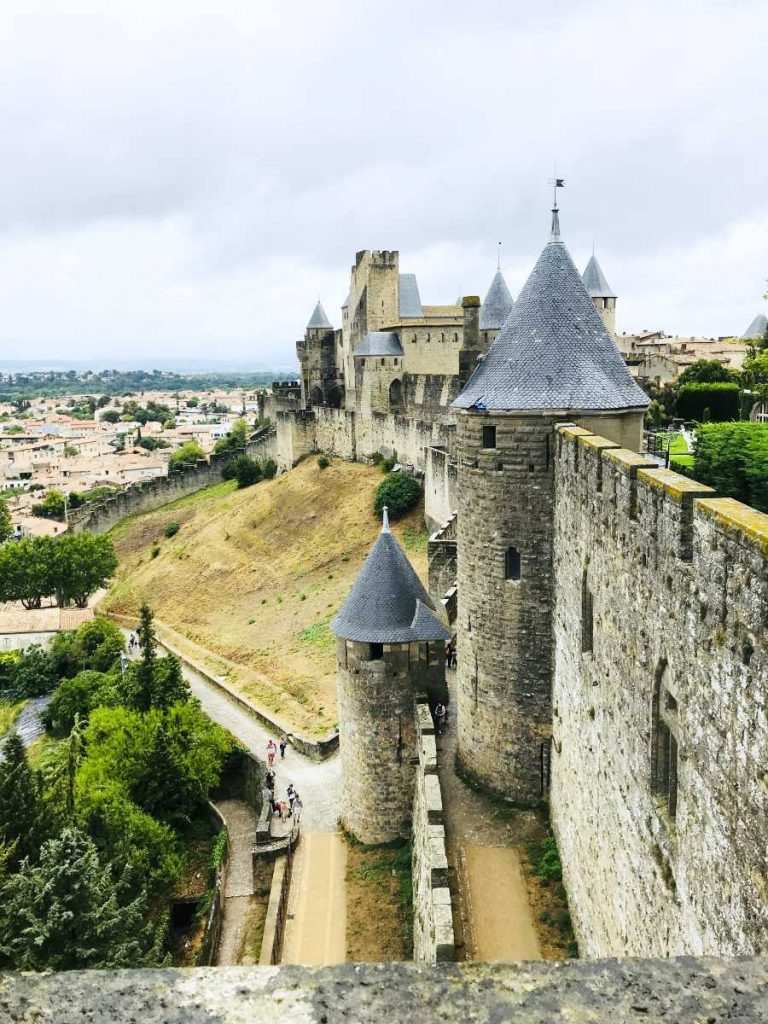
A UNESCO world-heritage site, the Cité de Carcassone is one of the largest of its kind with two outer walls and 53 towers.
The impressive citadel towers on a hilltop, surrounded by wide, stone ramparts that you can walk along and explore. There is quite a lot of see, so to make the most of your day, I suggest taking a guided tour when you arrive at Carcassonne . You can read more about visiting Carcassonne here.
4. Canal du Midi
The Canal du Midi is a man-made river constructed in 1681, located in the Languedoc-Roussillon region in France. Today it is officially recognized as a UNESCO world heritage site.
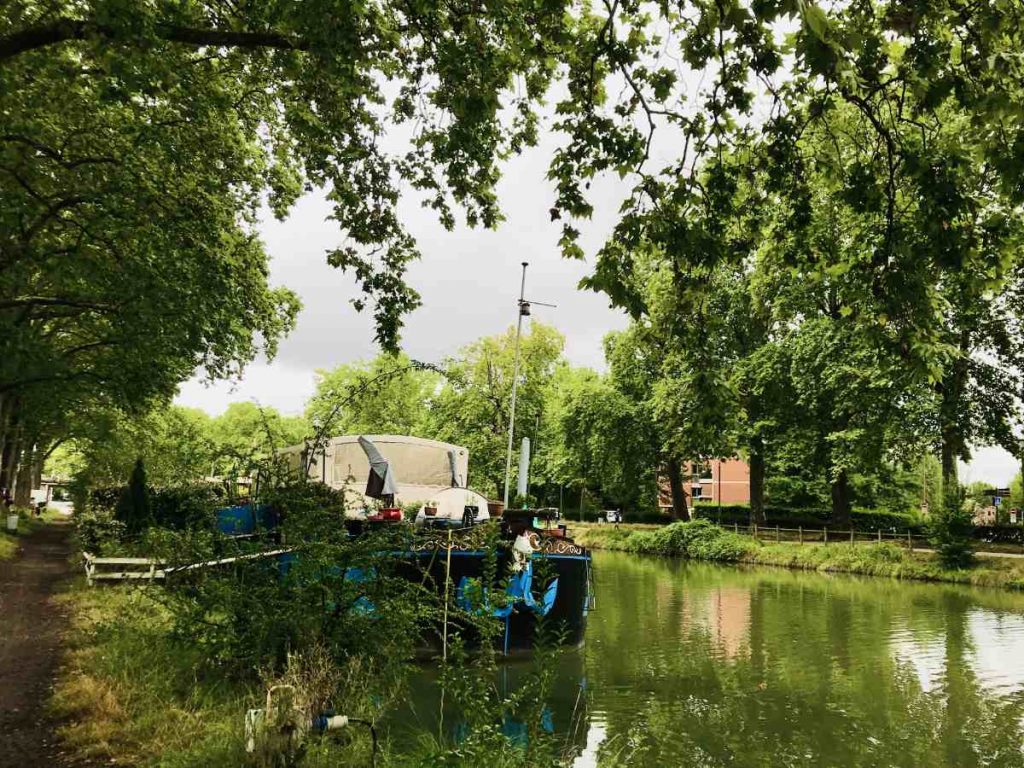
This canal crosses the region between Toulouse and the Mediterranean Sea and ranks as one of the greatest feats of engineering of all time. At over 120 miles (193 km) long, this waterway links the Mediterranean and the Atlantic ocean, making it a crucially important crossroad within France rather than having to go around Spain and the Iberian coastline.
It was constructed by Sun King Louis XIV of France in 1666 (who also built the Palace of Versailles ), who let his engineer Pierre-Paul Riquet take the lead on the project. Riquet would spend much of his own fortune to ensure that the Canal was completed in 1681.
It is also exceptionally beautiful, with houseboats along its tree-lined quais and working locks that still adjust water levels. Go for a stroll, a bike ride with a tour guide , or take a boat ride onto its waters. You can read more about the Canal du Midi here.
5. Roman amphitheatre in Arles
Known as Arelate , the city of Arles was once an important Roman settlement on the crossroads of the Rhône river and the Mediterranean sea, as Caesar and his Empire expanded into Gaul and headed west.
The city in southern France has a long history, having considerable importance in the Roman province of Gallia Narbonensis . Today Arles and its Roman ruins are recognized as a UNESCO world heritage site.
With a magnificent amphitheatre, forum, and other Roman buildings, Arles was city that had prospered from trade and commerce. It also has managed to preserve many of its artefacts and ruins, making it one of the best places in France to see the remaining vestiges of the Roman empire.
A clear sign of the city’s importance is the Arles Amphitheatre , that served as a stadium for entertainment and sporting events in the old empire.
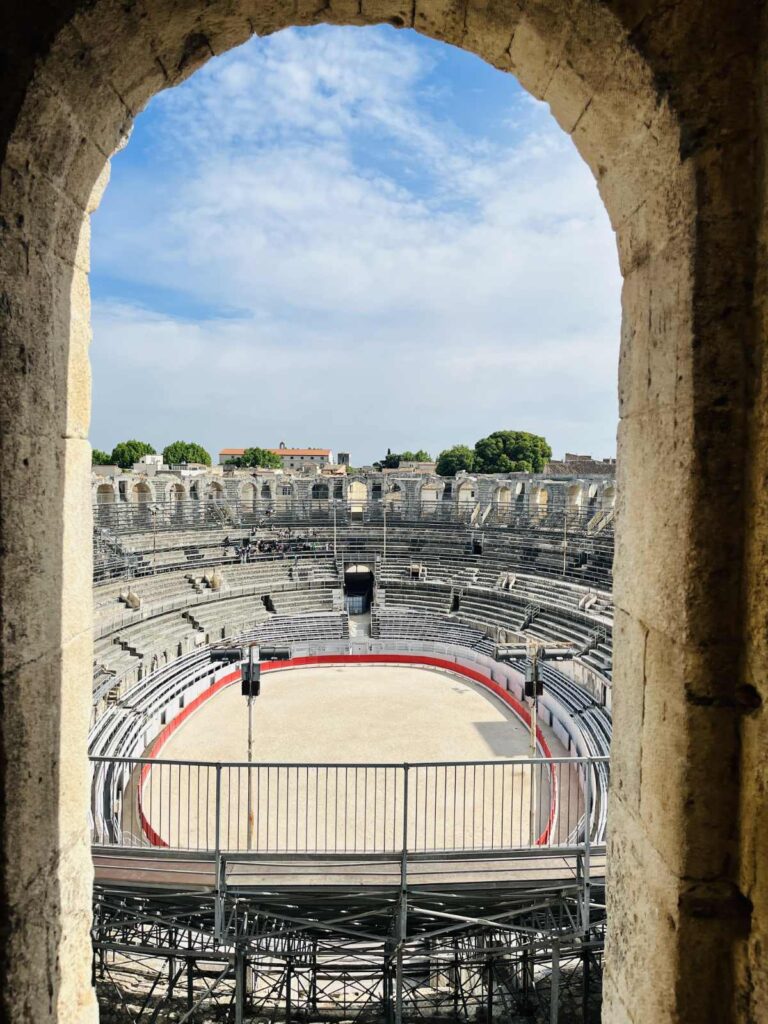
It was built in 90AD, 10 years after the Colosseum was completed in Rome. While the one in Rome is larger holding 65,000 people, the Arles amphitheatre can hold around 20,000. Quite impressive for a town that still only has a population of around 50,000.
Within a few 100 yards of the Arles amphitheatre is the Roman theatre . While gladiators provided the entertainment in the amphitheatre, this Roman theatre was for plays and musical acts.
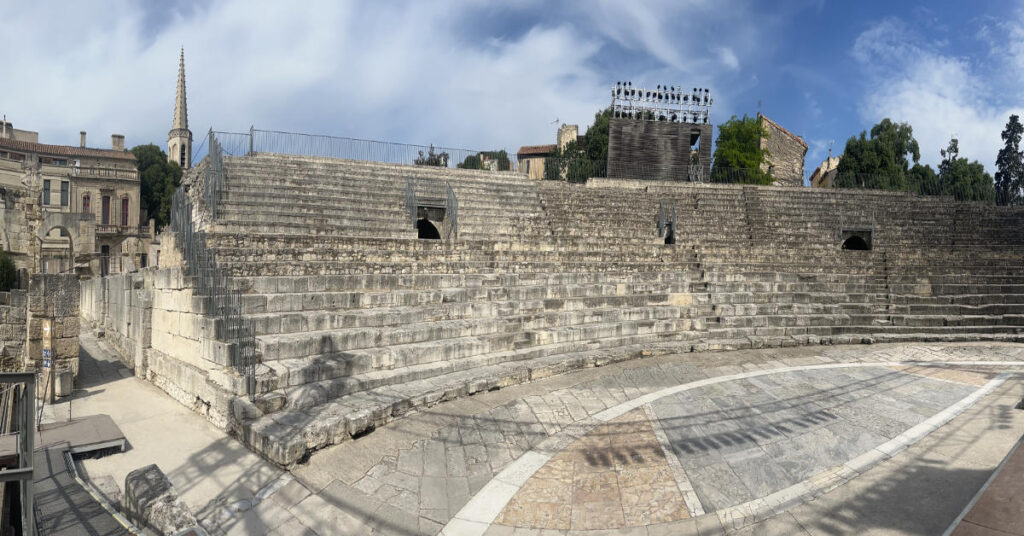
The Roman theatre is actually older than the amphitheatre, having been completed nearly 100 years earlier in 12 BC. It was built to seat around 10,000 people.
At the time, it was highly decorated with statues and sculptures. The famous Venus of Arles , which is now in the Louvre museum , was discovered here during excavations of the ancient theatre.
Along with gladiator sports and the theatre, the Romans were also very fond of the baths. Built in the 4th century, the Thermes de Constantin baths were believed to have been constructed when Emperor Constantine I resided in Arelate as the city was known.
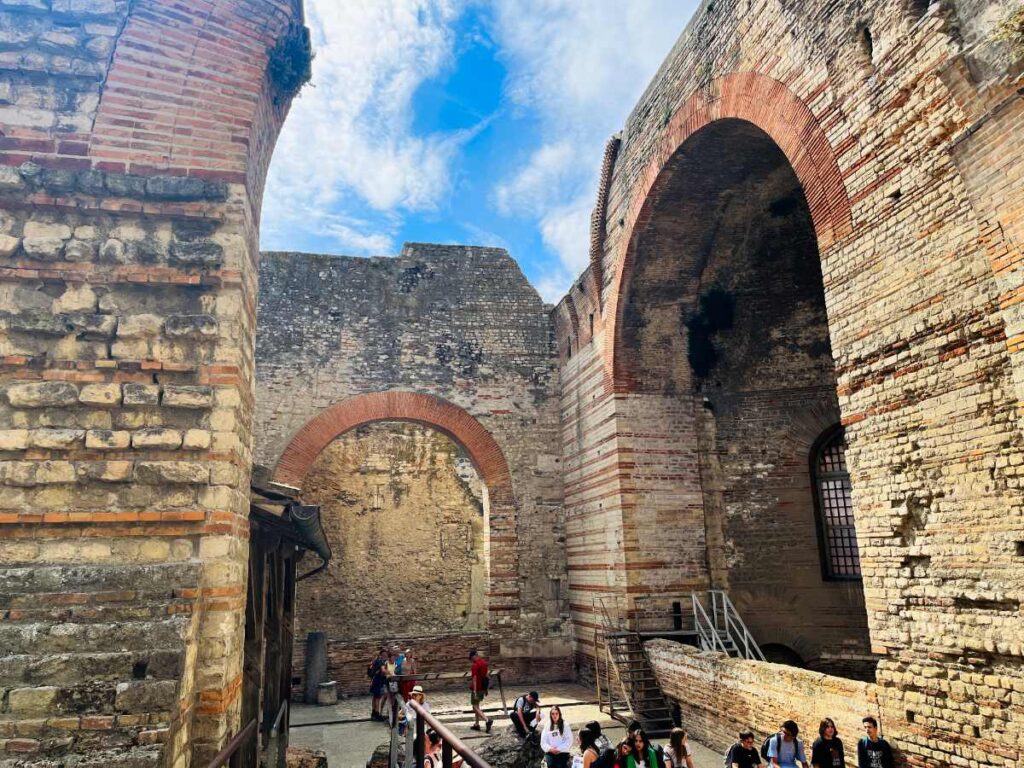
Nearly 3900sqm with grand arches and multiple levels, the bather was required to travel a circuit of hot and cold springs in an effort to restore good health.
The Thermes de Constantin are among the best preserved in France, along with the Thermes de Chassenon in Charente and the Thermes de Cluny in Paris.
6. Reims Cathedral
The Reims Cathedral stands on the spot of an older church that is thought to have been founded by the bishop Nicasius in the early 5th century. It is officially recognized as a UNESCO world heritage site.
It is here in 496AD that St. Rémi is believed to have baptized Clovis I, the 1st King of the Franks into Christianity and the start of the Frankish Empire . (The city of Reims is named after the saint.)

Construction of the current building of Reims Cathedral began in the 13th century. After Clovis, most of the French Monarchs through the centuries were crowned here.
Only a handful were not, including Napoleon Bonaparte who decided to be crowned at Notre Dame de Paris. His successor Louis XVIII also tried to dispense with the tradition, after the guillotine of his uncle King Louis XVI and Marie Antoinette .
The last coronation here was 1825 of Charles X, who was quite unpopular and shortly overthrown after. The Reims Cathedral was one of the buildings substantially destroyed during World War I, which had to be almost entirely rebuilt. A large donation from John D. Rockefeller was able to restore the Cathedral to what we see today.

When you walk through the cathedral, you can’t help but remark upon the extraordinary history of this tourist attraction . All around the exterior and interior facades, there are giant size statues of French Kings and saints.
The building today is an inspiration for the reconstruction of Notre Dame de Paris which was also significantly damaged after a large fire in 2019.
Other famous historic cathedrals in France that are recognized as UNESCO world heritage sites include the Amiens Cathedral (which is the largest in France), Chartres Cathedral , and Bourges Cathedral.
7. Grotte Chauvet
One of the greatest cultural treasures in the world is located in the heart of department of Ardèche, about 124 miles (200 km) away from Lyon .
Known as Grotte Chauvet (Cave Chauvet), it is a cave network which has some of the earliest known Paleolithic human cave paintings. Dating back about 28,000 – 32,000 years old these are among the oldest in the world.
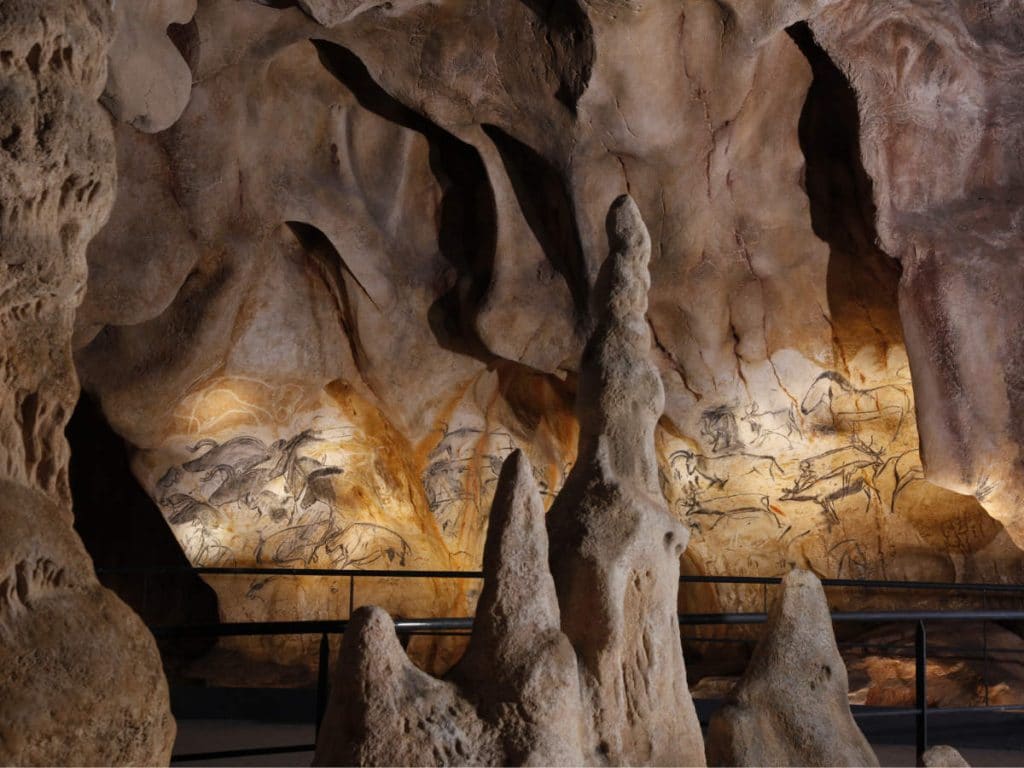
There are several panels with some of the earliest known figurative drawings, making it one of the most important prehistoric art sites in the world. These spectacular images were created by prehistoric humans, or Homo sapiens, as they roamed the European continent.
The actual cave is too fragile to allow visitors, and so an exact replica was built called Grotte Chauvet 2. Built to educate visitors about the Paleolithic era, there is an entire complex of exhibitions to visit about the lives of these prehistoric humans.
Other prehistoric cave complexes called Lascaux and Grotte Cosquer are also on the UNESCO world heritage list, but similarly it is the replicas that are open to visitors. You can read more about visiting Grotte Chauvet 2 here.
8. Mont-Saint-Michel
One of the most beautiful and unique sights in the world, Mont Saint Michel is a sight to behold. Legend has it that the archangel Michael appeared to St. Aubert of Avranches in 708 and instructed him to build a church on a large rock.
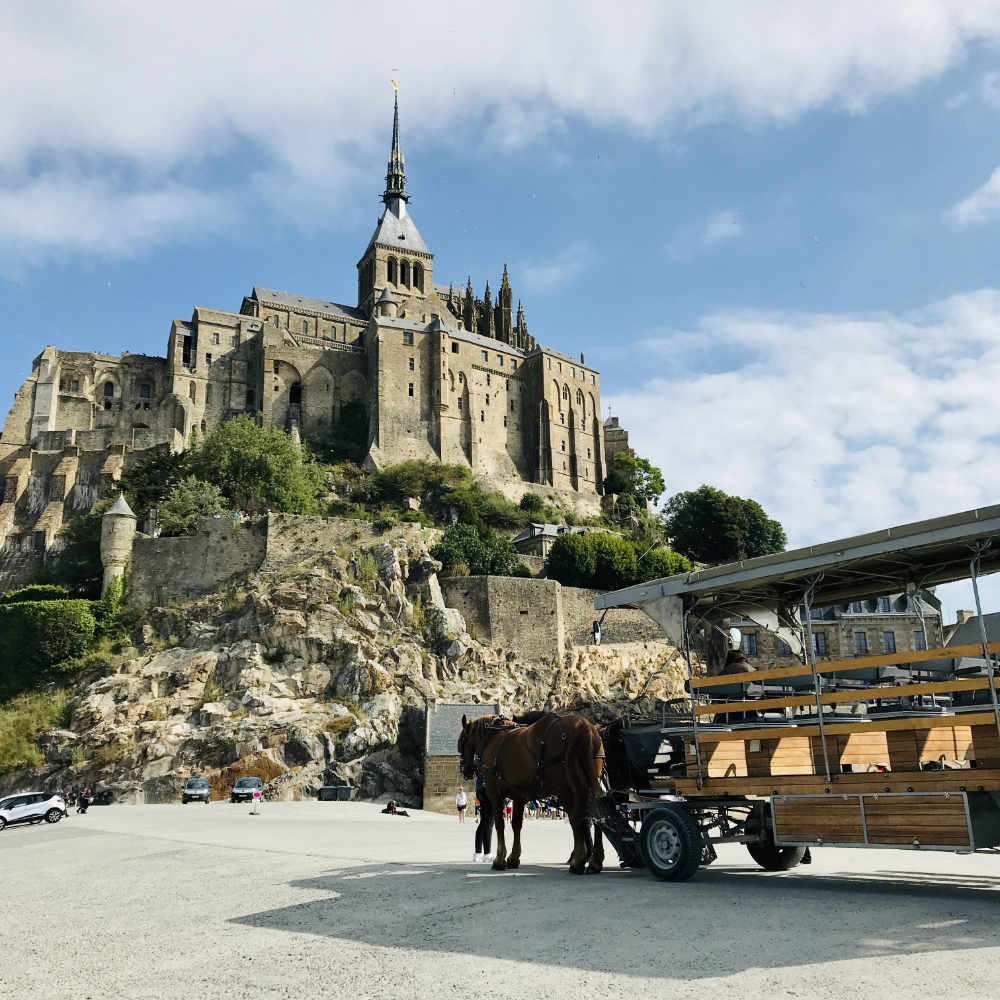
Surrounded by marshland, the waters turns the UNESCO World heritage site into an island when the tide comes in.
It takes about 4 hours to get there from Paris, and to get there from Paris you can take the train from Paris’ Gare Montparnasse to the city Rennes (2 hours), from where SNCF buses travel to Mont St. Michel (1.5hrs).
It is a bit of an adventure though, so this one day trip that I would strongly recommend going with a tour company . You can read more about visiting Mont Saint Michel here.
9. Château de Fontainebleau
In the words of Napoleon Bonaparte , Château de Fontainebleau was “the true home of kings, the house of ages.” While the glamorous Château de Versailles was a bit of a party palace, Château de Fontainebleau was the original working royal palace of the monarch , constructed centuries earlier.
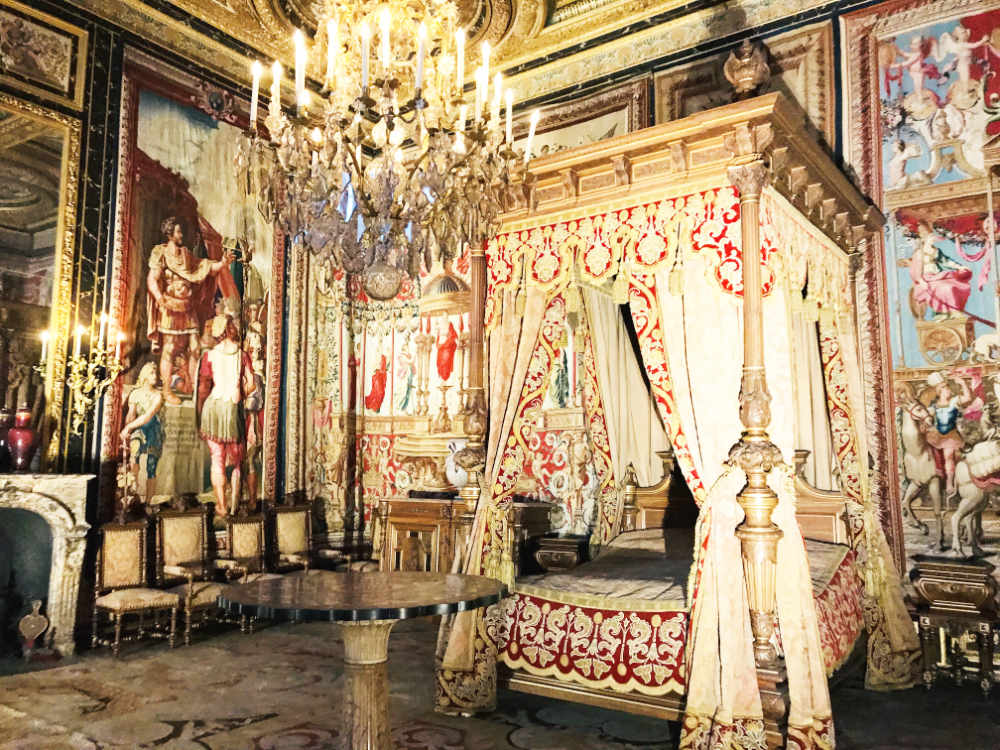
Further away from Paris than Versailles, Fontainebleau was originally constructed as a hunting lodge. Today it houses two exhibitions, both on larger-than-life French Kings: François I and Napoleon Bonaparte .
Of all the magnificent châteaux near Paris , this is perhaps the one with the most history. It is officially recognized as a UNESCO world heritage sites. You can read more about Château de Fontainebleau here, and find recommended tours from Paris .
10. Loire Valley Châteaux
It is lucky that the Loire Valley is about 2.5 hours away from Paris (by car), because that meant many of its luxurious renaissance châteaux were saved from the destruction of the French Revolution .
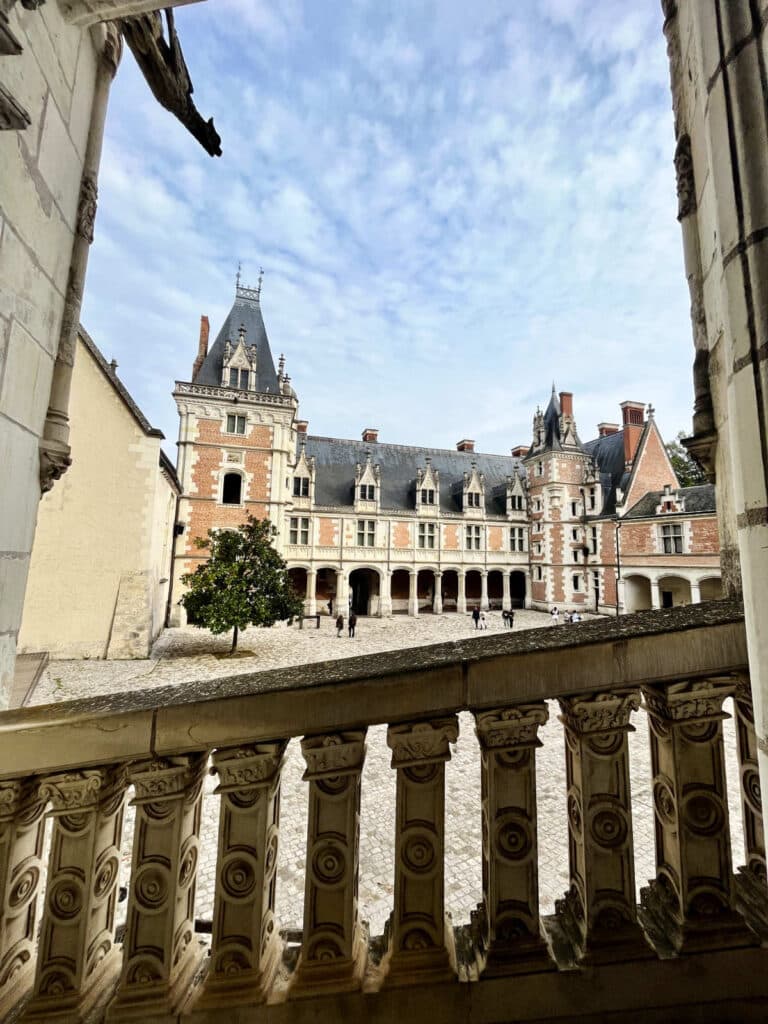
Chateau de Chenonceau and Chambord are two of its most famous. The beautiful city of Amboise has its own Royal Château that you shouldn’t miss.
In addition, the Loire Valley is a wine-producing region , so there are many popular white wines that are grown in the region, which you can read about here. The area is the second-largest concentration of sparkling-wine producing vines in France after the Champagne region.
And since they don’t build train stations next to castles, I would highly recommend taking a tour from Paris. There are several tours that combine wine-tasting and château-hopping as a day trip, or longer if you choose. You can see Loire Valley tour options here.
11. Provins
About an hour away from Paris by train, Provins is an ancient fortress town that is so well preserved, it has been inscribed on UNESCO’s world heritage list.
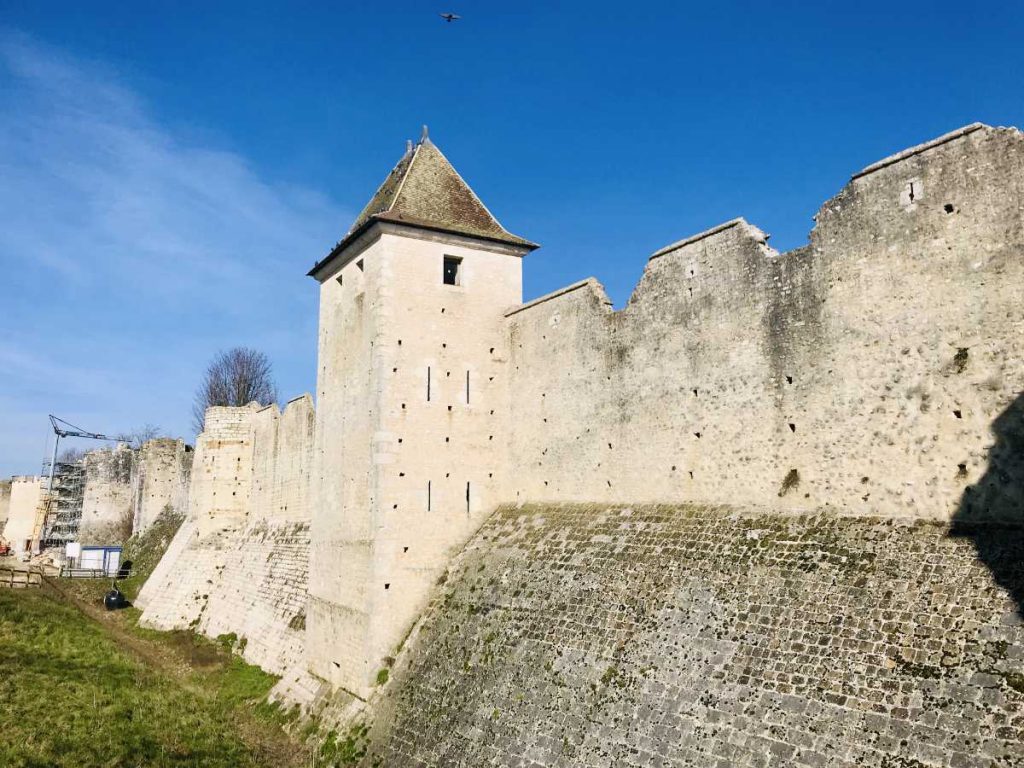
But Provins was never a royal city. Instead it was a city where nobility and royalty sent their servants to do their shopping. The town held the letters patent to hold annual events called the foires de Champagne (Champagne fairs), where tradespeople and merchants from far and wide would come to sell their wares.
This medieval town is best known these days for its famous “rose de provins”, which is used to make all kinds of rose confectionary.
There are also plenty of towers, ramparts, and dungeons to visit, along with a pedestrianized town center. You can read more about visiting Provins here.
12. Strasbourg Grand Ile
Located in the city of Strasbourg in Alsace, the Grand Ile is the large island that is in the heart of the city.
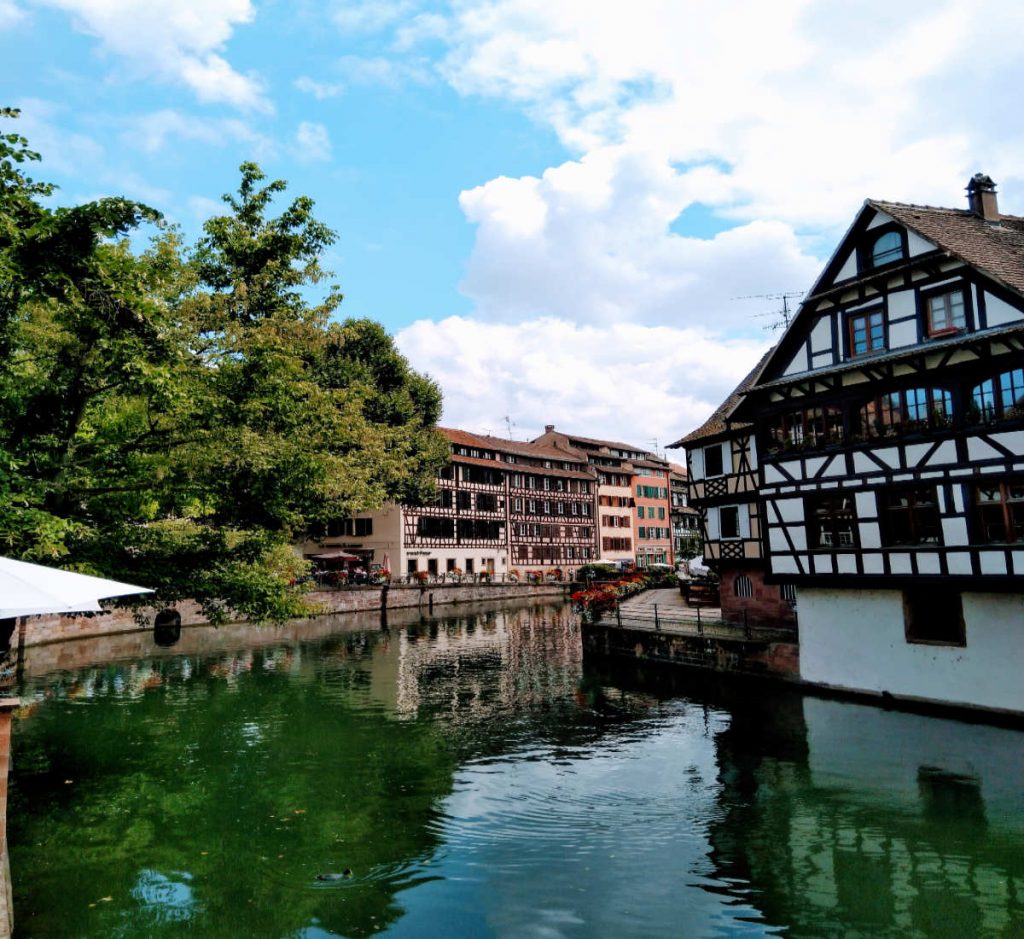
And who can have an island without a few bridges? This area is dotted with many small bridges, some dating from the medieval age.
Les Ponts Couverts are a set of three bridges and four towers that were erected in the 13th century. It is officially recognized as a UNESCO world heritage site. You can walk across the Pont, which is usually open between 9-7pm. Access is free.
13. Route of Santiago de Compostela
The Routes of Santiago de Compostela is one of the oldest religious pilgrimages in the world. It includes 71 monuments as well as 7 different paths, starting in Paris, Vezélay, Le Puy, and Arles and stretches across France into the north of Spain.
The sites include monuments, churches, or hospitals that provided services to pilgrims headed to Santiago de Compostela in Spain. Some of the notable sites on the Routes of Santiago de Compostela are:
- Amiens Cathedral
- Mont-Saint-Michel
- Basilica of St. Severinus in Bordeaux
- Romanesque church of Sainte-Foy at Conques
- Cathedral Saint Caprais in Agen
- Cathedral Sainte-Marie in Bayonne
- Church of Saint-Pierre at Moissac
- Basilica Saint-Vincent of Castres
- Basilica church of Saint-Sernin in Toulouse
- Collegiate church of Neuvy-Saint-Sépulchre
- Cathedral Saint-Étienne in Cahors
- Village of Rocamadour
14. Episcopal City of Albi
The Episcopal city of Albi is located in the Occitanie region of France, near Toulouse. It is a small town that is dominated by one of the most incredible churches in France that has been recognized by UNESCO
The Cathedral Basilica of Saint Cecilia, aka Albi Cathedral is thought to be the biggest medieval era brick building in the world. It was begun in 1282 and was under construction for 200 years.
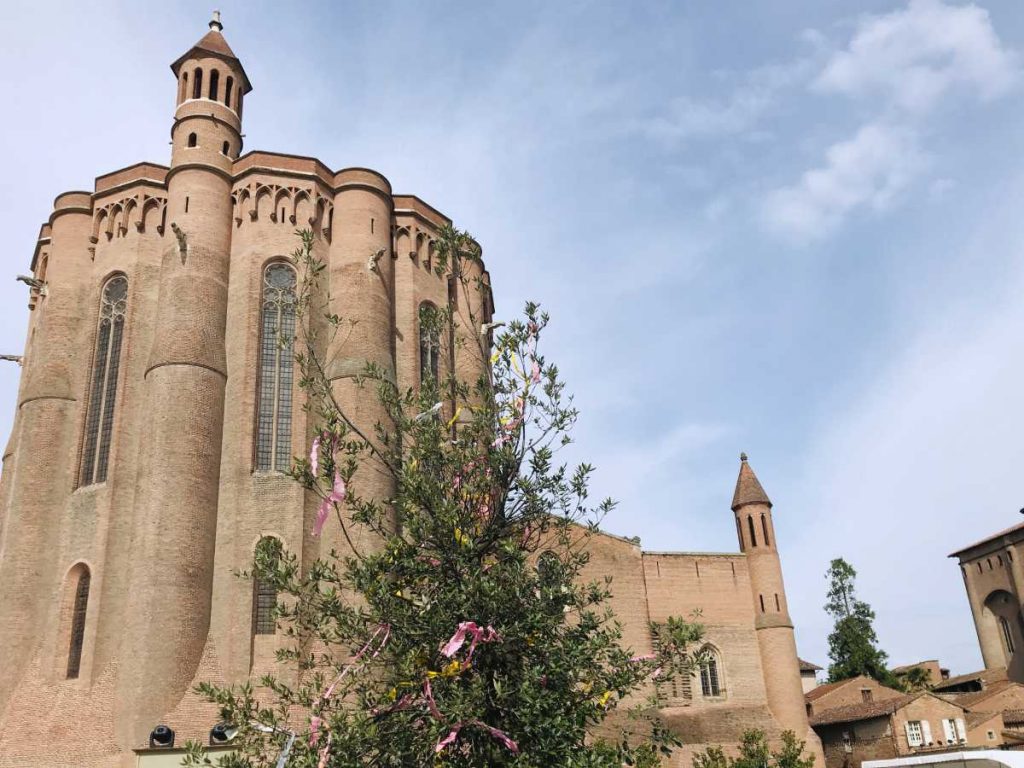
A UNESCO world heritage site, the earliest church that stood here dated back to the 4th century. It is named for Saint Cecilia, a wealthy Roman noblewoman and martyr, who was a patroness of musicians.
The current cathedral is a medieval gothic cathedral and was built to impose Catholic rule in the area.
In the 12th century, Albi was part of the Province of Languedoc, ruled by the Count of Toulouse, who owed allegiance to the King of France . The region became a battleground between the established church and the followers of a dissident religious movement called Catharism.
The Cathars had a strong presence in Albi at the time, leading the Catholic pope to launch the Albigensian Crusade in 1208 to destroy the Cathars in southern France.
It ended in 1209 with the defeat and massacre of the Cathars at Carcassonne , and the end of the semi-independence of the states of Languedoc.

The Cathedral was built a few years later to install a Catholic bishop in the area, and ensure that Catharism did not reestablish itself in the area.
Inside, you can see its beautifully preserved blue and gold ceilings as well a large rood screen (jubé in French) that is on one side of cathedral. It is an ornamental and intricate fence that was reserved for the clergy to pray without being disturbed. You can read more about visiting the Episcopal city of Albi here.
15. Notre-Dame Cathedral of Chartres
One of the most impressive sights to see in city of Chartres is the Cathedral of Our Lady of Chartres. Built between 1194 and 1220, there were 5 earlier churches on this spot dating back to the 4th century. It is officially recognized as a UNESCO world heritage site.
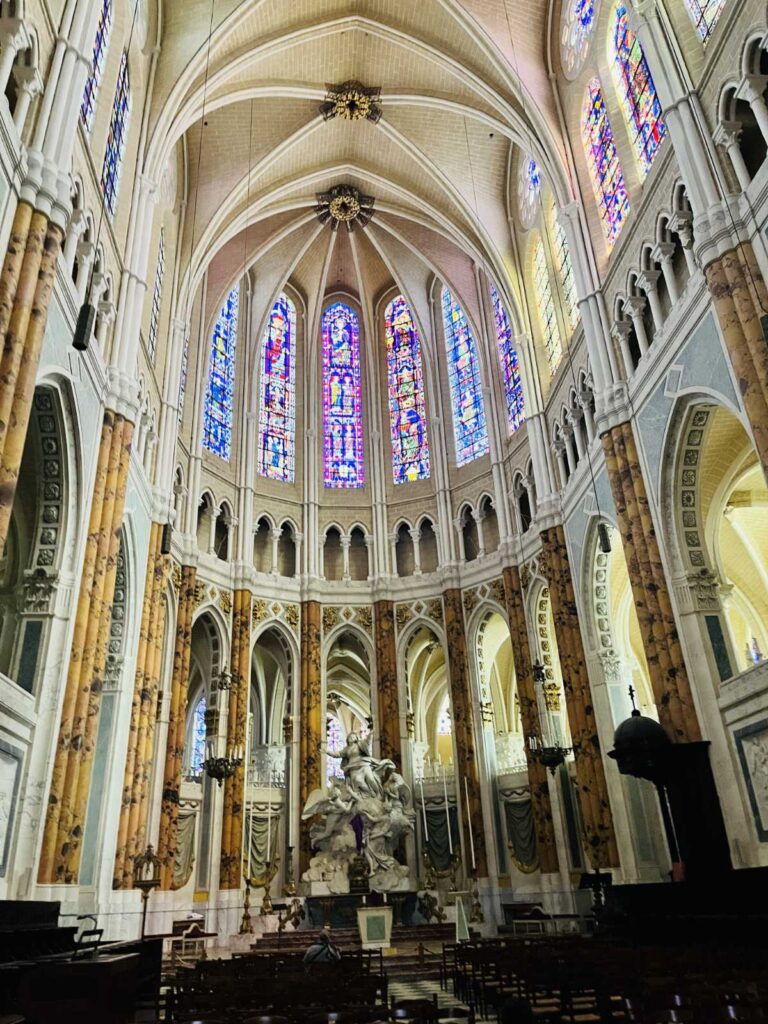
It is a beautifully preserved gothic church with a lot of its stained glass windows remaining intact through France’s many wars and revolutions . Since the 11th century, it has been the seat of the Bishop of Chartres.
It is here that Good King Henri IV was crowned King of France on 27 February 1594. Henri was a Protestant and had recently converted to Catholicism to try to convince the local French catholics to accept him.
Reims cathedral , the traditional seat where royals were crowned, and the iconic Notre Dame de Paris were still in Catholic hands. Hence the historic town of Chartres which was nearby was chosen for the coronation. You can read more about visiting Chartres here.
16. Champagne hillsides, houses and cellars
The most famous of French wines (yes, it counts as a wine, of the sparkling variety), has of course to be Champagne. When you think of luxury and prestige, it is usually accompanied by a glass of Champagne .
In recognition of this, UNESCO has selected the hillsides where champagne is grown along with its houses and cellars as protected world heritage sites.
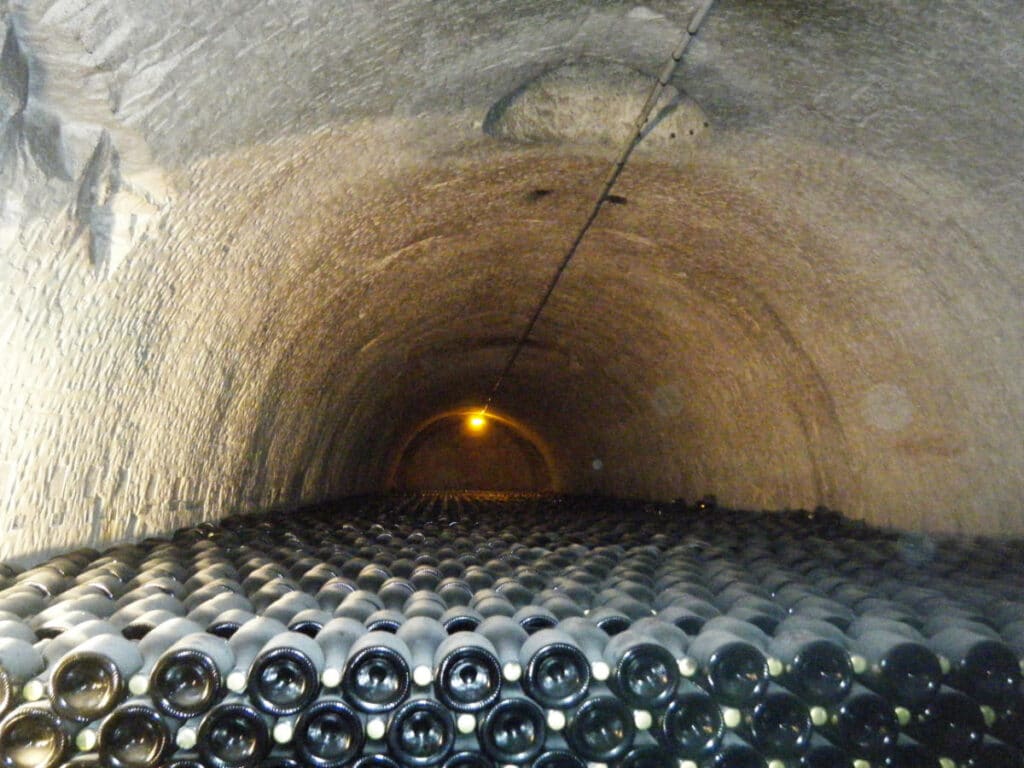
Sparkling wines have been produced in France as early as the days of the Roman Empire . But the name “Champagne” became famous in France after a monk named Dom Perignon in the 17th-century in the outskirts of Reims , came up with the idea of matching grapes together to come up with particular notes (rather than throwing random grapes together).
He also used thicker bottles which helped prevent the bottles from exploding during transport. Today the name “Champagne” is officially protected in France and through international treaties with an “ AOC – appellation d’origine contrôlée “.
17. Paris, banks of the Seine
Paris is one of the most scenic cities in the world. With the river Seine running through the city and a couple of small islands dotting the center, the banks and bridges of Paris connect the city’s different neighborhoods and quartiers .
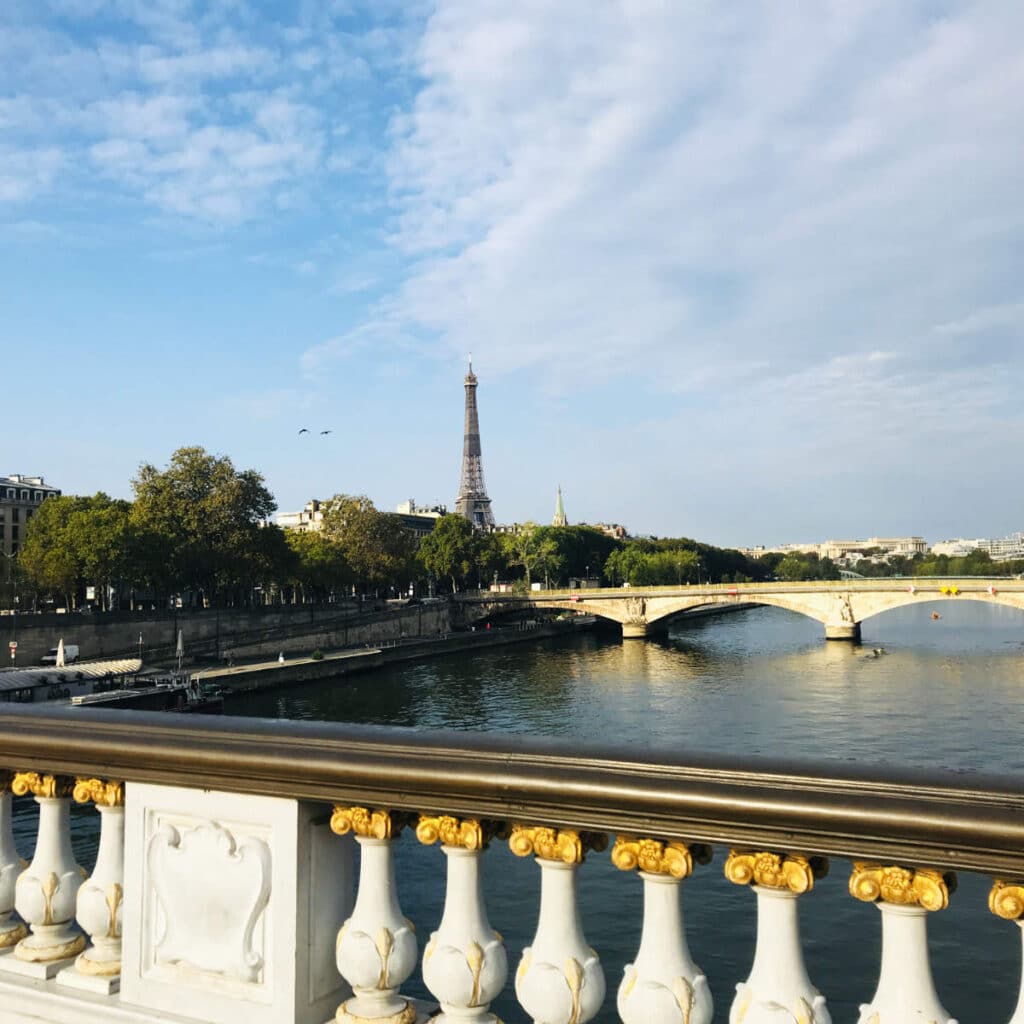
Some of its most iconic sights along the banks of the river Seine date back in the city’s history . These include the Notre Dame Cathedral , Conciergerie , Louvre Museum , Concorde, Assemblée Nationale and up to the more recent Eiffel Tower .
Such is the renown of these places that Paris and the banks of the Seine have been designated as UNESCO world heritage sites.
18. Historical center of Avignon
One of the most interesting UNESCO heritage sites is the French walled city of Avignon in Provence. Much of its fame stems from the 13th century. when the King of France insisted that the Roman Catholic church and its Pope move to Avignon.
It was a controversial move. A landmark palace was built as a fortress for the Pope on a small hill, with high walls surrounding it and the city. This walled city has been preserved, with large parkings built underground, and its center mostly pedestrianized to keep its charm.

At the center of Avignon stand the former Papal Palace. Constructed in the 13th century, the Palace is still one of the largest gothic medieval buildings in Europe.
The palace gradually deteriorated after the popes left in 1377, and was even used as military barracks and a prison by Napoleon Bonaparte as he went around conquering Europe.
Other famous sites within the city is the Pont d’Avignon bridge, also known as the Saint Bénézet Bridge. In addition is the Cathedral of Notre-Dame des Doms which lies just north of the Papal Palace, dating back to 1150. You can read more about visiting Avignon here.
19. Fortifications of Vauban
The Alpine town of Briançon on the French border was heavily fortified under Sun King Louis XIV in the 17th century to keep out Austrian invaders.
This area called Forteresse Vauban after his engineer, Vauban, who constructed several fortifications all along the French border with Germany, Italy and Switzerland.
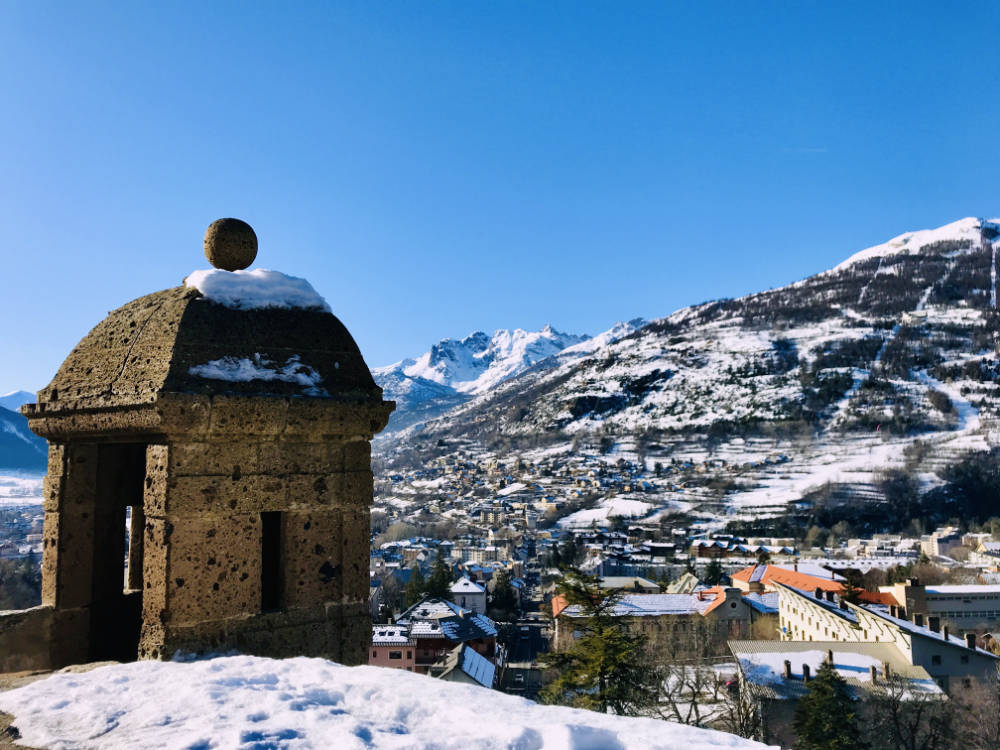
Sébastien Le Prestre de Vauban (1633-1707) constructed several fortifications in the Alps and surrounding area.
The Fortification of Vauban consists of 12 groups of fortified wall and castles along the western, northern and eastern borders of France. They have been officially designated a UNESCO world heritage site.

20. Nice, winter resort town
The quintessential beach city in France has to be the city of Nice on the French Riviera (Côte d’Azur). If you are looking for sun-filled days with sea views the city of Nice is the place to be.
Nice has been designated a UNESCO world heritage site because of its status on the Riviera attracting wealthy Europeans looking to escape a cold winter. From the mid-18th century, the site attracted growing numbers of aristocratic and upper-class families.
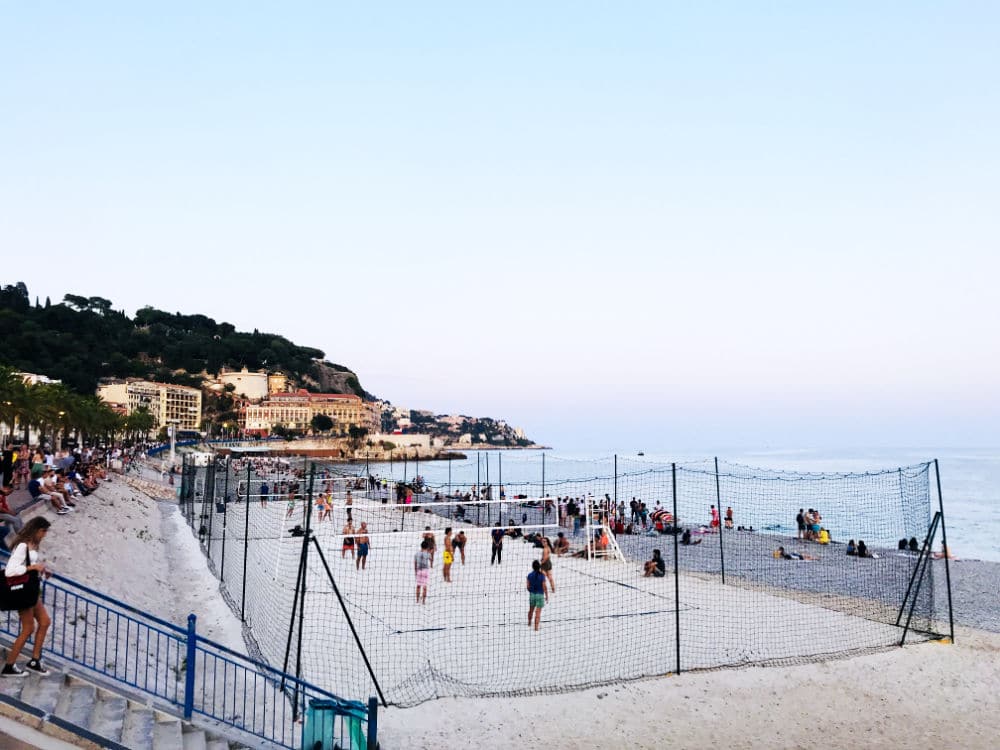
Once part of the Duchy of Savoy , it only became part of France in the 19th century. And since then, with its famous Promenade des Anglais boardwalk and long expansive beaches, this is a seaside town that both tourists and locals regularly flock to.
But there is more to Nice than just beaches and boardwalks. Dating back to antiquity , the city has always attracted an amalgam of visitors from across the Mediterranean sea.
With a niçois culture that is a mix of French, Savoyard and Italian, it is a city bustling with good food, restaurants, bars, shops and museums.
Other towns nearby include Monaco and Cannes, which are just a short train ride away. You can read more about the city of Nice here.
21. Spa towns of France
France is renowned for its picturesque spa towns which have been designated as UNESCO world heritage sites. From ancient Romans to Queen Victoria of the UK, these towns have long been sought-after destinations for relaxation, rejuvenation, and healing.
One such notable spa town is Aix-les-Bains , situated on the eastern shores of Lake Bourget. Its thermal springs, dating back to Roman times, are famous for their healing properties, attracting visitors seeking relief from various ailments.

Other gems among France’s spa towns are Vichy, Aix-en-Provence , and Greoux-les-Bains . In addition, Evian-les-Bains is famous for its pure and mineral-rich water, which gave birth to the renowned Evian brand.
Although not as famous as they once were, locals and tourists still flock to these spa towns for a bit of rest and relaxation.
22. Place Stanislas, Place de la Carrière and Place d’Alliance in Nancy
The small city of Nancyin northeastern France, is home to three remarkable UNESCO World Heritage Sites: Place Stanislas, Place de la Carrière, and Place d’Alliance.
These architectural masterpieces were designed in the 18th century by King Stanisław I of Poland who had to flee his homeland to France, and would go on to become the Duke of Lorraine. (His daughter Marie was married to the King Louis XV of France. Stanislas was also instrumental in the recipes for French onion soup and baba au rhum cake!)
At the heart of Nancy is the iconic Place Stanislas, named after him. A bronze statue of Stanisław I stands as a testament to him. Nearby are the equally impressive Place de la Carrière and Place d’Alliance which were all designed and constructed between 1752 and 1756 by the architect Emmanuel Héré.
23. Historic center of Lyon
History tells us that it was Lyon that was the capital of Roman Gaul (as France was then known), the most important city in this part of Europe. In the time before Christ, 43 BC, the city was known as Lugdunum .
The Roman Empire considered it so important that 2 future Roman emperors were born here, Claudius and Caracalla . As such, there are several Roman ruins in the city.
Since the city used to be a Roman colony, many traces of that Empire remain, including the Ancient Theatre of Fourvière . Roman architecture and influence stands out all across the city and most prominently in these two ancient Roman theatres located in the Fourvière area.

The larger of these is the oldest Roman theatre in France, dating back 2000 years. This ancient theatre of Fourvière had space for 10,000 people – you can imagine the grandeur of the events that were held here! The Romans were known for indulgence and this is a prime example of it.
This ancient theatre was restored in the last century and is now a UNESCO World Heritage site. It is used as a venue for popular events such as operas, dances, and musical festivals . With an expansive view out to the city, it is a beautiful location to visit.
Another noteworthy site is Aqueduct of the Gier . It is an ancient Roman aqueduct that was constructed in the 1st century AD to provide water for Lugdunum (Lyon). It is the longest and best preserved of four Roman aqueducts that used to serve the city. You can read more about visiting Lyon here.
24. Le Havre, the city rebuilt
Le Havre is a small port city situated on the mouth of the river Seine in Normandy. It was founded by King François I in 1517 because the nearby port at the city of Honfleur was starting to be too small.
From the entrance at Le Havre, boats could travel all the way down the Seine to Paris , bringing trade and commerce.

Le Havre was severely bombed during WWII because of its location and had to be entirely rebuilt after the war. The team was led by Auguste Perret who managed the project.
And nothing epitomizes the new Le Havre more than the Pont de Normandie bridge which was completed in 1995. At the time, it was the longest cable-stayed bridge in the world, and also had a record distance between piers for a cable-stayed bridge.
It is the the last bridge to cross the Seine before it empties into the Atlantic ocean. You can read more facts about Normandy here.
25. Amiens Cathedral
The Basilique Cathédrale Notre-Dame d’Amiens is a Roman Catholic church in the the city of Amiens in the Picardy region of northern France. The cathedral is the seat of the Bishop of Amiens.
Unlike other cathedrals in France which were built over a long period of time, the Amiens Cathedral was almost entirely built between 1220 and 1270. This remarkably short period of time gives it a unified look since plans for the cathedral were not constantly changing.
The Amiens cathedral is also the largest cathedral in France, large enough to contain two cathedrals the size of Notre Dame of Paris. It is officially recognized as a UNESCO world heritage site.
The cathedral hosted the wedding in 1193 of King Philip II, the first king to style himself as “King of France” rather than “King of the Franks”.
He married his 2nd wife Ingeborg of Denmark at Amiens Cathedral, the same day she arrived at the city. In a rather soap operatic episode, Philip changed his mind during the ceremony and tried to send the 19-year old Ingeborg away to Soissons , claiming that the marriage hadn’t been consummated.
He later took a 3rd wife, before the Pope intervened and insisted that Ingeborg was indeed his wife and Queen. Ingeborg spent much of her life locked away by Philip, only finally being acknowledged in 1213, 20 years after their marriage at Amiens Cathedral.
26. Saint-Emilion (Bordeaux)
Wines from Bordeaux are some of the most famous and expensive in the world. And the Saint Emilion region is a UNESCO protected site along with being a Bordeaux AOC of great distinction.
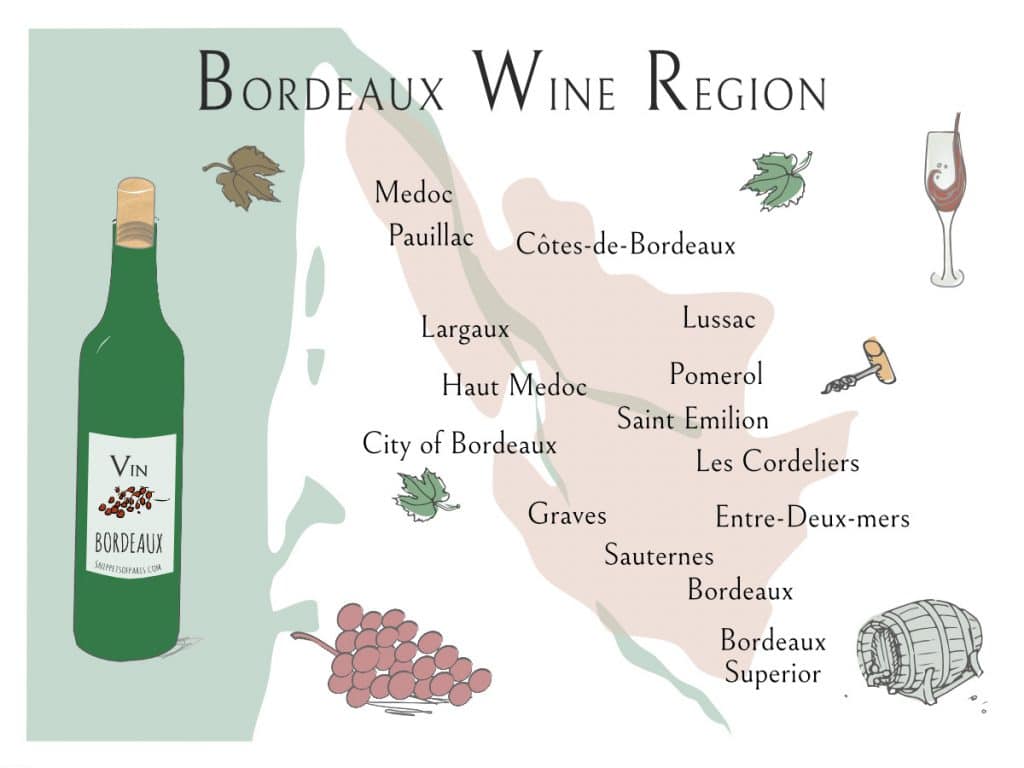
The area has been famous for its viticulture since Roman times. In addition, the region was popular because of its location along one of the pilgrimage routes to Santiago de Compostela.
The wines of Saint-Émilion are typically blended from different grape varieties, the Merlot (60% of the blend), Cabernet Franc (nearly 30%) and Cabernet Sauvignon (around 10%). This fruity red wine has discreet notes of vanilla and spices. You can read more about Saint-Emilion here.
27. Rocamadour
The tiny village of Rocamadour in Occitanie is a UNESCO heritage site that has attracted visitors for centuries, among them pilgrims, kings, and nobility.
It is known for its position, perched 150m high on a hillside overlooking the Alzou canyon. It has been a place of worship since the Middle ages for those to come to pray at the chapel to the Black Virgin after having climbed the 216 steps pilgrims’ staircase.
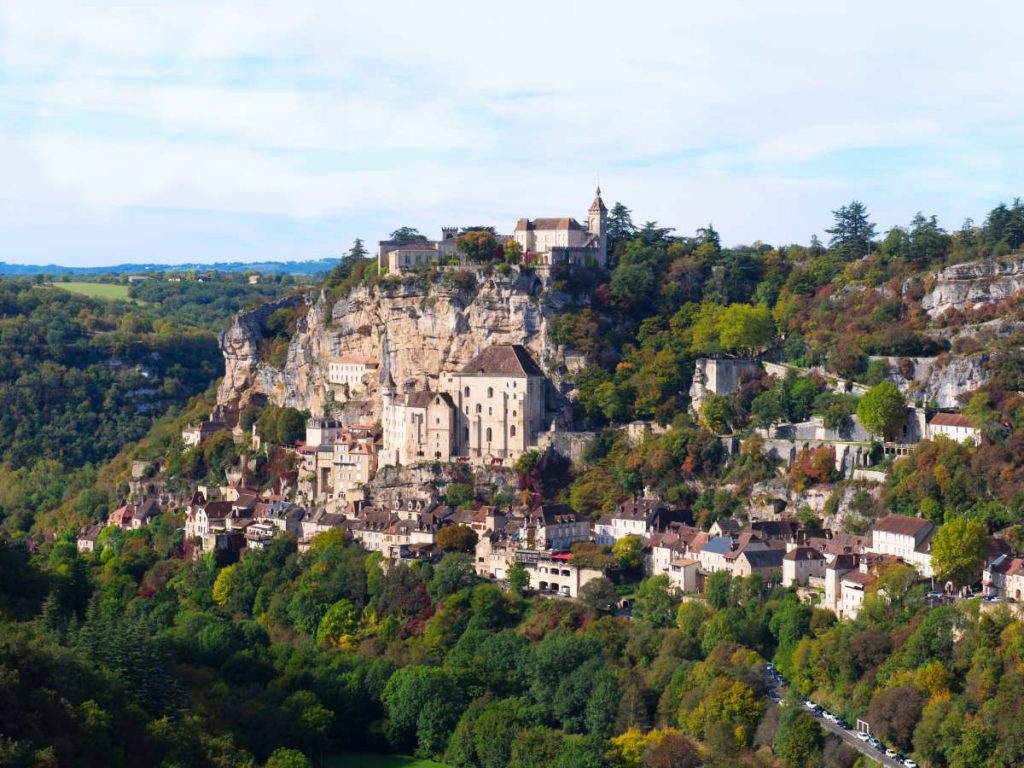
Rocamadour is also one of the stops on the pilgrimage route of Saint-Jacques de Compostelle. You can take a tour to Rocamadour from Bordeaux or Sarlat-la-Canéda .
- French food and drinks
- Best souvenirs
- Top landmarks in France
You Might Also Like
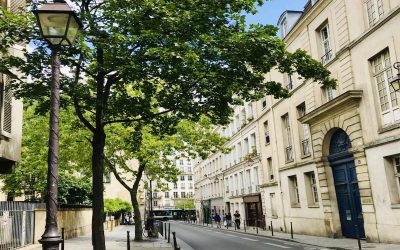
April in France: Weather, travel, and events
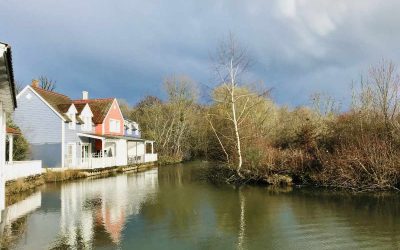
12 Best tips for your Center Parcs family holiday
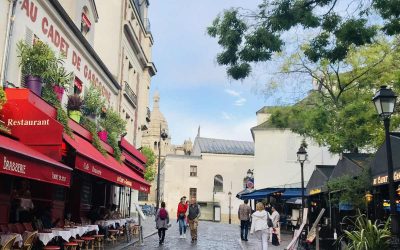
24 Best Tourist attractions in France

What you need to drive in France: 31 Practical tips and requirements
- Paris & Île-de-France
- Alsace & Lorraine
- Bourgogne-Franche-Comté
- Bretagne & Normandy
- Auvergne Rhône Alpes
- Loire Valley
- Northern France
- Nouvelle Aquitaine
- Provence & French Riviera
- Events and holidays
- Facts and history
- Get the Look
- Moving to France
- Appetizers & Starters
- Main dishes
- Side dishes
- Common Questions?
- Newsletters
What To See In Paris
The most important attractions of the French capital
Get inspired to organize your trip to Paris with the most popular places to visit in the city.
No matter if you come for 3 days or 20, this city deserves a visit at all times of the year: in spring and summer to enjoy the “joie de vivre” outdoors; and in the colder seasons to take advantage of its great cultural offer and soak up the bohemian atmosphere in a cafe by the Seine.
The Eiffel Tower is the most famous monument in Paris, and the Louvre Museum is one of the most famous in the world, include them in your visit. But do not leave out other special places in the city such as the Basilica of the Sacré Coeur, at the top of the Montmartre district and with beautiful views of Paris from the top.
A must-see during your visit is the Ile de la Cité , a natural island in the Seine where you will find the Notre Dame Cathedral, the Sainte Chapelle and La Conciergerie. Also, to get to the island you can use the Pont Neuf.
Once you have finished exploring the city, do not miss one of the excursions from Paris.
Places to visit in Paris
There are many places of interest that are part of your mental list of pending dreams. But there are also unnoticed places worth visiting - discover them!
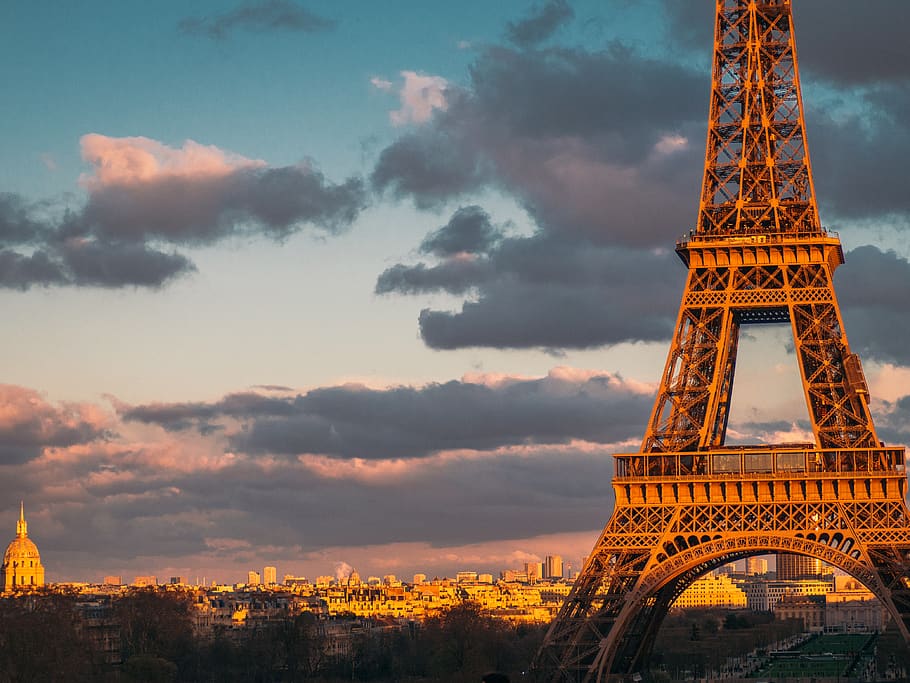
Eiffel Tower
The most famous monument in Paris. It has adorned the capital since 1889. We explain how to visit it.
Buy tickets
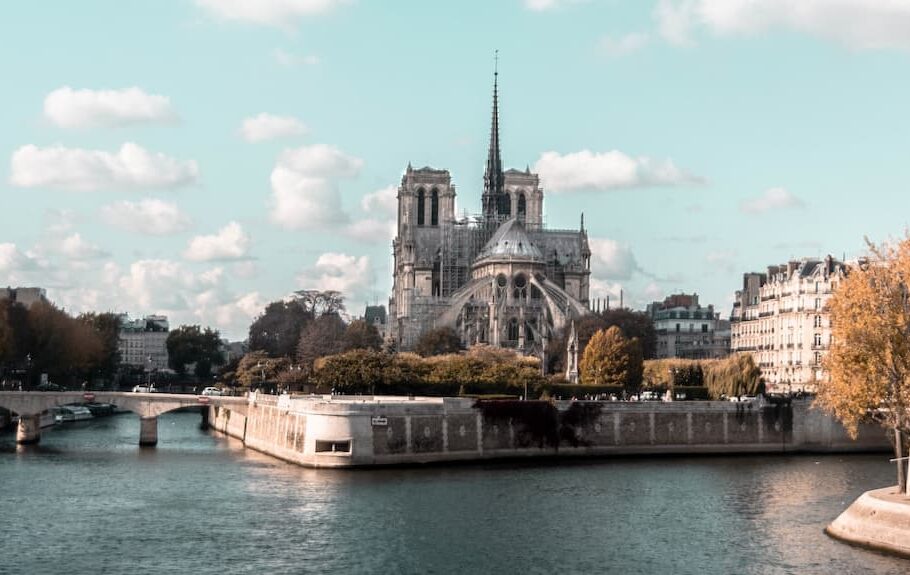
Notre Dame Cathedral
Jewel of French history whose construction took 150 years. Located on the Île de la Cité.

Arch of Triumph
Visit it after walking along the Champs Elysées avenue and enjoy the view of the city from the top.
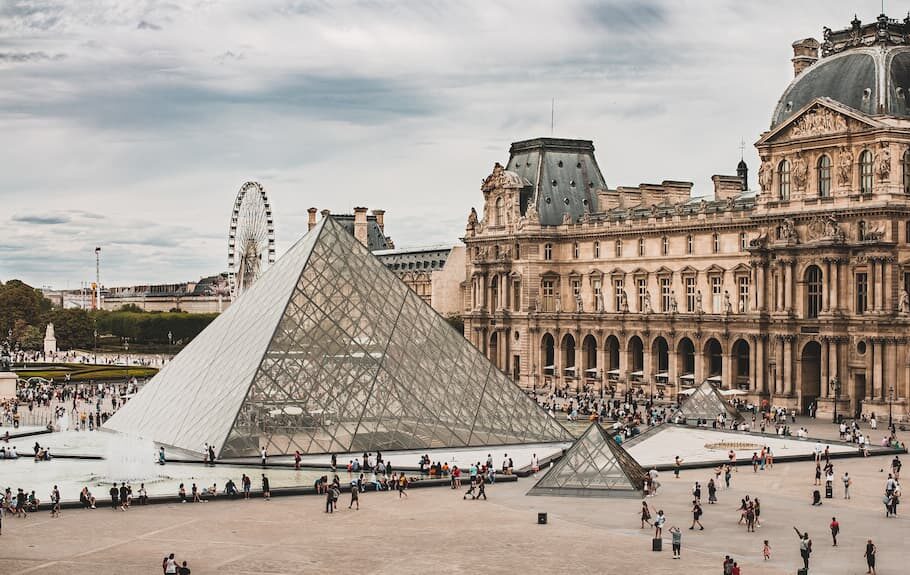
Louvre Museum
Thousands of treasures of world history and the best works of Leonardo da Vinci in one place. This majestic museum is much more than the Mona Lisa.
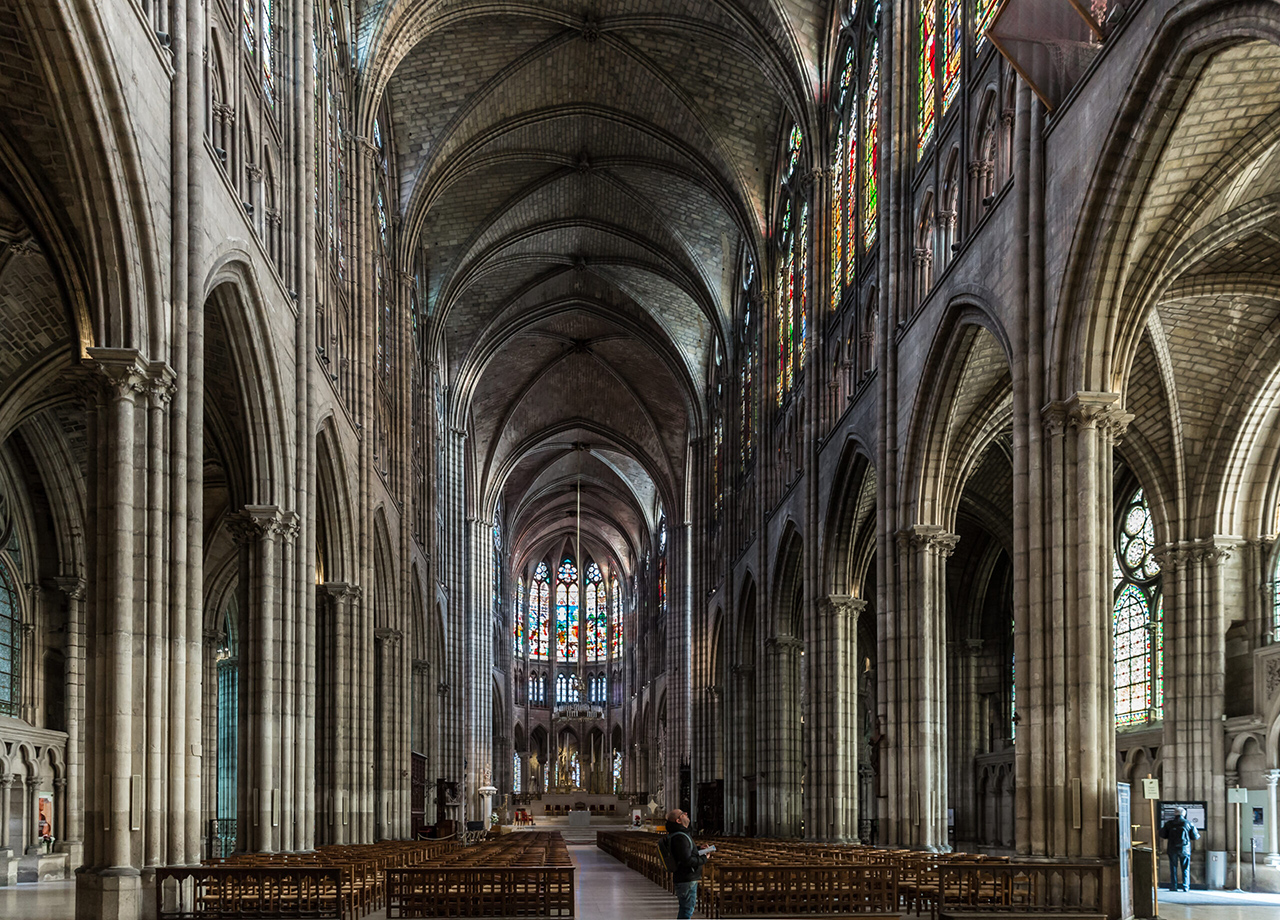
Basilica of the Sacred Heart
Sacre Coeur is worth a visit for its magnificent architecture, charming surroundings and views over Paris.
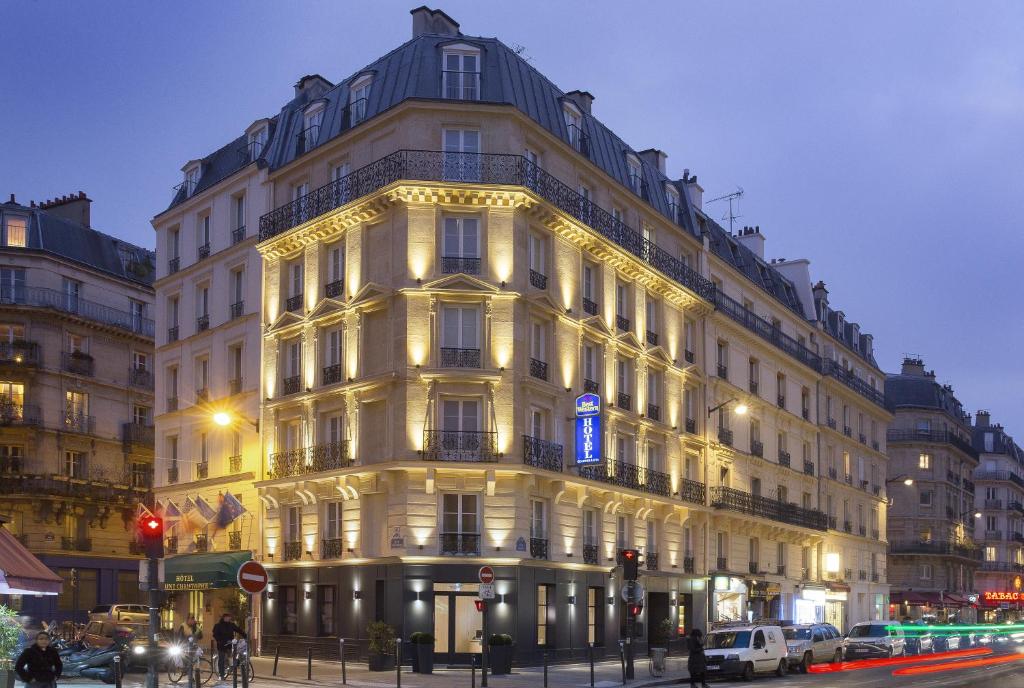
One of the oldest monuments of the city. Resting place of Voltaire, Victor Hugo and Alexandre Dumas.
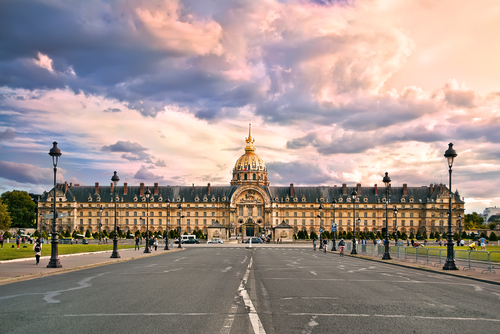
The Invalides
The Palace of the Invalides in Paris housed soldiers and military. Today it houses the Navy Museum and Napoleon’s tomb.
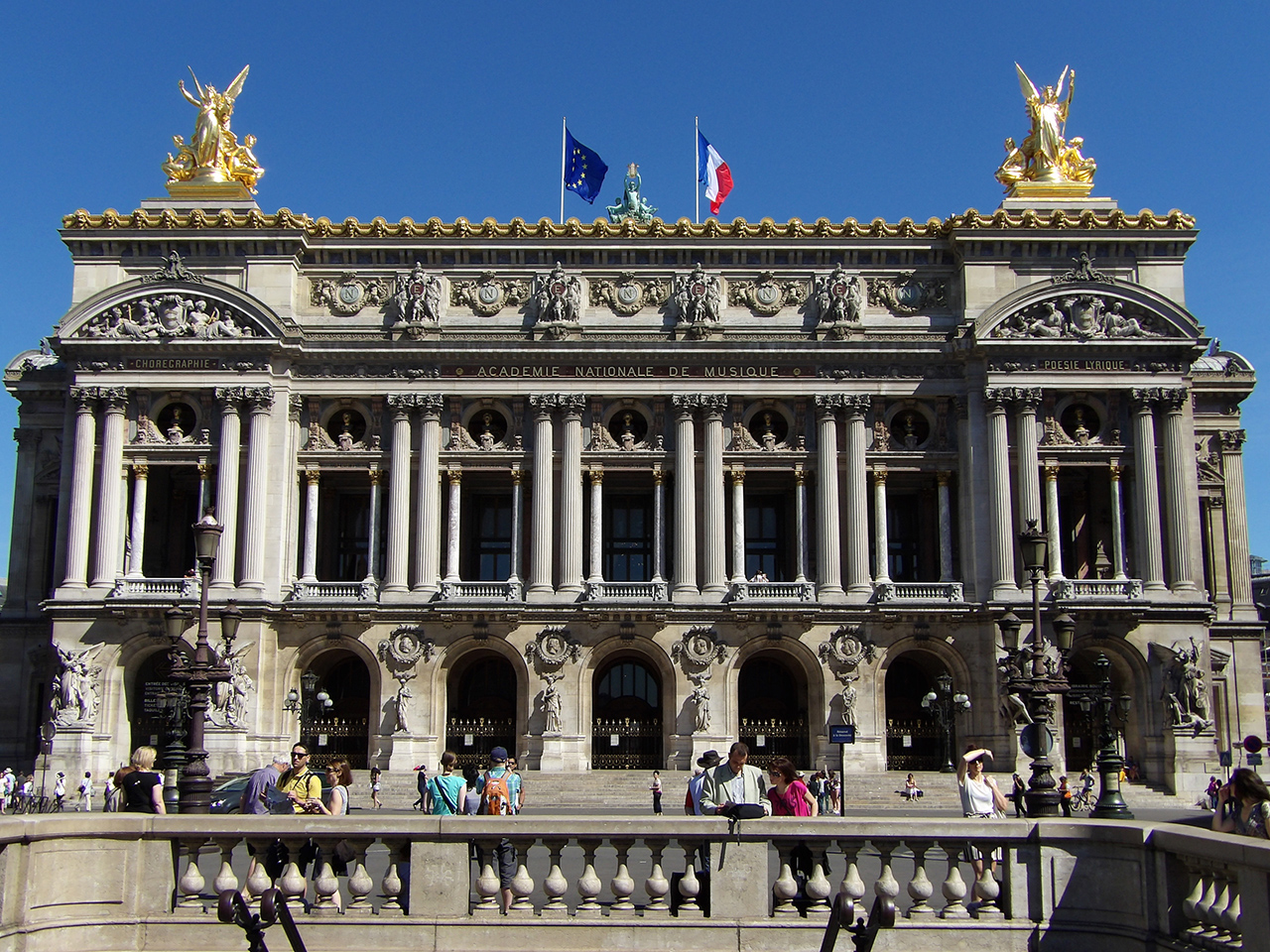
Opera Garnier
The imposing neo-baroque façade along with the marble and gold interiors of the Opera Garnier building in Paris will keep you spellbound.
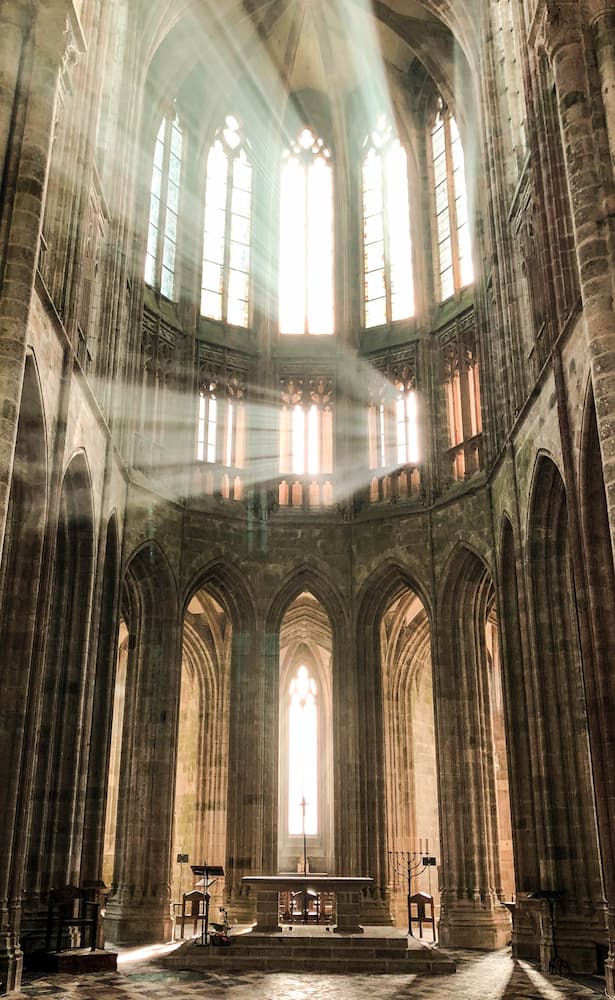
Sainte Chapelle
Jewel of the Gothic world. The Sainte Chapelle was built to keep the relics of the Passion of Christ.

Conciergerie
Former royal residence that served as a prison during the French Revolution. Marie Antoinette is among its most famous prisoners.
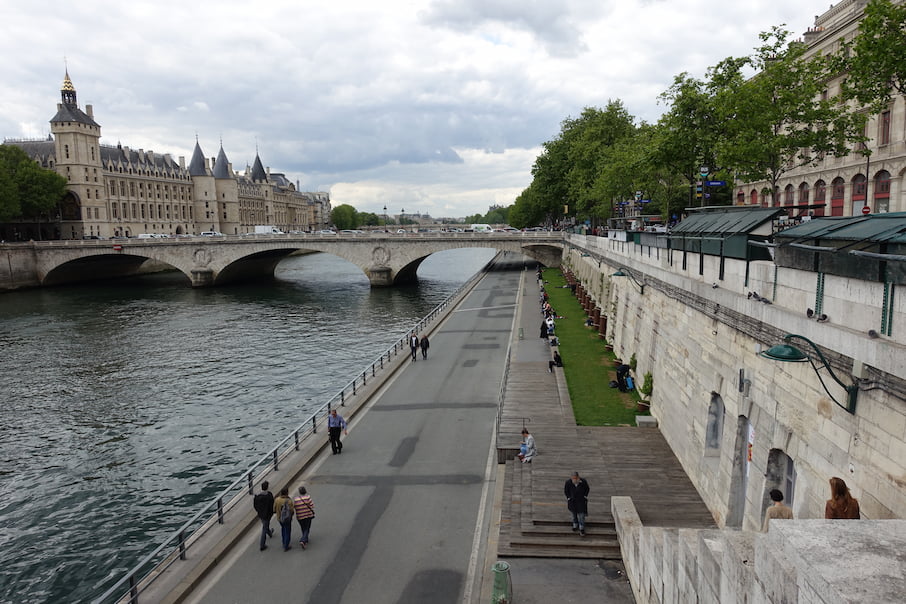
Seine River
The Seine River is one of the most emblematic Parisian icons. Discover its bridges and places to see on the Seine, as well as the activities and boat trips you can do along its course.
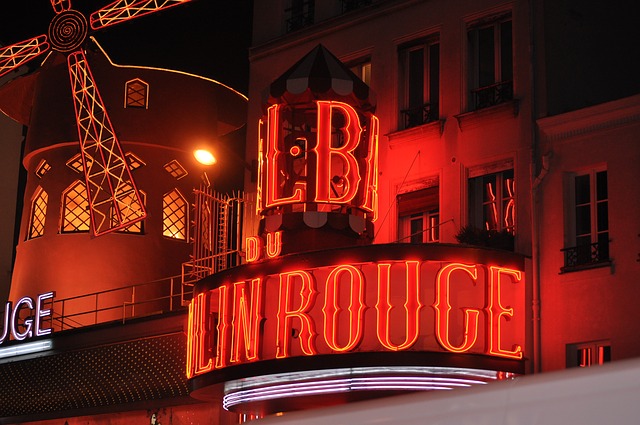
Moulin Rouge
The most famous cabaret in the world. Entertaining Parisians since 1900. It is one of the best options to enjoy Paris at night.
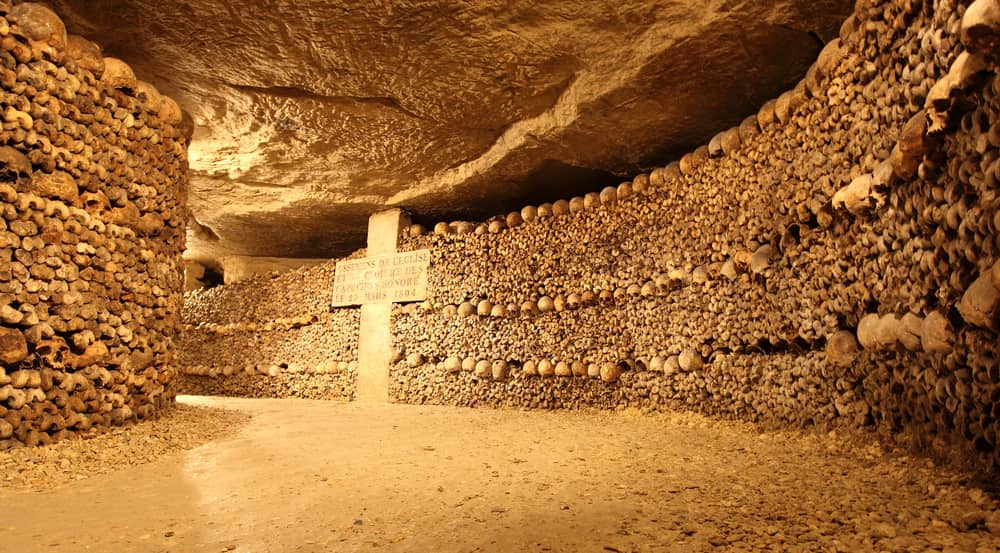
Catacombs of Paris
Subway labyrinth of more than 300 kilometers, where the skeletons of some 6 million people rest.
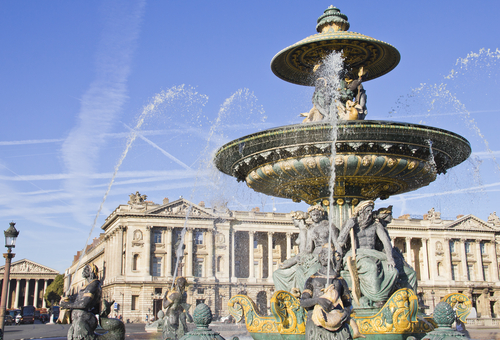
Place de la Concorde
One of the most important public squares in Paris. Here Louis XVI and Marie Antoinette were executed by guillotine.
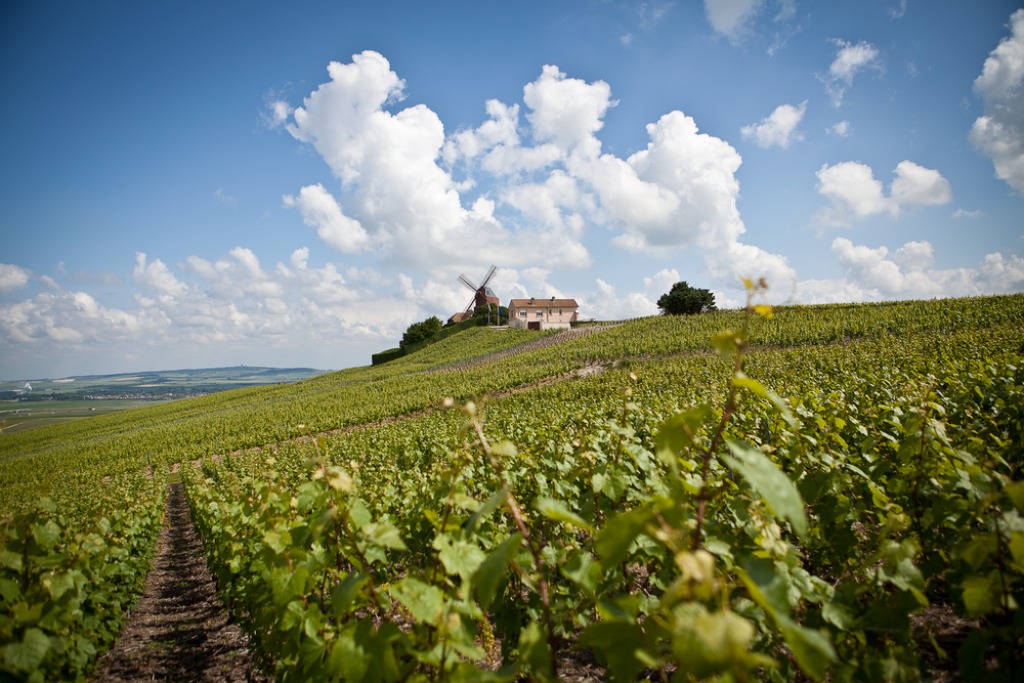
Avenue des Champs Elysées
Champs-Élysées runs through the center of Paris, linking the Place de la Concorde with the Arc de Triomphe. A very popular walk in Paris.
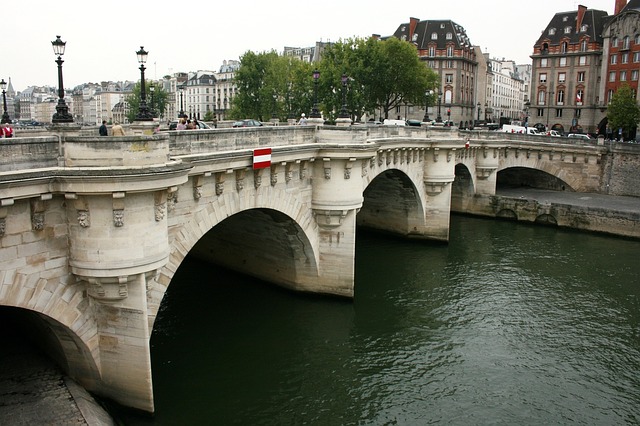
The Pont Neuf is the oldest bridge in Paris, a UNESCO World Heritage Site.
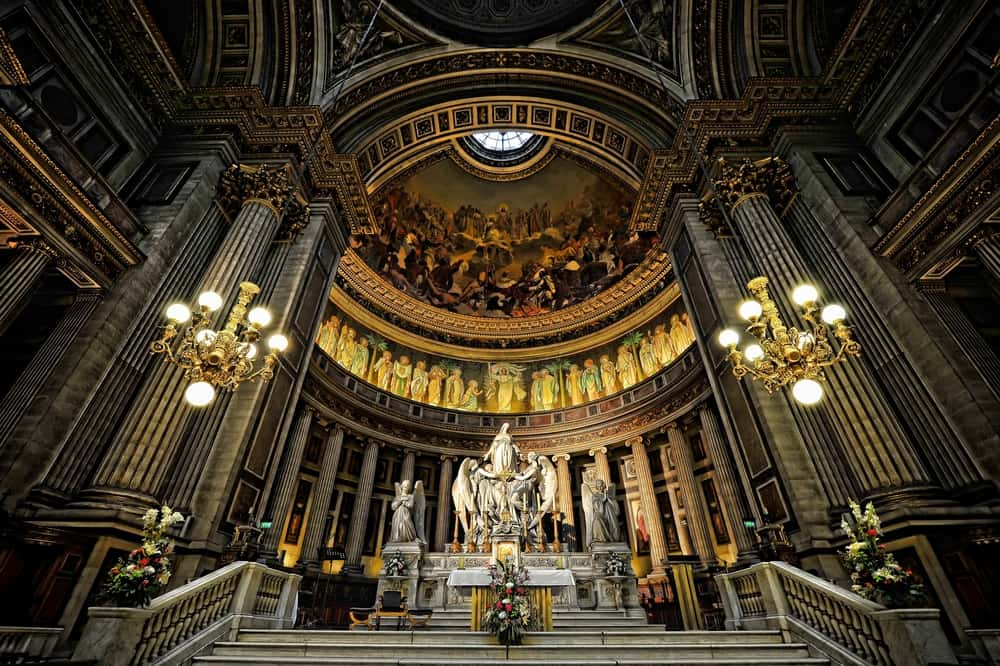
Madeleine Church
Greek style temple erected in honor of the Great French Army by order of Napoleon .
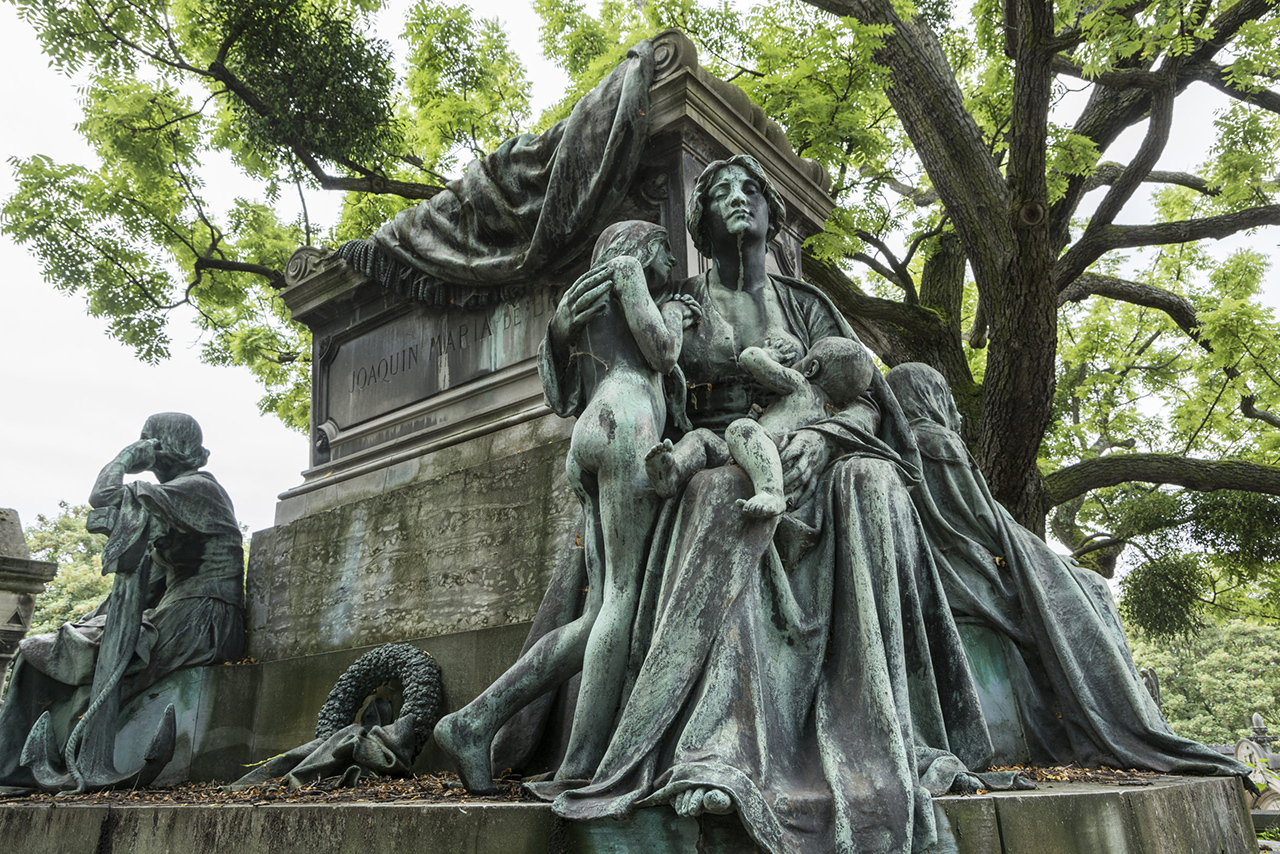
Père Lachaise Cemetery
In the 44 hectares of this famous Parisian cemetery rest figures such as Oscar Wilde, Jim Morrison, Chopin and Édith Piaf.
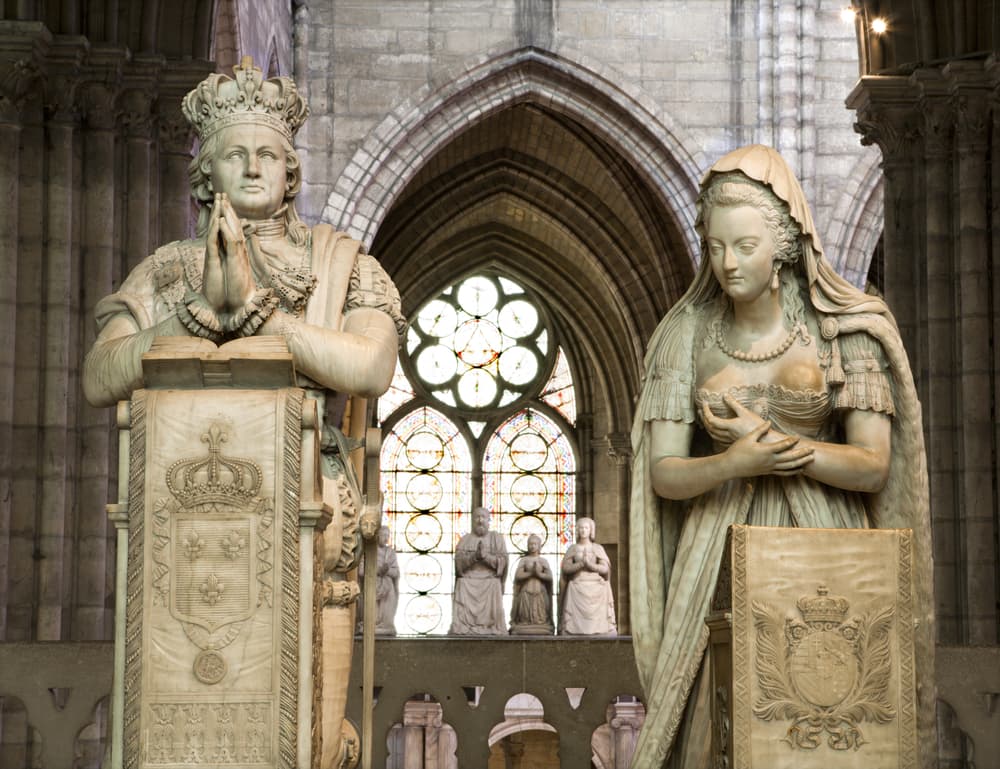
Saint Denis Basilica
Burial place of the French monarchy, including Marie Antoinette. First Gothic temple built in Paris.
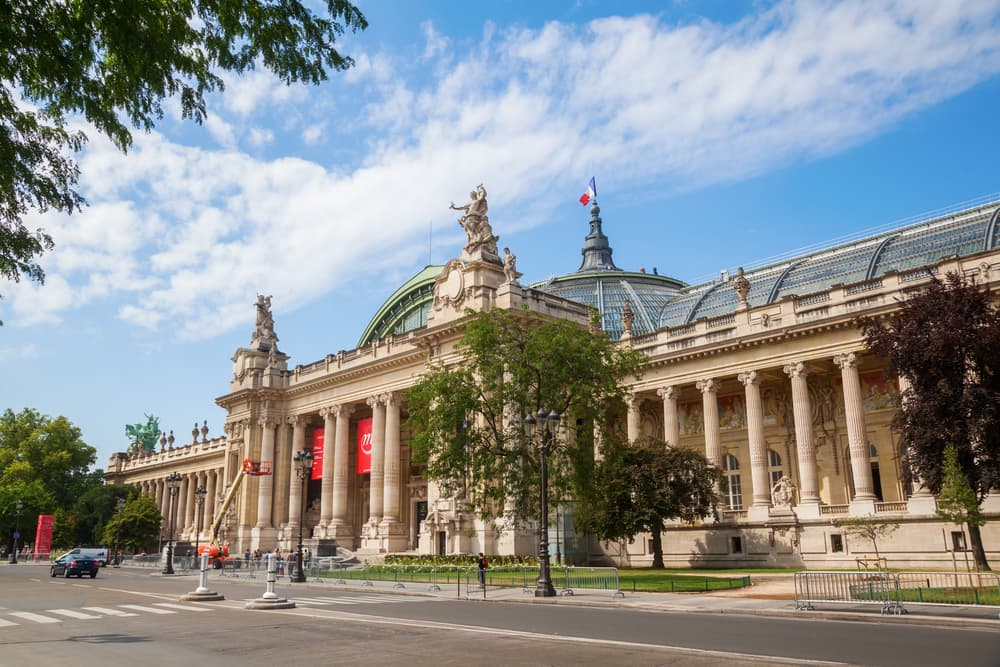
Grand Palace
At the Grand Palais in Paris you can visit temporary and permanent exhibitions inside a structure made for the Universal Exposition of 1900.
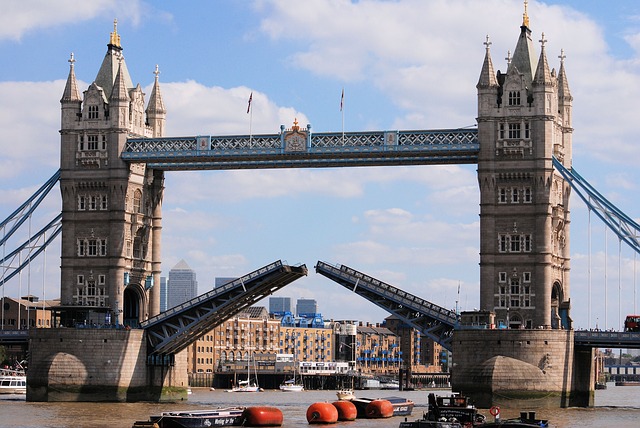
Montparnasse Tower
The most incredible views of Paris. Worth a visit on a clear day.
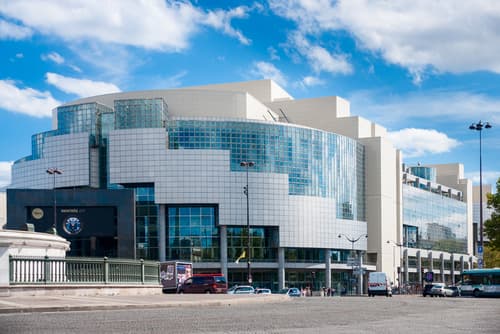
Opéra Bastille
Modern theater in Paris next to the Place de la Bastille. Check their agenda if you want to attend one of their shows during your visit.
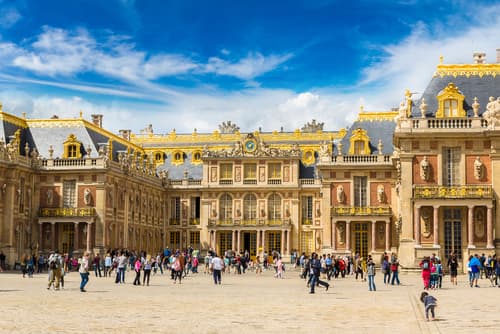
Palace of Versailles
A few minutes from Paris is the Château de Versailles. A recommended excursion. You can buy your ticket alone or combined with transfer.
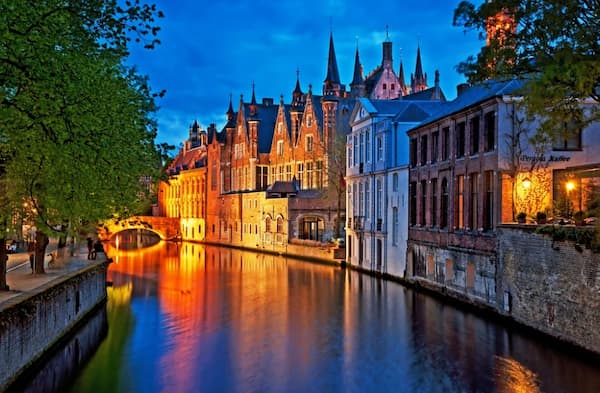
Excursions from Paris
Extend your visit with an excursion to the most charming places near Paris such as Versailles, Bruges, Mont Saint Michel, the Loire Castles or the Champagne region.

- Become a Member
How to Visit UNESCO’s Headquarters in Paris

- ALREADY SUBSCRIBED?
BECOME A BONJOUR PARIS MEMBER
Gain full access to our collection of over 5,000 articles and bring the City of Light into your life. Just 60 USD per year.
Find out why you should become a member here .
Email Address
Name on card

Fill in your credentials below.
Username or Email
Your password
Sign in
• If this is the first time you are logging in please CLICK HERE to create your password.
• If you need help creating an account please CLICK HERE to view our Frequently Asked Questions.
• If you have forgotten your sign in details please CLICK HERE to reset your password.

UNESCO headquarters in Paris. Photo: Andy Quan
A visit to the Paris headquarters of UNESCO , the United Nations Educational, Scientific and Cultural Organization, is well off the beaten path for most tourists, but it would appeal to anyone who wants to see something a little different, who loves architecture and great art, or who could use a dose of peace and understanding! It’s a short walk from the Eiffel Tower, or an even shorter one from Invalides, in the 7th arrondisement.
The last time a Bonjour Paris insider visited UNESCO , it was easier to visit, spend a whole day hanging out, and even having a meal in the cafeteria with probably the best view of the Eiffel Tour in Paris. But these days, it requires a bit more planning.
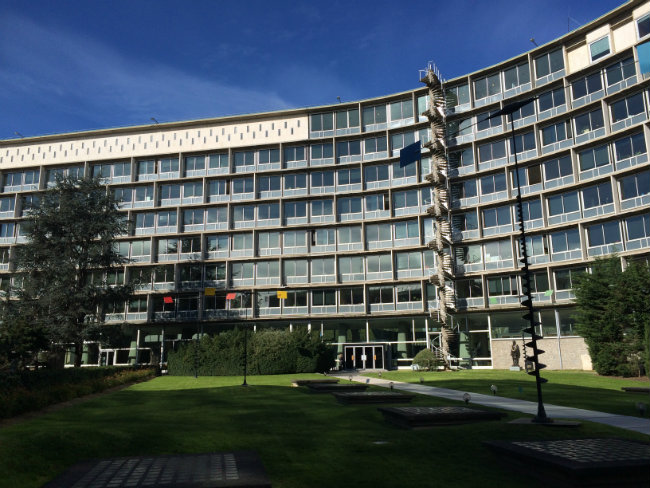
One of the easiest and best ways to visit UNESCO is to visit during the European Night of Museums (or “Museum Night”). On 17 May, UNESCO will open its doors to the public for the 8th consecutive year so you can discover its buildings and art collection. Maybe you can fit in a visit to other venues the same evening. On this fabulous night, museums are open until 1 am, and it’s FREE. This year marks Museum Night’s 10th anniversary and last year, two million visitors took part.
Many of the museums will be hosting special activities. UNESCO is no different. Visitors can check out the temporary exhibition “Art for Peace”, featuring new works by the artist Lin Xiang Xiong, as well as contemporary works where artists from China and Belgium offer a cross-cultural perspective. It’s international understanding in art! Doors open from 8 pm with last admission at midnight. You’ll come in at the main entrance at 7 place de Fontenoy and exit at 125 avenue de Suffren near the Suffren metro station. Bookings not necessary!
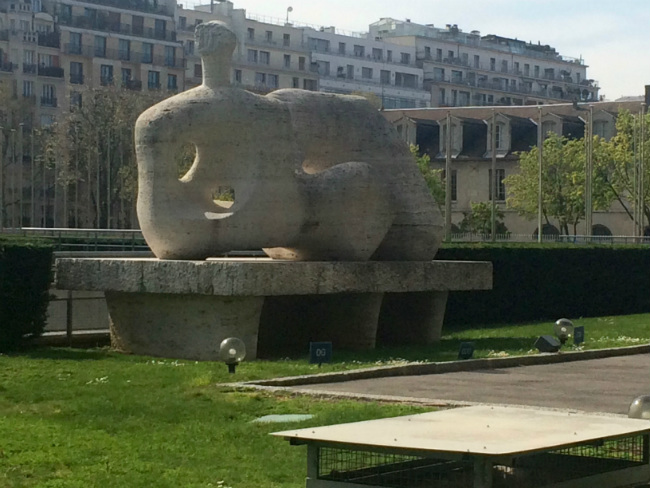
Henry Moore sculpture, “Reclining Figure” at UNESCO headquarters in Paris. Photo: Andy Quan
Another way to visit UNESCO is to come to one of their free cultural and intellectual events that are organized each month. An example of events was a recent jazz concert in honor of International Jazz Day and an exhibition exploring Buddist Sutras! Check out the listings on the official website: www.unesco.org/fr/cultural-events
Otherwise, you can arrange in advance for a public tour; but get some friends together as they’re only for groups. Lasting half an hour, these guided tours take place in French and English, Tuesday through Friday at 10am or 3pm, and include a short presentation of UNESCO, a guided tour of the Japanese Garden, the Meditation Space of Tadao Ando, some parts of the main building and a viewing of some major artwork. It takes some planning though; they ask to be contacted 10 weeks in advance with an email to [email protected] and the date you want to visit.
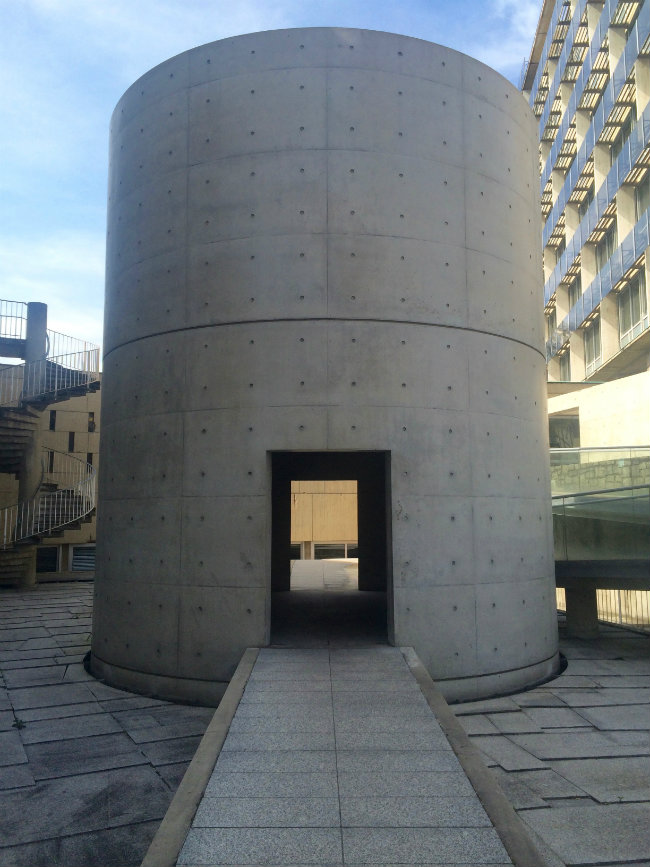
Meditation Space by Japanese architect Tadao Ando. Photo: Andy Quan
Created in 1945, UNESCO’s aim is to “contribute to the building of peace , the eradication of poverty , sustainable development and intercultural dialogue through education, the sciences, culture, communication and information.” Translated into more practical terms, UNESCO advocates for education for all, builds intercultural understanding through such actions as the protection of World Heritage sites, pursues scientific cooperation, and promotes freedom of expression.
Architecturally, the buildings at UNESCO headquarters are fantastic; the most prominent is a ‘three-pointed star’, with three long wings of a building radiating out from the core in a classic 50s design. The site also includes two other buildings and a set of underground offices and hallways, surrounding sunken courtyards. The HQ was almost designed by the famous Swiss-French architect Le Corbusier, but in an archetypal move, three architects from different countries (France, Italy and the United States) were appointed as a less controversial choice.
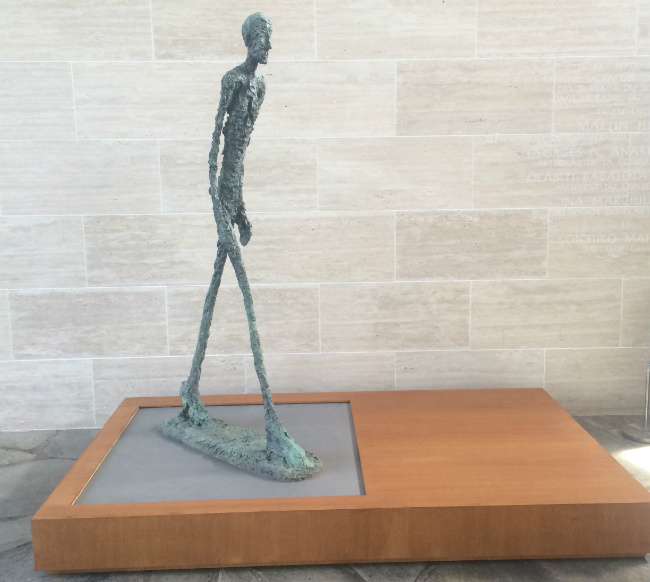
Alberto Giacometti’s sculpture “Walking Man” at UNESCO. Photo: Andy Quan
It’s not just the buildings that are interesting at UNESCO. The headquarters host some of the world’s finest artwork with works scattered throughout the space by luminaries such as Pablo Picasso, Joan Miró and Alexander Calder. One of Giacometti’s Walking Men is located at UNESCO; a version of the same sculpture was the most expensive sculpture in the world from 2010–2015. Henry Moore’s Reclining Figure is not only stunning in its monumental form, but it is also located perfectly on the lawn outside the main building. A focal point for attention, the statue changes character under different angles of the sun.
Quiet and assuming, one of the most stunning artworks is the Meditation Space designed by famed Japanese architect Tadao Ando. Ando works most often in concrete, with an emphasis on form, light and simplicity. A cylinder measuring 21 feet high and wide, the Meditation Space hovers above a pool with rocks that were exposed to radiation from Hiroshima, now irradiated, but with water flowing over them, cleansing the souls of the dead – or the wounds of war. The Japanese garden is also beautiful. Created by the Japanese-American artists Isamu Noguchi in 1958, the garden was created by a sculptor, rather than a landscape architect, thereby tilting the balance between nature and human creativity towards the latter.
So, whether it’s beauty, quiet, art, architecture or cultural events you’re after, find it at UNESCO. Have a good visit.

The gardens at UNESCO headquarters in Paris. Photo: Andy Quan

Lead photo credit : UNESCO headquarters in Paris. Photo: Andy Quan
Related Articles
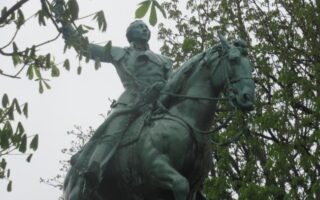
Lafayette: A Lasting Franco-American Friendship

The Paris Olympic Cauldron and Daring Hot-Air Balloons
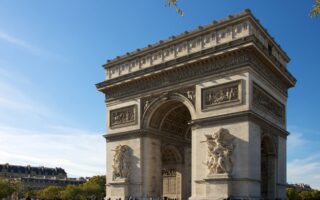
The Smart Side of Paris: Smashing the Arc de Triomphe
By andy quan.
Hailing from Vancouver, Canada, Andy is a writer and editor who has lived in Sydney, Australia since 1999. He’s also lived in Brussels and London, and has had the privilege to live in Paris a few months here and there in recent years. He’s the author of two books of poetry and two of short stories, a reiki practitioner, and one of those people who likes taking photos of their food.
- Trip Advisor
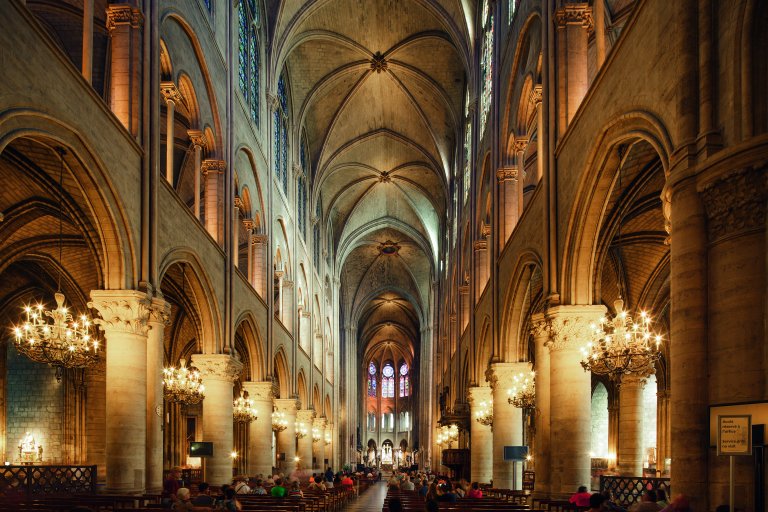
Inside notre Dame Cathedral in Paris Marc Bertrand - Paris Tourist Office
19 UNESCO World Heritage Sites in France

In this post, we're listing some of the 49 wonderful UNESCO World Heritage sites in France. The whole of France is famous for its many architectural and historical monuments, and we are happy to include some of these in our France vacation packages . Of the 1073 sites on the United Nations Educational, Scientific and Cultural Organization’s (UNESCO) list of World Heritage Sites , 49 are in France (as of 2023). It has the fourth largest number of historical sites in the world after Italy (58), China (57), and Germany (52).
France’s UNESCO-listed sites take a variety of forms including historic towns , palaces , castles , religious buildings , forts , canals , and landscapes . These sites can be found spread all across France, so wherever you go, you won’t be far away from one of them. Visit the UNESCO website to find out about the criteria that must be met in order to be awarded UNESCO status.
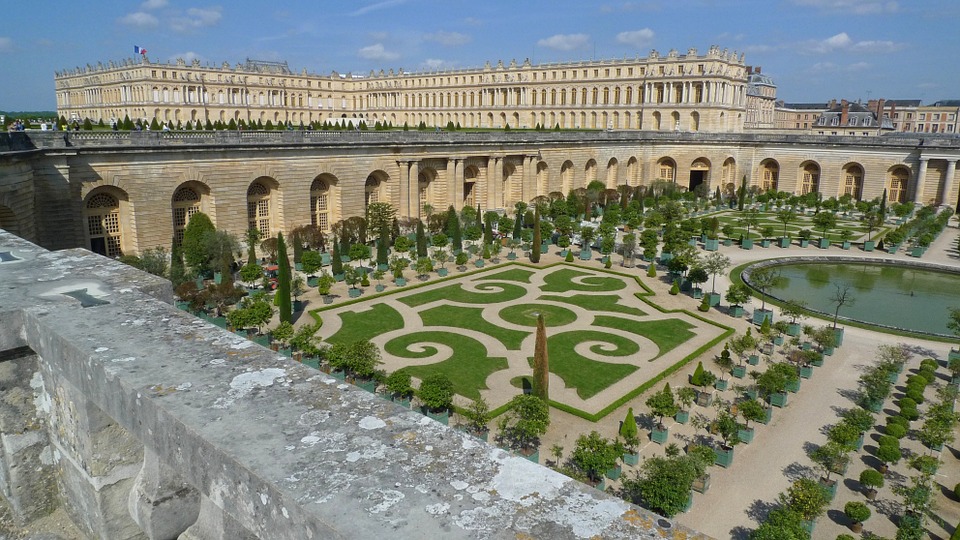
The French formal gardens at Versailles
Here we have listed the sites according to some of the regions we cover in our tours:
UNESCO World Heritage Sites in Paris & Around
There is no shortage of beautiful monuments and incredible architecture in the City of Light. However, when it comes to world heritage sites in P aris , there's actually only one - the Banks of the Seine River. In total, France's capital and the surrounding region of Île-de-France have four heritage sites, three of which are within easy reach of Paris . Also check our post on places you can visit from Paris in a day, with instructions on how to get there.
The Banks of the Seine River
This is the only heritage site in the city of Paris. The evolution of the banks of the River Seine demonstrates the emergence of Paris as a predominant European city. The banks are home to many of Paris’s most iconic landmarks including the Louvre , the Eiffel Tower , the Cathedral of Notre Dame , Sainte Chapelle church , the Place de la Concorde , the Grand Palais , the Petit Palais, the Passerelle des Arts, and several important bridges, including the Pont Alexandre III, the Pont au Change and the Pont au Double. These along with many more bridges and buildings contribute to the romantic ambiance associated with Paris. All the incredible pieces of architecture and engineering have been preserved throughout history and will be for many years to come. The Banks of the Seine were added to the list of UNESCO World Heritage sites in 1991.
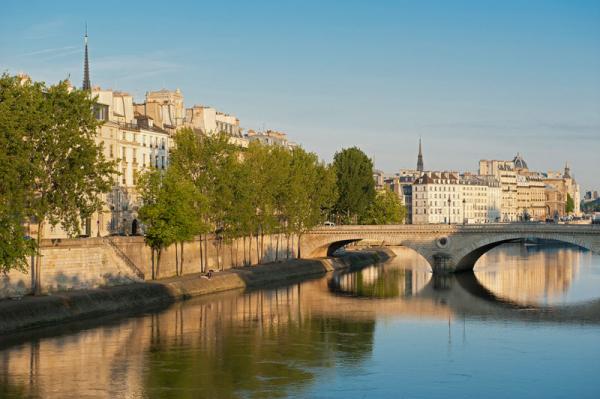
The Seine river banks in Paris - ©Daniel Thierry - Paris Tourist Cffice
The Palace and Park of Versailles
UNESCO inscribed the Palace of Versailles as a World Heritage site in 1979. The year 2019 marks 100 years since the signing of the Treaty of Versailles , marking the official end of World War I, between Germany and the Allies. In previous centuries it was the main residence of Kings Louis XIV, XV and XVI. Originally it was King Louis XIII’s hunting lodge before he decided to turn it into a castle in the 1630s. The palace itself perfectly demonstrates the lives of excess and extravagance led by French royalty at that time.
A majority of the construction and extravagant decoration took place under the watch of Louis XIV, who was much inspired by the beautiful Vaux Le Vicomte castle , belonging to his Superintendent of State Finances, Nicolas Fouquet. The jewel in the crown – so to speak – at Versailles is the magnificent Hall of Mirrors . Mirrors were one of the most expensive luxuries money could buy at the time, yet another display of wealth by ‘the Sun King’. The park and gardens of Versailles expand for 1,976 acres beyond the Palace. Visitors will need the better part of a day to explore them in their entirety, and thus may like to set aside a weekend to visit the Palace and the gardens.
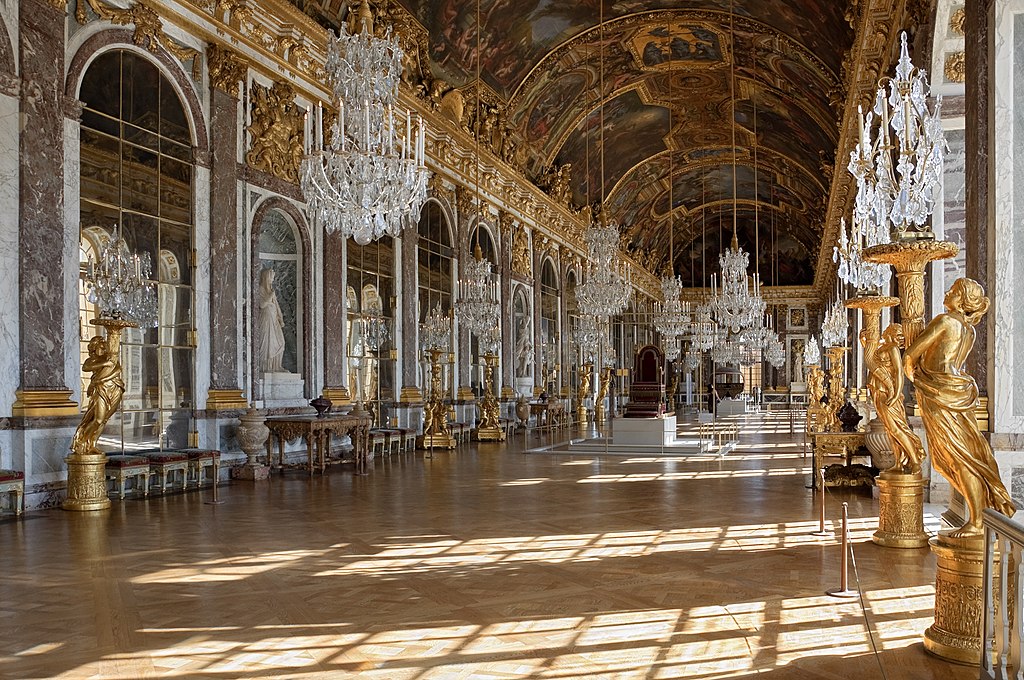
The Hall of Mirrors at the Palace of Versailles
The Palace and Park of Fontainebleau
The magnificent Fontainebleau castle was the residence of French kings, who would often use it as a hunting lodge. It is the only royal castle to have been continuously inhabited for seven centuries, from Louis VII in the 12th century to Napoleon in the 19th. Visitors gain a fascinating insight into French history at Fontainebleau, with an ornate style of décor similar to that of Versailles. For example, the horseshoe staircase curling up to the main door is particularly impressive. In the 16th century, King François I decided to transform, expand and embellish the castle, creating an Italianate palace which combined Renaissance and French artistic styles. The King declared the palace a ‘New Rome’.
Fontainebleau typically receives fewer visitors than Versailles and therefore does not have long queues. This offers people more flexibility for visiting at any time of day. The castle grounds are huge, like Versailles, and the vast Fontainebleau forest adjacent to the castle offers opportunities for hiking, cycling, horseback-riding, or simply a pleasant stroll in the fresh country air. Fontainebleau received its UNESCO status in 1981.
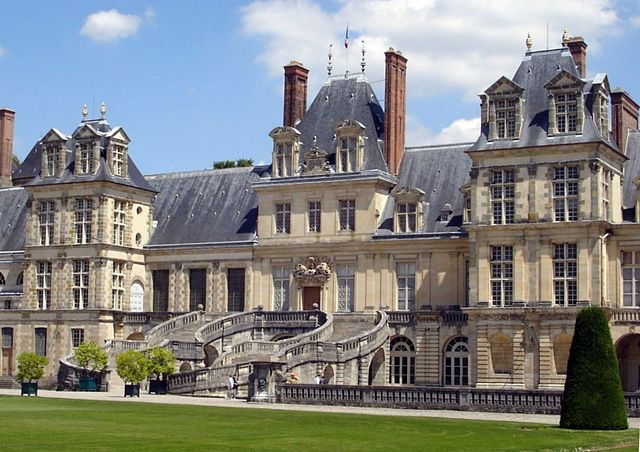
Fontainebleau castle
Provins, A Town of Medieval Fairs
The fortified medieval town of Provins was inscribed as a UNESCO World Heritage site in 2001. The powerful Counts of Champagne once ruled this region, which is about 57 miles southeast of Paris. Its medieval trade fairs and wool industry made it an important center of international trade.
The old town is surrounded by fortified gates and ramparts and it could easily have been frozen in time. The Cesar Tower is a symbol of the power of the ruling Earls. Visitors may climb to the top and enjoy sweeping panoramic views over the town and surrounding countryside. Many visitors enjoy wandering through the village admiring the medieval architecture while taking some photos. Those looking for some entertainment might enjoy La Legende des Chevaliers show, a medieval re-enactment of knights in battle , or Les Aigles Des Remparts , a birds of prey show . The Grange aux Dimes is also worth a visit for people wanting to learn more about the medieval wool trade. In addition, naturalists visiting the town in the late spring/early summer should also pay a visit to the Rose Gardens , which will be in full bloom at this time of year.
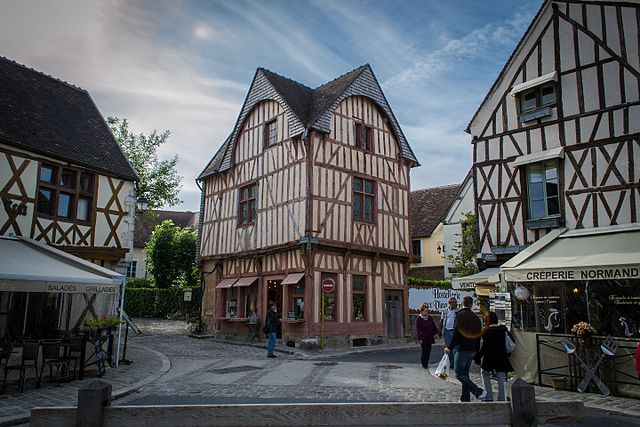
The medieval town of Provins
UNESCO World Heritage Sites in Normandy
There are three UNESCO World Heritage sites in Normandy :
Mont-Saint-Michel and its bay
Located in the department of Manche in the region of Basse-Normandie, between Normandy and Brittany, the islet of Mont Saint Michel is the ‘Wonder of the West’. This Gothic Benedictine abbey and its village were dedicated to St Michael. There are many legends associated with it. The abbey was constructed between the 11th and 16th century in a pre-Romanesque architectural style with a number of gothic structures and is also known as a 'Marvel of the Western World.' The abbey was used as both a prison and a place of worship at different times. It became a UNESCO World Heritage Site in 1979.
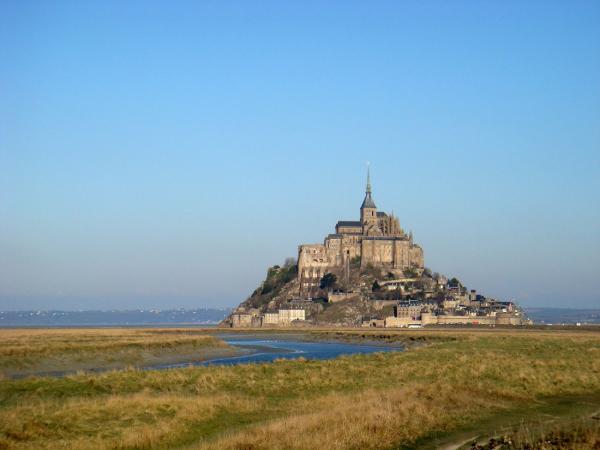
Mont Saint Michel in Normandy
King François I founded the city and port of Le Havre on Normandy’s coast in 1517. However, large areas of the city were destroyed during World War II, and the city was rebuilt by the architectural firm of Auguste Perret between 1945 and 1964. Auguste Perret personally designed the town hall and St Joseph’s Church. On July 15th 2005, as a commendation of the reconstruction work, Le Havre became one of the few contemporary sites in Europe to be listed a UNESCO World Heritage Site. Particularly notable in the modern architecture is the use of precast concrete and the straight lines of the design.
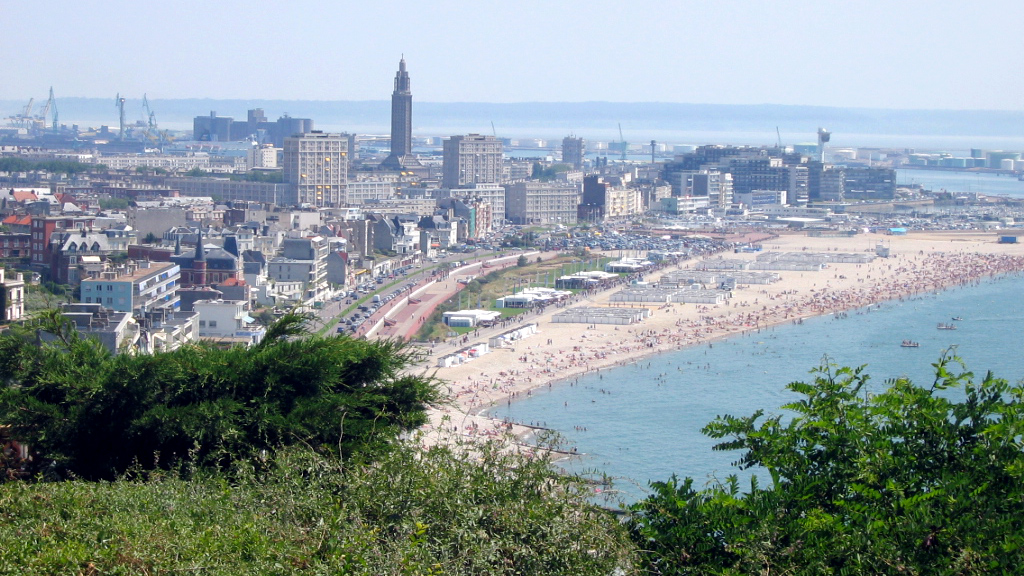
Panoramic view of Le Havre
Fortifications of Vauban
The watchtowers at Saint Vasst la Hougue are one of 12 groups of fortified buildings and sites located along the borders of France . They were designed by Vauban and in the 17th century and were collectively awarded UNESCO status in 2008.
Sébastien Le Prestre de Vauban - later the Marquis de Vauban and commonly referred to as just ‘Vauban’ - was a French military engineer who lived from 1633 to 1707. He served Louis XIV, who commissioned him as a Marshal of France, a distinction awarded to generals for exceptional achievements.
One of the most important engineers of his time, Vauban was inspired by fellow military engineer Blaise François Pagan's text "Les Fortifications". He advised King Louis XIV on how best to consolidate France's borders to make them more defensible, and this became a key component of French policy. He also advocated retreating from certain areas to create a stronger, less porous border. This was considered a radical concept at the time. Vauban's concepts remained the dominant model for fortification and siegecraft for nearly 100 years thereafter.
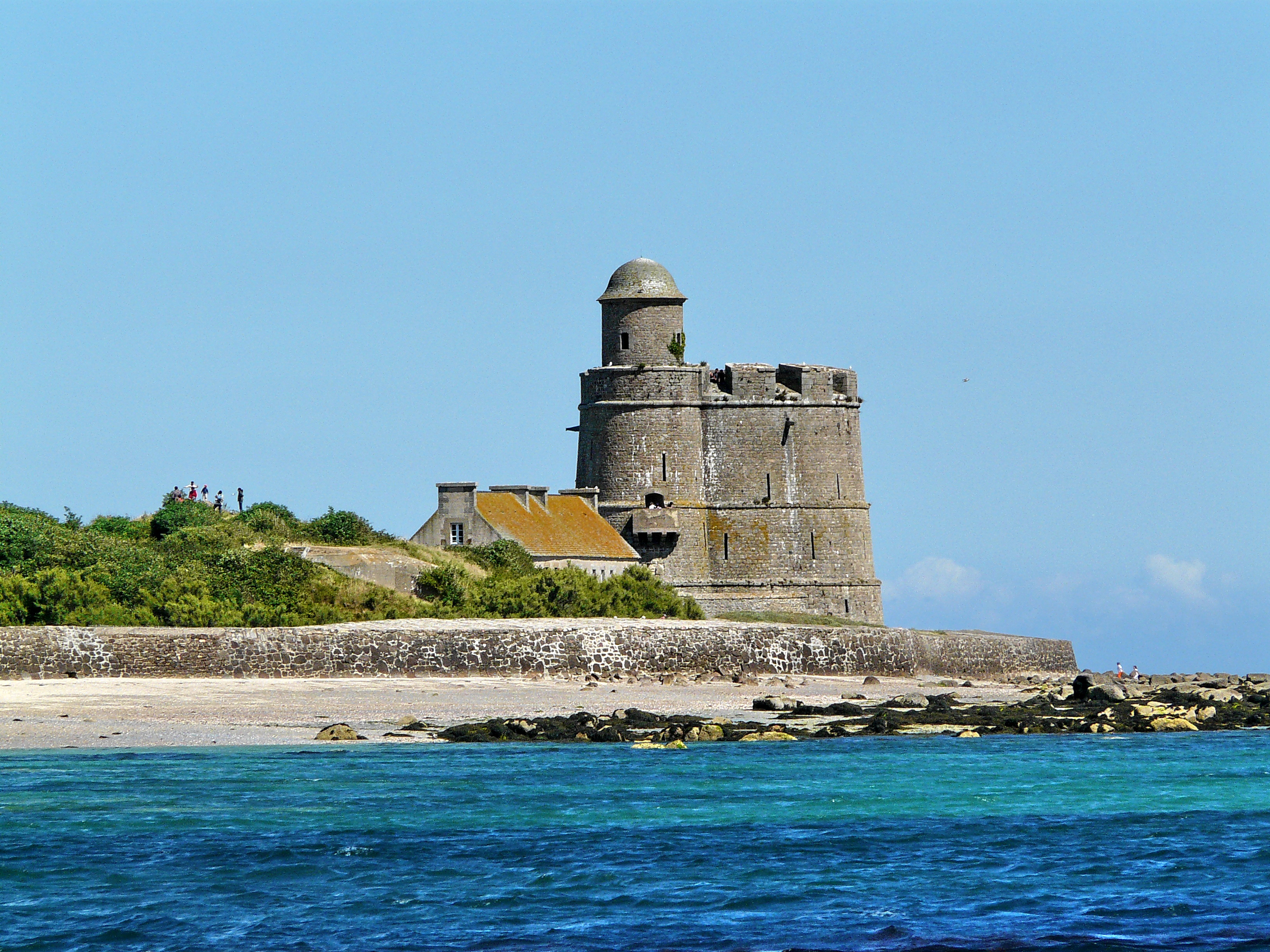
The Vauban watchtowers at Saint Vasst la Hougue on the isle of Tatihou
Other locations in Normandy, including the World War II landing sites, are expected to become World Heritage sites in the near future.
UNESCO World Heritage Sites in the Loire Valley
The Loire Valley has three UNESCO World Heritage sites.
The Loire Valley’s unique landscapes between Sully-Sur-Loire and Chalonnes
As the France Just For You ‘Head Office’ ( Emilie and Guillaume ’s home) is in the Loire Valley, we can attest to the fact that the heart of castle country deserves its status as one of France’s UNESCO World Heritage Sites. The gorgeous Loire Valley has an exceptional and beautiful cultural landscape . It contains historical towns and villages from across the centuries, including Blois, Chinon, Orleans, Saumur, Tours and some of the most beautiful villages in France . The 300+ châteaux are the magnificent stars scattered throughout the Loire Valley, across cultivated land that has developed from centuries of interaction between the inhabitants and their physical environment, in which the Loire River has played a significant role. The Loire Valley became a UNESCO World Heritage Site in 2000.

Springtime in the Loire Valley
Chartres Cathedral
In 1979, Chartres cathedral was inscribed as a UNESCO World Heritage site. It has changed very little since its construction was finished in the 13th century, and many of the original stained glass windows have remained intact. UNESCO refers to the cathedral as " the high point of French Gothic art ". The huge cathedral dominates the small town of Chartres, which lies 50 miles southwest of Paris. Some of this wonderful cathedral’s defining characteristics are its flying buttresses , which dominate the exterior of the cathedral. These help support the whole structure, and meant that the architects were able to increase the size of the stained glass windows significantly.
Another of the cathedral’s key imposing features are its contrasting spires , one a pyramid shaped from around the year 1160, and a taller more decorative and ornate spire which was constructed later on in the early 16th century. Hundreds of sculpted figures illustrating well-known theological themes and stories adorn the building’s three façades, and both Christian pilgrims and secular tourists find this historical masterpiece of great interest. The cathedral’s most famous relic is the Virgin Mary’s Sancta Camisa , believed to be the tunic she wore at the birth of Jesus Christ.
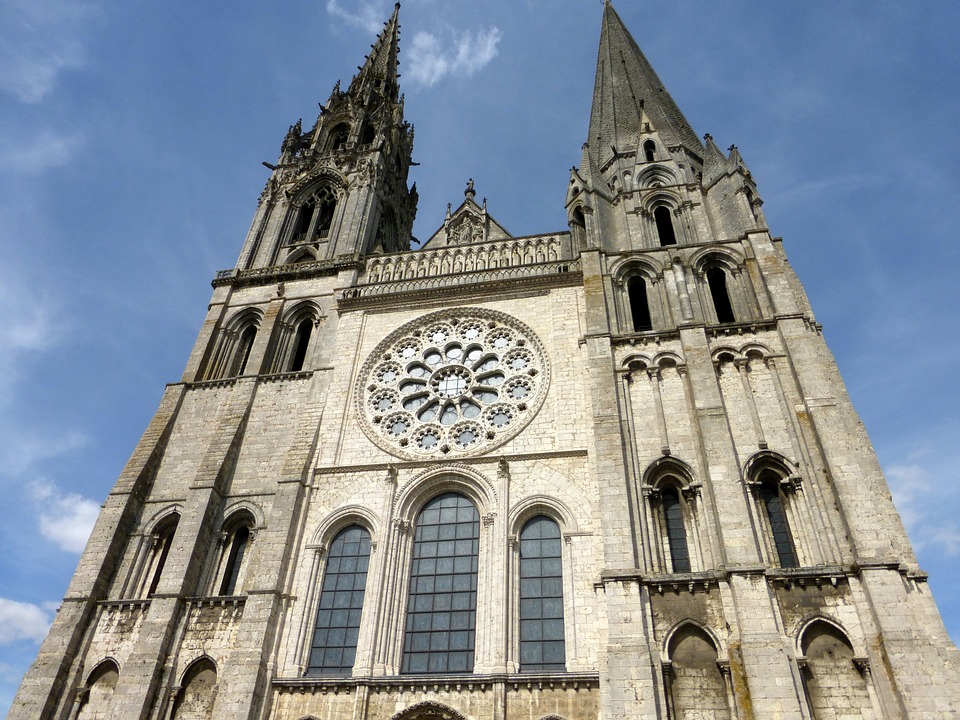
Chartres cathedral
Bourges Cathedral
Bourges Cathedral is also known as the Cathedral of St Etienne of Bourges . It became a World Heritage site in 1992, and according to UNESCO is another of " the great masterpieces of Gothic art" . The present cathedral replaced the original structure, remains of which exist in the crypt. Documentary evidence suggests that construction on the current structure began in the late 12th century.
Aside from the sheer scale of the building, visitors can also admire the stained glass windows , the Romanesque carved portals and exquisitely sculpted façades , and the flying buttresses surrounding the cathedral , which are far more slender-looking and efficient than the heavier ones at Chartres. A particularly interesting feature is the astronomical clock , which was installed to mark the baptism of Charles VII's son, the future King Louis XI, in November 1494. At this time, the royal court was based in Bourges.
The cathedral is situated in what was the northeastern corner of the former Gallo-Roman walled city. Evidence suggests that the site has been the location of the town’s main church since historical records began.
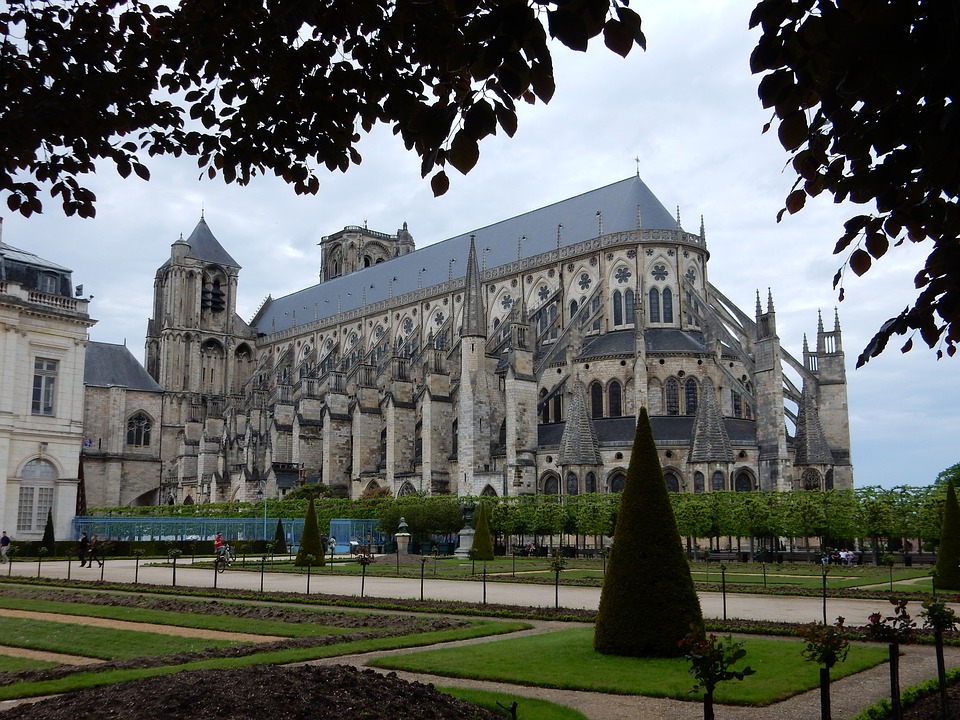
Bourges cathedral
UNESCO World Heritage sites in Burgundy
The region of Burgundy is home to four UNESCO heritage sites:
The Great Saltworks of Salins-les-Bains and The Royal Saltworks of Arc-et-Senans
The Royal Saltworks of Arc-et-Senans , near the town of Besançon , was the first significant achievement of industrial architecture. Built by Claude Nicolas Ledoux in the late 18th century during the era of the Enlightenment, the focus at the time was on the ideal of progress. The semicircular design of the enormous complex was intended to facilitate the organization of work in a logical and hierarchical way. Originally the plan was to build an ‘ideal city’ to follow on from this achievement, but this was never realized, possibly due to the French Revolution.
The Great Saltworks of Salins-les-Bains was active for nearly 200 years before closing in 1962. From 1780 to 1895, salt water from Salins-les-Bains travelled through 13 miles of wooden pipes to the Royal Saltworks of Arc-et-Senans. Its location near the dense Chaux Forest ensured a constant supply of wood for fuel.
Visitors can walk around the saltworks and discover its history and why it became a listed site in 1982. Under Salins-les-Bains, there is an underground gallery dating back to the 13 th century, as well as a 19 th century hydraulic pump that still works. At the time, the salt was known as ‘ White Gold ’, and the boiler house gives visitors a sense of the hard labor involved in collecting it.
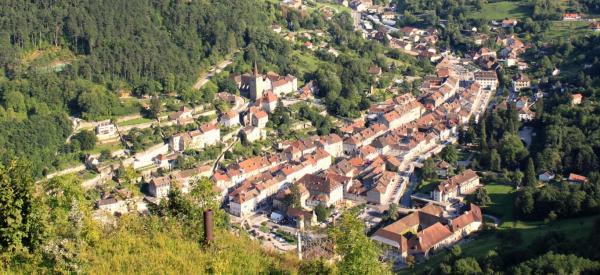
Salins-les-bains
The Climats, vineyards and terroirs of Burgundy
The Climats of Burgundy are the worldwide birthplace of terroir-based viticulture (grape-harvesting) and were inscribed as World heritage sites by UNESCO in 2015. They have become a model for all those who want to identify their wine to the place where it is produced . The 1,247 Climats are delimited areas of land separated by stone walls, and comprise the mosaic of vineyards stretching 37 miles across the slopes of the Côte de Nuits and the Côte de Beaune. For this reason they are part of a powerful, deeply-rooted local culture. Each Climat has a name, which is now cast in stone in the appellation d'origine controlee system. Through careful human cultivation over the centuries, these vineyards have become renowned throughout the world.
The unique diversity of soils, the natural terraces at varying altitudes, the different types of vines that are cultivated, as well as the varied exposure to the sun all give each Climat its own identity, with unique tasting characteristics. This accounts for the huge and varying range of Burgundy wines, reflecting their place of origin and the winemaker’s skills and savoir-faire . Burgundian winegrowers have shown an incredible determination to so precisely link a wine to its place of origin and production as in Burgundy. They work with two wine varietals, Pinot Noir and Chardonnay
The Climats are bookended by the beautiful towns of Dijon to the north and Beaune to the south , both of which are included in our self drive tours of Burgundy.
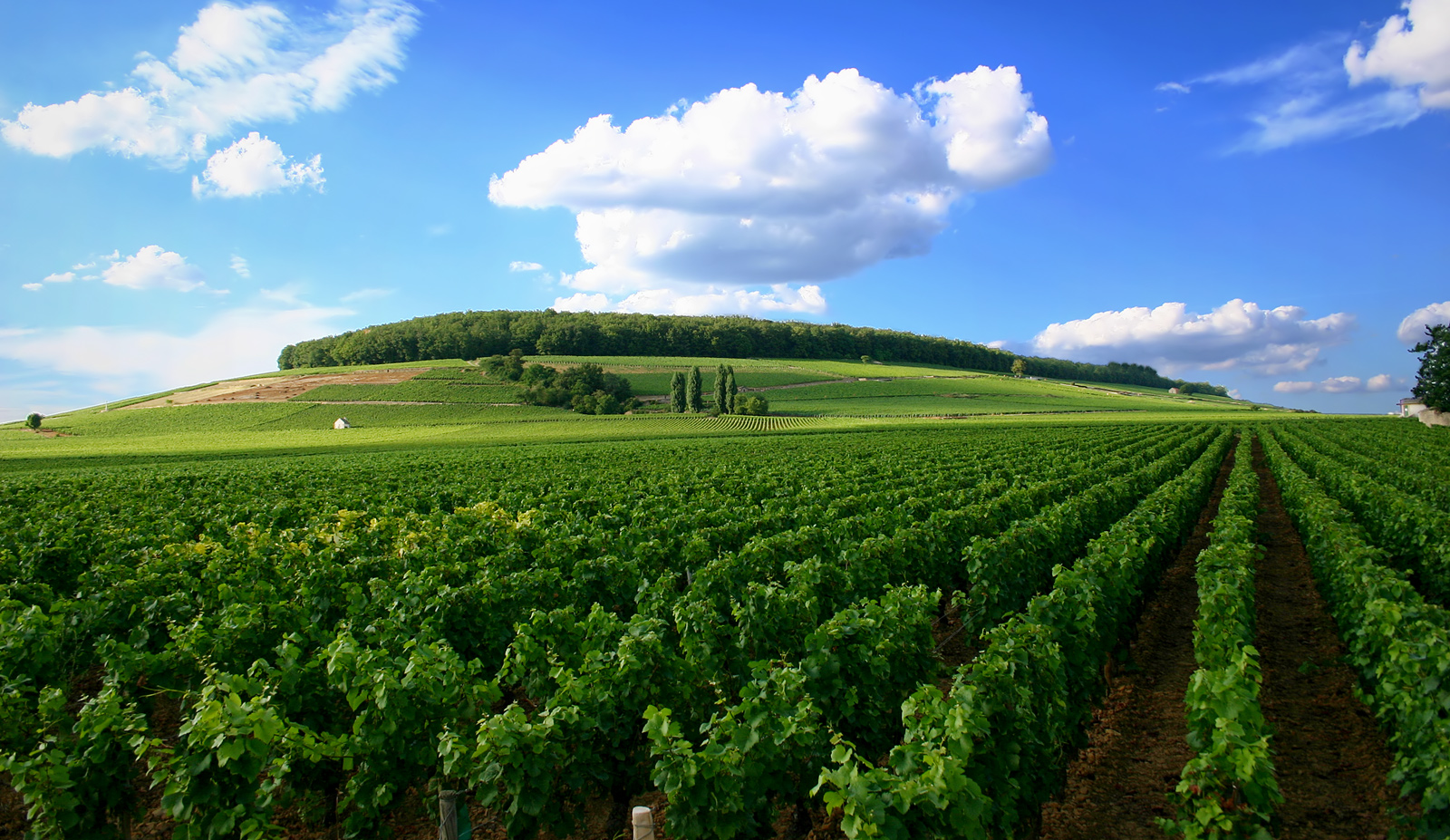
Côte de Nuits vineyards. ©Photo: Stefan Bauer
The Cistercian Abbey of Fontenay
The first communities of Cistercian monks believed in the ideal of self-sufficiency. The austere Romesque-Gothic architecture of the Cistercian Abbey of Fontenay, founded in 1119 by Saint Bernard, illustrates this ideal perfectly through its church, cloister, dovecote eating and sleeping quarters, bakery and ironworks. All of the building’s original features remain intact apart from the refectory. Fontenay Abbey is located about an hour’s drive northwest of Dijon and accepts visitors all year round (but check the website for opening hours, which vary depending on the time of year). From April through November the opening hours are 10 a.m. to 6 p.m. every day. Guided tours are only available at this time of year and start at 10am, 11am, 12pm, 13:45pm, 14:45pm, 4pm, and 5pm. Entrance including a guided tour costs 12.50 euros. There are TGV trains from Paris to the nearest town of Montbard , which is about 3.5 miles away from the abbey.
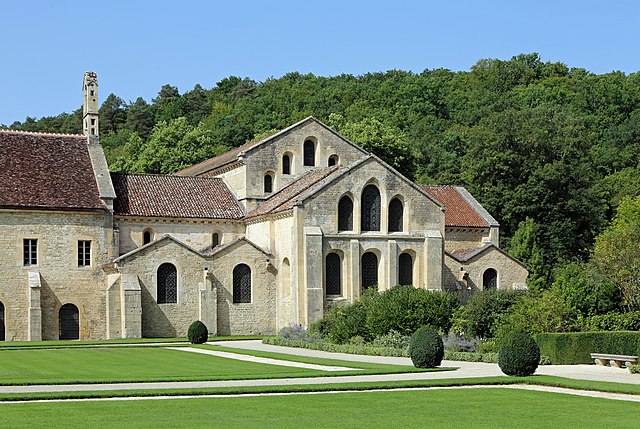
Fontenay Abbey. ©Photo: Marc Ryckaert
Vezelay, Church and Hill
The Benedictine abbey of Vézelay is located in northern Burgundy, about an hour and a half’s drive west from Dijon, and was added to the list of UNESCO World Heritage sites in France in 1979. It is a famous place of pilgrimage, as it claims to hold the relics of Mary Magdalene , which were apparently acquired a short time after its foundation in the 9th century. In 1146, St Bernard of Clairvaux, a French abbot and a major leader in the reform of Benedictine monasticism that led to the formation of the Cistercian order, preached the Second Crusade there. In 1190, Richard the Lion-Heart and Philip II Augustus used the abbey as their meeting point as they departed for the Third Crusade. The sculpted capitals and portal of the 12th-century monastic church, Madeleine of Vézelay, make it a masterpiece of Burgundian Romanesque art and architecture.
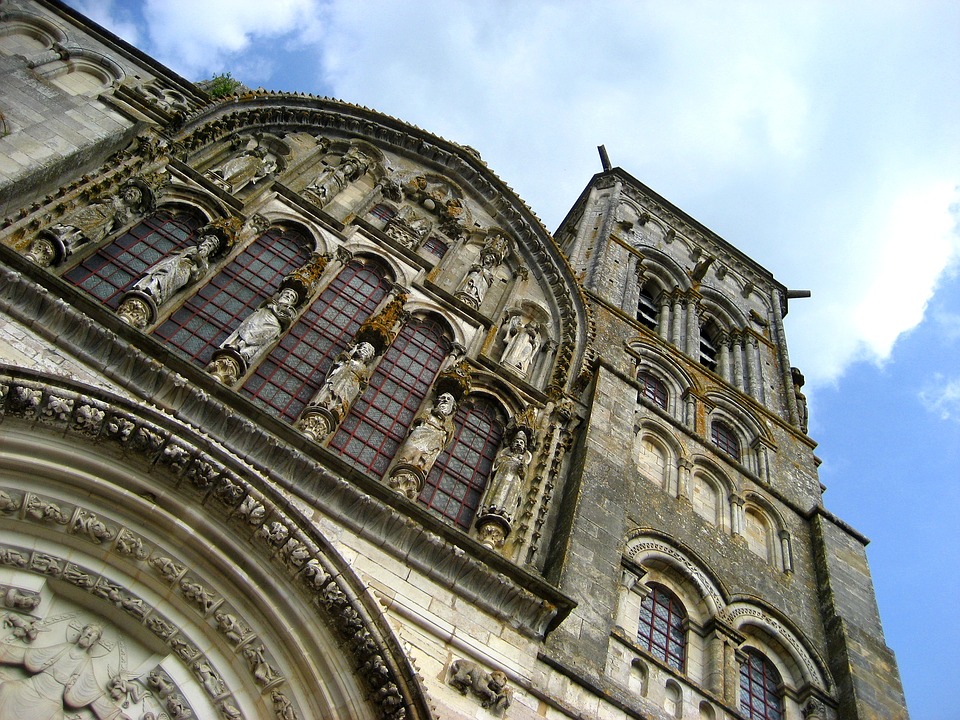
Benedictine abbey of Vézelay, Burgundy
UNESCO World Heritage in Provence & Riviera
In Provence, there are four registered heritage sites, which absolutely must feature on any traveler’s France bucket list:
Roman Theater & triumphal arch of Orange
The theater of Orange was built between A.D. 10 and 25 to commemorate the Pax Romana and is one of the best-preserved Roman theaters in the world. The 103m long facade and the surviving examples of architecture typical of Augustus' reign make this theatre unlike any other. It was introduced onto the list in 1981. After visiting Orange, you may like to relax with a nice glass of wine nearby in the beautiful Chateauneuf-du-Pape .
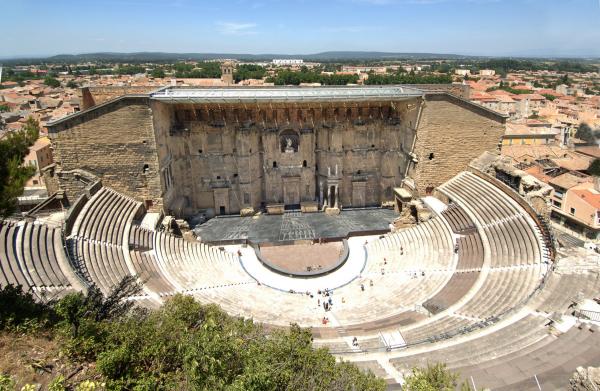
Orange Roman Theater - ©Gromel CDT vaucluse
Historic Center of Avignon : Papal Palace & Avignon Bridge
Avignon is well known for its medieval architecture and monuments. The austere-looking fortress of the Palais des Papes ( Popes’ Palace) , an exceptional example of Gothic architecture, dominates the city. In the 14th century, Avignon was the seat of the papacy, and this brought a great deal of wealth to the city at the time. The Popes remained in residence in Avignon for over a century until 1403. The remains of a 12th-century bridge Pont d’Avignon ( Avignon Bridge also called St Bénézet Bridge) used to connect the Papal seat to the rest of France and was at the time the only bridge across the Rhône River.
Below the Popes’ Palace is the Petit Palais and the Romanesque Cathedral of Notre-Dame-des-Doms , comprising an outstanding selection of monuments that reinforce the significance of Avignon in 14th-century Christian Europe. Fast-forward six centuries and the impressive medieval ramparts surround a beautiful modern city that enjoys lovely weather and a vibrant culture. Avignon is easy to access from Paris by TGV train in around three hours. Alternatively, fly into Marseille or Nice International, which are both much closer to Avignon.
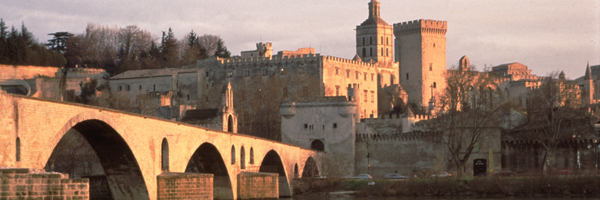
Avignon, Provence - ©David Lefranc - CDT Vaucluse
Arles and the Roman Monuments
Arles has some impressive Roman ruins – the arena, Roman amphitheater and underground galleries date back to the 1st century B.C, and the baths of Constantine and the necropolis of Alyscamps are remnants of the second golden age experienced by Arles in the 4th century A.D. The town is a good example of how an ancient city transitioned to becoming a medieval city . In the 11th and 12th centuries, it was considered one of the most beautiful cities in southern Europe.
Nowadays, Arles is much associated with Dutch artist Vincent van Gogh . It was during his stay in Arles in 1888 that he developed his post-impressionist approach to still-lifes and local landscapes. He used brighter colors and painted his natural surroundings in Provence, which included olive groves, fields of wheat, and the famous sunflowers . Travelers may be interested in visiting the Vincent van Gogh Foundation museum, which doesn’t contain many pieces by van Gogh, but includes hundreds of other pieces, many of which were inspired by the style of van Gogh.
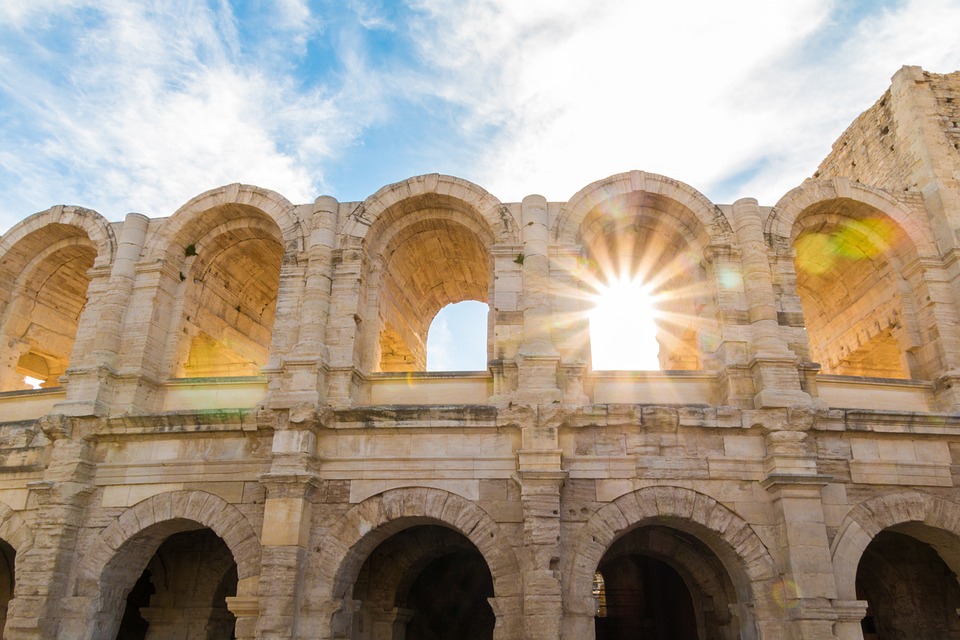
The Roman amphitheater at Arles
Pont du Gard Roman bridge
Close to Nimes and Avignon, the Pont du Gard is a Roman aqueduct that stands at three stories high and was added to France’s UNESCO World Heritage sites in 1985. It was built around the 1st century A.D. under the command of Marcus Vipsanius Agrippa, son-in-law of Augustus. The Romans transported water from the springs near Uzès through the Roman aqueduct. Incredibly, the aqueduct was built without mortar and has nonetheless remained intact across the ages, in spite of multiple floodings and occasional negligence. This masterpiece of Roman engineering is today one of France’s most popular tourist attractions. On our Provence tours , we give you tips on how to escape the crowds AND get the best shots. We also know another bridge, which is a bit of a local secret – it’s much smaller, but it should be just for your enjoyment, as other tourists won’t know about it.
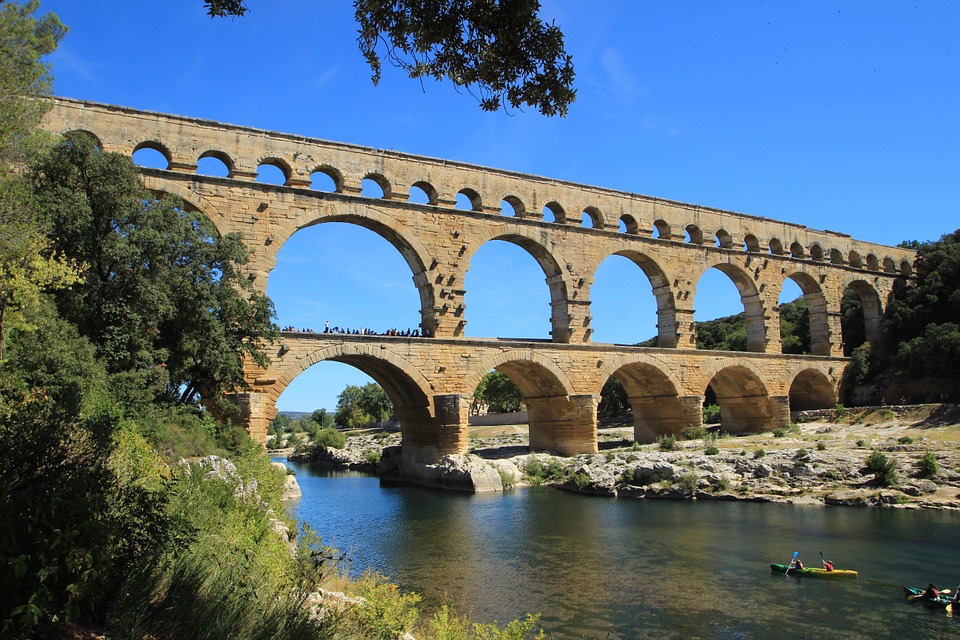
UNESCO World Heritage Sites in Bordeaux region
Bordeaux and its port .
Stretched mostly along the left bank of the Garonne River , the enchanting city of Bordeaux is surrounded by vineyards whose names are known around the world. These include Médoc, St Emilion, Margaux and Sauterne . Visitors travel to Bordeaux in the region of Aquitaine to enjoy wine tastings , stay on wine estates, and meet local French oenologists and sommeliers.
Those who want to explore beyond the vineyards may enjoy a trip to the Atlantic beaches and the Bay of Arcachon . Bordeaux offers something for everyone.
The city of Bordeaux is the perfect example of an urban and architectural ensemble. It has more protected buildings than Paris, and exhibits both innovative classical and neoclassical trends, making it a place of great cultural value. It is a capital of wine production and a commercial port and was inducted to UNESCO in 2007.
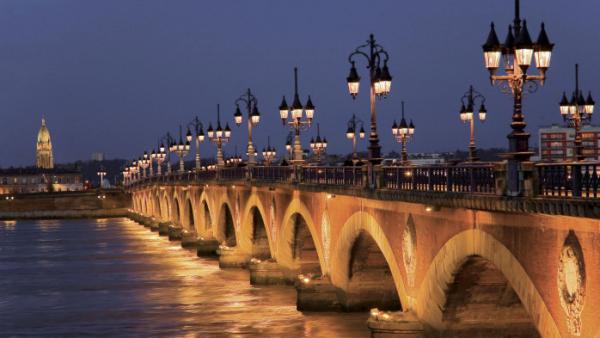
Pont de Pierre in Bordeaux
No matter what you enjoy doing, France has something to take everyone's breath away.
Go and check out these amazing sites for yourself, marvel in awe at the incredible architecture or learn all about the history of one of these incredible places on a France Just For You Tour.
Experts in self-drive tours in France
- How it works
Ready to explore?

Villandry French style gardens France Just For You
The Loire Valley & Bordeaux UNESCO sites in 13 days
French regions.
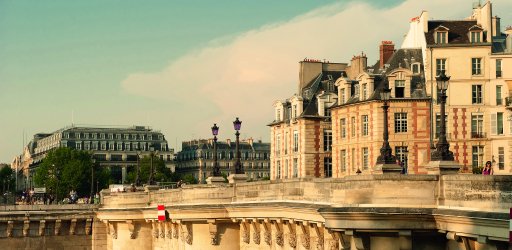
Paris tours Paris Tourism Office - Amélie Dupont

Verzenay Champagne vineyards E.Vidal - ADT Marne
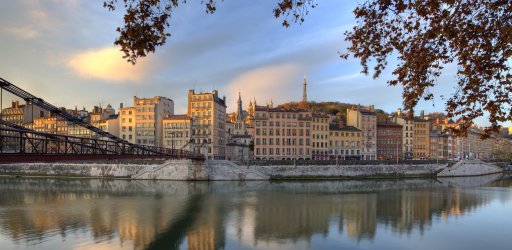
Lyon along the Saône river T.Deschamps - OT Lyon
Travelers Reviews
The planning and coordination of our holiday was quite awesome and far exceeded all of our expectations and indeed our imagination. The 300 odd page personalised guide book with maps, times and distances, restaurants on route and at our destinations, recommended places to visit on route and the accomodation itself and hosts at each location were …
The planning and coordination of our holiday was quite awesome and far exceeded all of our expectations and indeed our imagination. The 300 odd page personalised guide book with maps, times and distances, restaurants on route and at our destinations, recommended places to visit on route and the accomodation itself and hosts at each location were also superb. The guided wine tasting and sight seeing tours at each location were of the highest quality. The entire trip was a delight.
We couldn't recommend France Just For You highly enough. After visiting various parts of Europe on our own we were delighted to have someone else attend to all the details. Emilie was a joy to work with and couldn't have chosen better B&B's, tours and day trips to meet our needs. I can't wait to call upon her services again!
We couldn't recommend France Just For You highly enough. After visiting various parts of Europe on our own we were delighted to have someone else attend to all the details. Emilie was a joy to work with and couldn't have chosen better B&B's, tours and day trips to meet our needs. I can't wait to call upon her services again!
For our journey in the Loire Valley, we could not have hoped for more gracious, firendly and hospitable hosts. They made us feel like long time friends. It has been wonderful sharing this time with this French family and we hope we may meet again. The guidebook was totally professional and indispensable ! Aurevoir et merci beaucoup
Thank you, Emilie! This was just the trip that we had envisioned. The B&B's that you booked for us were perfect. The excursions were fabulous. The amazingly detailed books that you prepared for us were our guides and will forever remind us of our trip. You listened to what we wanted and arranged a trip just for us. I cannot imagine how this trip …
Thank you, Emilie! This was just the trip that we had envisioned. The B&B's that you booked for us were perfect. The excursions were fabulous. The amazingly detailed books that you prepared for us were our guides and will forever remind us of our trip. You listened to what we wanted and arranged a trip just for us. I cannot imagine how this trip could have been better - unless we had stayed longer in each place. There was so much to do and so many options in your books that we were unable to do it all. We probably should have scheduled some rest days in the inviting swimming pools at several of our B&B's. Maybe we should return? I am so glad that I stumbled upon your site on the web. I am sorry we missed you in Langeais. That was our favorite city. For those of you reading this review, make sure you tell Emilie what you are really looking for in a trip to France and I am absolutely certain that she will make it happen for you.
I was very nervous to visit a country that I have never learned the language spoken so that is the reason I wanted someone to help me plan this trip with my children. Emilie was wonderful. The B&Bs that she booked were some of the very best places I have ever stayed and I have traveled quite a bit. The cell phone that we were given was priceless …
I was very nervous to visit a country that I have never learned the language spoken so that is the reason I wanted someone to help me plan this trip with my children. Emilie was wonderful. The B&Bs that she booked were some of the very best places I have ever stayed and I have traveled quite a bit. The cell phone that we were given was priceless for getting around, the language barrier and checking in with others back home. I would recommended using Emilie to everyone. It was fantastic. A trip of a lifetime with my children who are 18 and 25.
My wife and I traveled in Provence and Dordogne in early April 2018. Whie the weather was mostly on the rainy/windy side, the trip was so well planned and organized, with so much to see, that we did not pay much attention to the weather. All B&Bs were excellent in terms of accommodation, food (sic!) and very welcoming. All hosts were bi-lingual and …
My wife and I traveled in Provence and Dordogne in early April 2018. Whie the weather was mostly on the rainy/windy side, the trip was so well planned and organized, with so much to see, that we did not pay much attention to the weather. All B&Bs were excellent in terms of accommodation, food (sic!) and very welcoming. All hosts were bi-lingual and provided lots of advice about the area. Car rental was a breeze, both pick-up and return. And we would not miss any of the pre-booked tours, like private tour in Aix en Provence, Gourmet tour in Avignon or a fun truffle hunt. We met so many good people on this trip. Thank you Emilie!
What are you looking for?
Get our monthly travel news and best tips by subscribing to our newsletter
Other blog posts about Explore French History
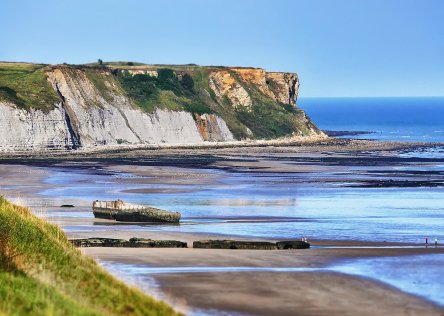
L. Durand, Calvados Tourisme
Tour of Normandy Beaches - An Interview with Expert Guide, Christophe
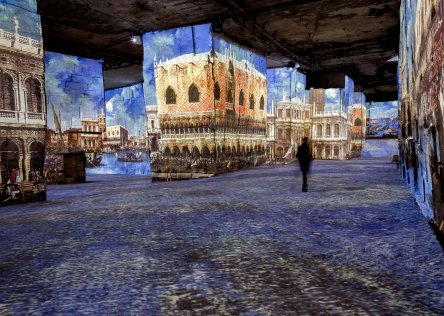
Culturespaces, E. Spiller
Best Museums to Visit in France Outside Paris
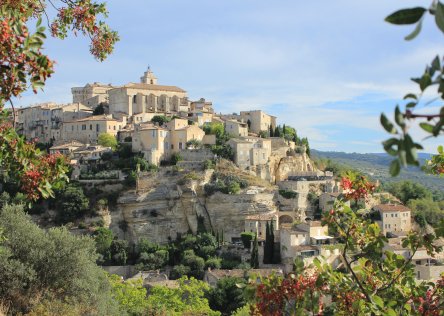
Uncovering the Mysteries of Medieval France
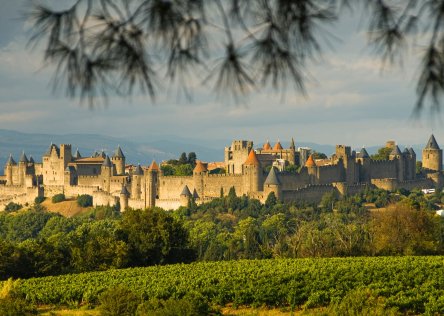
Unsplash CC0
Explore your Ancestry in France - Interview with a French Genealogist
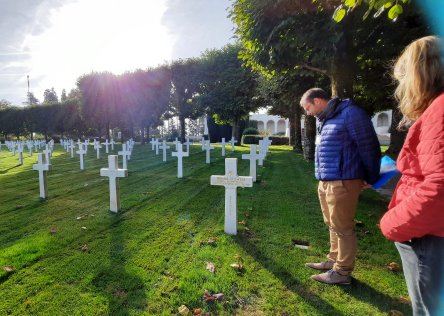
Our Guide in Verdun area France Just For You
Interview with Vincent, guide and expert in WWI history
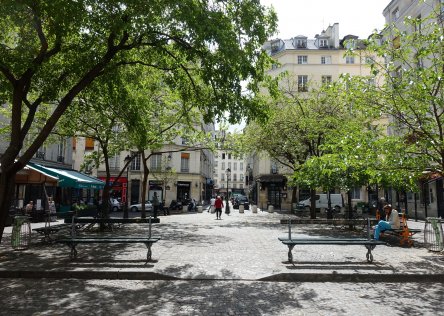
Place Sainte Catherine in Le Marais, Paris Guilhem Vellut CC BY 2.0
Exploring Le Marais district in Paris

books - Novels set in France Abhi Sharma
Books to Read Before Your Trip to France
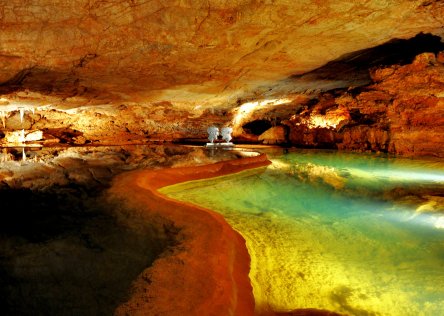
Padirac Chasm - prehistoric caves in France - bucket list Pixabay
Explore the best prehistoric caves in France
Hi there 👋 My name is Laura. Would you like to subscribe to our monthly newsletter... 100% about France!

Home > Guided tours > Unusual visit > UNESCO headquarters (ticket + visit)
UNESCO headquarters (ticket + visit)
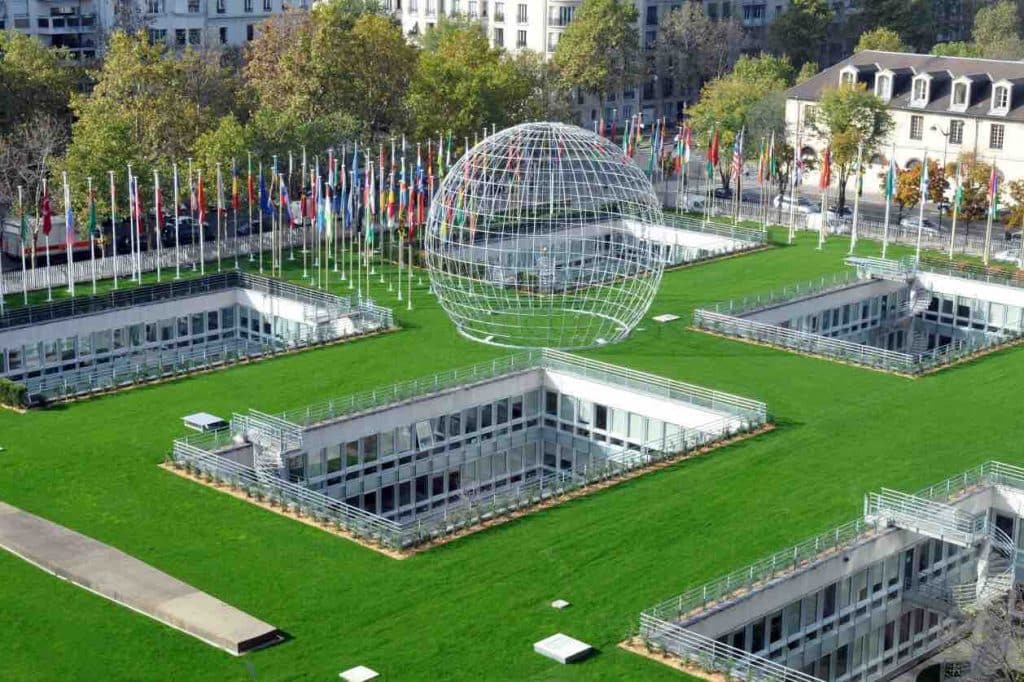
- WE love A family visit to an unusual place where you can learn a lot about diplomacy.
- Age From 8 years old
- duration : 1h30
- Where 7 Place de Fontenoy, (Paris 7e) - Invalides - Eiffel Tower district
- Outside the building, to the left of the glass security control area, in front of the UNESCO sign.
- Meet 15 minutes before the start of your visit
- To know more : Don't forget your family's identity papers, as you'll need to present them at the entrance.
A visit to UNESCO House and its Japanese garden
A place for democracy, culture and nature.
- It's in Paris, not far from the Invalides district and du Trocadéro is home to UNESCO's headquarters United Nations Educational, Scientific and Cultural Organization
- Thanks to a specialized guide (English and French), you'll learn all about the missions of the UN's specialized agency.
- Once inside the 50′ building, with its very modern architecture, you'll discover the inner workings of diplomacy.
- Huge conference rooms, concrete walkways and corridors... and all the symbolism of a place of international stature
- The guide will show you the UNESCO collection of works by the greatest artists of the 20th century. e century!
- Calder , Picasso , Giacometti or Vasarely and many others interact with the building's architecture
- Outdoors, meditation and relaxation are guaranteed in the the garden of peace...
- Between tradition and modernity, plum, cherry and magnolia trees have been chosen and imported from Japan by the artist. Isamu Noguchi in 1958.
- This fascinating tour is undeniably original. It is sure to interest children , teens as much as adults.
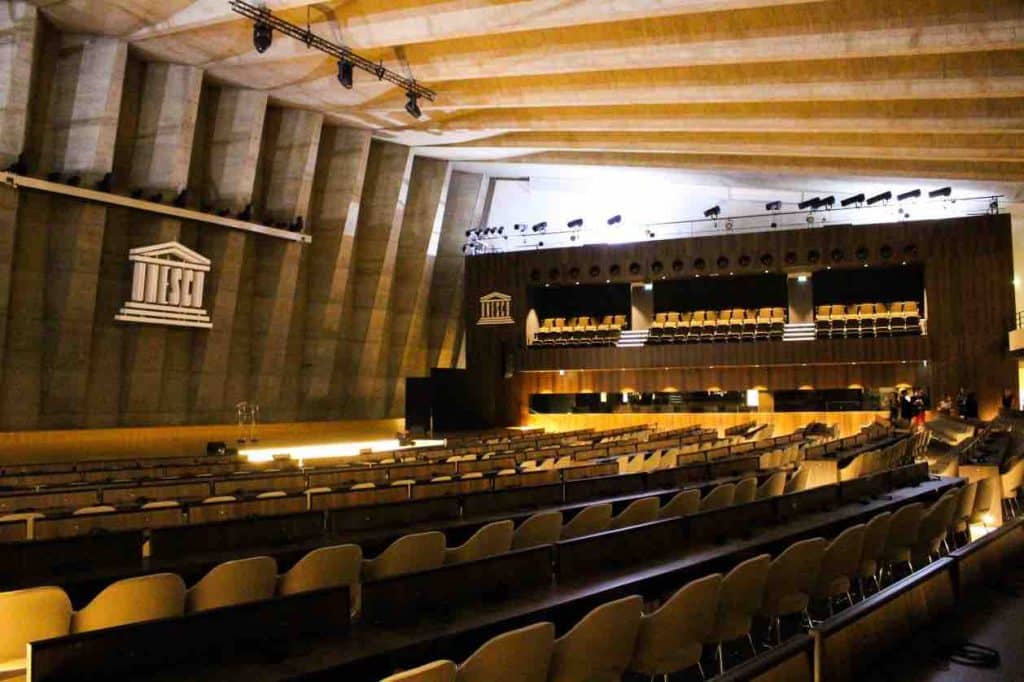
Save by buying 2 attractions
- Save 5% when you also buy a ticket for the Cathedral Basilica of Saint-Denis + Stade de France tower
You'll also like...
- Visiting Parisian monuments
- Unusual walks and tours
Unusual guided tours...
In montmartre (18th), tell me about montmartre (fun tour), aux tuileries (paris 1st), mythological heroes at the tuileries (visit-trail game), in and around the 5th district, paris in cartoons (guided tour), guided ride in electric scooter.
United Nations Educational, Scientific and Cultural Organization
The Organization has more than 50 field offices around the world, and its headquarters are located at Paris .
World Heritage is the name given to places or properties around the world that are of outstanding universal value. Inscribed on a world list, they are protected so that future generations can benefit from them.
Practical information
- Address : 7, place de Fontenoy, 75007 Paris
Write A Comment Cancel Reply
It's all new.


Memo run, the race against oblivion

Les Invalides make their movies!

The golden-haired beauty
- Paris in 2 days
- Paris in 3 days
- Paris in 5 days and more
- TOP 8 TO VISIT
- Photo Tour in Paris
- The unusual
- On the Street Art
- With actors
- In parks and gardens
- Private tours
- The Mysteries of Montmartre (kids)
- The Mysteries of Montmartre" (teenagers)
- The Secrets of the Marsh
- Street Art at the Butte-aux-Cailles
- The mysteries of the Latin Quarter
- Treasure hunts
- Tourist buses
- Cruises on the Seine
- Paris by scenic bus
- Neighborhoods
- The most beautiful views of Paris
- Trade shows
- Musical comedies
- Immersive experiences
- If the weather is nice
- If it rains
- The evening
- Parks and gardens
- School trips
- Rally, EVJF, EVG, TeamBulding
- REDUCED FARES
- The 0-3 years old
- THE 7-12 YEARS
- Courses and workshops
- Outdoor Games Area
- Urban treasure hunt
- Unusual visits
- Unusual museums
- Riddles Strolls
- Outings in Île-de-France
- Tree climbing
- Zoological parks
- Educational farms
- The castles
- Amusement parks
- Free outings
- Special offers
- Outputs - 10€
- Outlets - 15€
- Releases - 20€
- Free Museums
- Free Monuments
- Paris in July
- July 14th in Paris
- Paris in August
- Book an activity
- Book a hotel
- Prepare your stay in Paris
- Advice before coming
- The arrival of the flame in Paris
- Art and sport - Summer 2024 exhibitions
- Free entertainment during the games
- Moving around during games
- Kindergarten (cycle 1)
- Primary (cycle 2 and 3)
- Middle and high school (cycle 3 and 4)
- Escape Games and treasure hunts
- Outdoor guided tours
- Guided tours in museums
- Science Experiments Bercy
- Shows for young audiences
- What to see and do
- Guided activities
- Guided tours
Guided tour of UNESCO headquarters
Until 31/12/2024
Description
Discover the headquarters of one of the world’s most famous international institutions: UNESCO .
Your guide will take you on a special tour of the Maison de l’UNESCO (the headquarters of the United Nations Educational, Scientific and Cultural Organisation), with its remarkably characterful architecture at the very heart of Paris.
While telling you all about the missions, projects and impact of this specialist UN agency, your guide will show you around UNESCO ’s incredible premises: the vast conference rooms, which host major international events; the square, where you can admire the famous symbolic Globe, and the concrete corridors and walkways, typical of modern architecture.
A collection of works of art by the greatest artists of the 19th century can be admired as you follow the tour. Your guide will talk you through works by Calder , Picasso and Giacometti . Re-discovering these contemporary artists outside of a museum setting, and considering their links with UNESCO ’s work, is sure to be an enlightening experience.
Surprises, discoveries and education are guaranteed on this guided tour, which is simultaneously rooted in the centre of Paris and global in its outlook.
Please note: reservations can be made 24 hours after purchasing tickets and are subject to availability at the time of booking.
Useful information
Tickets and prices.
- Reservation with the Agence Cultival is mandatory, via the Gift Vouchers and Tickets section of the website, or by calling the number indicated on your ticket .
- Important: Please wait 24 hours after purchasing your tickets to make your reservation and subjet to availability at the time of booking. Ticket valid for 12 months from date of purchase.
- The booking is subject to availability. The purchase of a ticket does not guarantee that it can be used on every date during the validity period.
- When confirming your reservation, please provide the following information for each participant: First and last name ; Telephone number
- Duration of the tour: 1h30
- Suitable for children aged 5 and over.
- Guided tour: First Saturday of every month at 11:30 and third Wednesday of every month at 15:30.
- Proof of identity required. Visitors unable to provide proof of identity will not be admitted. No cloakroom. No pushchair/luggage/umbrella storage facilities.
Choose your tickets
- Copyright image:
- Michel Ravassard, UNESCO
Need some help
Expired session
Why you should visit Provins, the UNESCO World Heritage Site 90 minutes from Paris

Jun 2, 2024 • 8 min read

Wander the medieval ramparts of Provins, an unmissable stop for history lovers © Lev Levin / Shutterstock
The fortified medieval town of Provins, just 92 km (57 mi) south-east of Paris , has barely changed since the 17th century. Now a UNESCO World Heritage Site, a million tourists visit every year to admire the town which was, in the 10th century, the third most important in the kingdom of France after Paris and Rouen.
Still partially surrounded by its 25 m (82ft)-high ramparts and moat, it was developed by the powerful Counts of Champagne as a major trading post between northern Europe and the Mediterranean. It became so important it had its own currency, the Provins “denier” or penny, and it was thronged with merchants from all corners of the globe during their annual trade fairs. Provins is also the proud home of the Rosa gallica (or rose of Provins), parent to most European rose cultivars.

When should I go to Provins?
If crowds don’t worry you, then come during the Medieval Festival that takes place the second weekend of June (though this year it's on June 1st and 2nd because of the Paris Olympics), the biggest such event in France. Troubadours, acrobats and crowd entertainers fill the streets lined with 350 craftspeople peddling their wares. There’s also dancing, music, games, jousting, street performances and the traditional medieval ball, a concert and a Sunday parade with 700 people in medieval costume. You must book a ticket and you'll get a discount if you come in medieval costume!
Other festivals include the one-day Harvest Festival (“Fête de la Moisson”), which is always held on the last weekend of August; note that this year it’s been canceled as it clashes with the Olympic Games. Provins also holds a medieval Christmas market on December 14th and 15th.
If you want to see the Rosa gallica flowering, visit from mid-May to June – you’ll see the blooms in the Provins Rose Garden and foaming over private walls and fences.
If you’re traveling with children (or even not!) and want to soak in the medieval atmosphere at one of the historical shows, plan your trip between the end of March and the end of October. These shows take place in most weather conditions; if there's wind or heavy rain the falconry show might be canceled, but even in inclement weather the knights will joust.
Provins' historical sites are open all year (afternoons only during winter weekdays, all day at the weekends), as is the town's medieval-themed escape game .
Read more: 7 easy day trips from Paris we love
How long should I spend in Provins?
You'll need two days to be comfortable, but a day-trip will still give you a taster. Explore the town's ramparts, admire the picturesque half-timbered houses along the Voulzie River (an area almost entirely ignored by most tourists), eat at France’s oldest restaurant (it’s been serving meals continuously – except during Covid - since 1270!), learn how to make authentic medieval biscuits at a cooking class, or relax at the spectacular bar in the cellar storeroom at the Hotel Aux Vieux Remparts .

Is it easy to get to and around Provins?
There are 16 trains a day from Paris Gare de l’Est to Provins; the journey takes about an hour and a half and costs €5 one way.
The town of 12,000 residents has two distinct areas: the “Châtel” on the promontory in the northwest corner (where the ramparts and many of the medieval monuments are), and the “Val” that dribbles southeast down the hill, where the Provinois (city locals) reside, work and shop.
It’s a pleasant 2km walk from the train station in Val to the tourist office in the Châtel along the rue des Marais by the Voulzie river through the bustling town center - the last bit is uphill. You can also hop on a bus, but it leaves 20 minutes after the train has arrived so it’s just as quick to walk. If you come by car, park it for free by the tourist office: you’ll not be needing it for the rest of your stay.
Pick up a map from the tourist office and follow one of three suggested sightseeing walks; they largely follow the same itinerary. If you follow the orange Count Thibaud or blue Rose Road tour, pause at 12 rue de Jouy at the Tabliers Gourmands for a refreshment or some biscuits made from authentic medieval recipes – this is also where you can take that medieval cooking class we mentioned. The blue tour detours to the Rose Garden, while the purple Rampart Tour takes you around the ramparts instead. The orange itinerary is the shortest (1.5 hours) and the purple one is the longest (up to 3.5 hours).
Some of the streets – notably the rue Saint Thibault – are steep and cobbled, so wear flat shoes. If you intend to visit the underground galleries, bring a warm jacket as the temperature hovers at about 12°C (53°F) all year around.
Read more: How to get around France: from cycling to traversing by train

How to spend a perfect day in Provins
Your first port of call should be the thirteenth-century Grange aux Dîmes or Tithe Barn on the rue Saint Jean, where you’ll learn about the famous Provins trade fairs that took place here throughout the twelfth and thirteenth centuries. Be sure to use the lively and informative audio-guide, or you’ll just be looking at pretty scenes dominated by life-sized wax figures.
At the end of the street, turn right into the Place du Châtel, a plaza lined with some remarkable stone and timber-framed buildings and a number of restaurants. Closest to you, at the western end, note the well with its wrought iron cage and large Exchange Cross: this is where the Counts of Champagne posted their public notices.
At the eastern end take the street furthest right, the rue de l’Ormerie, towards the emblem of Provins: the 12th-century Tour César , the only known octagonal castle built on a square base. Download a free audio-guide on your smartphone (in French only for the moment, but the English one should be available soon) for the full experience, but if you skip it, you'll still have fun clambering to the top for a marvelous view of the town and surrounding countryside. And if the kids are feeling active, the grass banks at the base of the keep are fantastic to roll down!
Then slip around the uncompleted, cathedral-like 12th-century Saint Quiriace collegiate church and down the tiny rue d’Enfer to find yourself at the bottom of the rue Saint Thibault. Here you can either visit the underground galleries (guided tours only: book at the tourist office) or head towards the Place St Ayoul, where the very first Provins fairs were held. The intriguing black sections on the St Ayoul church portal were made by sculptor Georges Jeanclos in 1985.
If you want some peace and quiet, slip into the neighboring Saint Ayoul priory , which was sold to the state at the end of the 18th century for various police and army functions (including housing the cavalry!). The defense ministry handed it back to the culture ministry in 1938, who then restored it, uncovering some lovely, dainty frescoes. The modern stained glass windows are by German-French artist Udo Zembok.
If you’ve come by train then do this itinerary backwards, starting with the priory and walking slowly uphill.
Read more: 8 best things to do in France
My favorite thing to do in Provins
I have taken elderly parents, friends and children to Provins countless times and a firm favorite has always been the “ Eagles of the Ramparts ” (or Aigles de Provins) show, which explores the history of falconry and leaves even the smallest child wide-eyed in wonder at both the horses and the majestic, swooping eagles, vultures and other birds of prey; they can go and see these animals close-up at the aviary after the show.
Older kids will also love the Legend of the Knights but head's up: the thundering horses, shouting and sounds of clashing weapons frightened my children when they were little.
How much money do I need for Provins?
The quick answer? Quite a bit. If you want to attend the two shows above and see at least four of the five major sites, you’ll spend €43 per adult.
The Provins Pass (€17 per adult, €10.50 for children from 4-12 ) allows you to visit five attractions: the Tour César, the Tithe Barn, the underground galleries, the Saint-Ayoul Priory and the Museum . If your family consists of two adults with two to five children, then buy the family ticket for €50. If you only have time to visit three of the five attractions, then individual tickets may be a good bet. They clock in at €5 per adult and €3 per child (€2.50 for the museum), except the tickets to the Underground Galleries, which cost €6 per adult and €4 per child.
My favorite shows mentioned above each cost €13 per adult and €9 per child (4-12 years old), and there are reduced prices for students, adults over the age of 65, the disabled and journalists.
Surprisingly, given the number of visitors, the choice of accommodation in Provins is a bit limited. There are four hotels ranging in price from €80-€204 and they don’t all include breakfast; you'll also find half a dozen guest houses including the extraordinary Stella Cadente , where each room is dedicated to a children’s tale.
The bus (3207 or 3209 or Express50) from the train station to Le Châtel costs €2.15 per person.
Meals and coffee will be cheaper in the Val, where tourists are fewer than in the Châtel. Expect to pay around €90 for lunch for two at the Bistrot des Remparts or the Hostellerie de la Croix d’Or . The latter serves traditional French food, but they will make you something vegetarian if you ask nicely. Cheaper options (about €50 for two) are available if not very locally flavored, like the Trattoria du Val and La P’tite Savoie, both straight down the hill from the Place du Châtel.
Explore related stories

Aug 1, 2024 • 5 min read
If the 2024 Summer Olympics in Paris piqued your interest, it’s not too early to turn your focus to the 2028 games in LA.
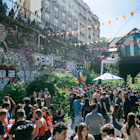
Jul 26, 2024 • 8 min read

Jul 12, 2024 • 5 min read

Jul 8, 2024 • 8 min read

Jul 4, 2024 • 6 min read

Jun 20, 2024 • 6 min read
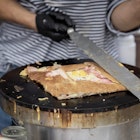
Jun 14, 2024 • 7 min read

Jun 13, 2024 • 7 min read

Jun 12, 2024 • 12 min read

May 14, 2024 • 10 min read

31 Top-Rated Tourist Attractions in Paris
Written by Lisa Alexander Updated Mar 21, 2024 We may earn a commission from affiliate links ( )
Whether sunshine is sparkling on the café terraces of Boulevard Saint-Germain, or melancholy mists of the Seine River are shrouding Notre-Dame Cathedral, Paris has a way of romancing visitors. The love affair might begin with a first glimpse of the Eiffel Tower, then continue with strolls along the wide tree-lined avenues and in lavish formal gardens.
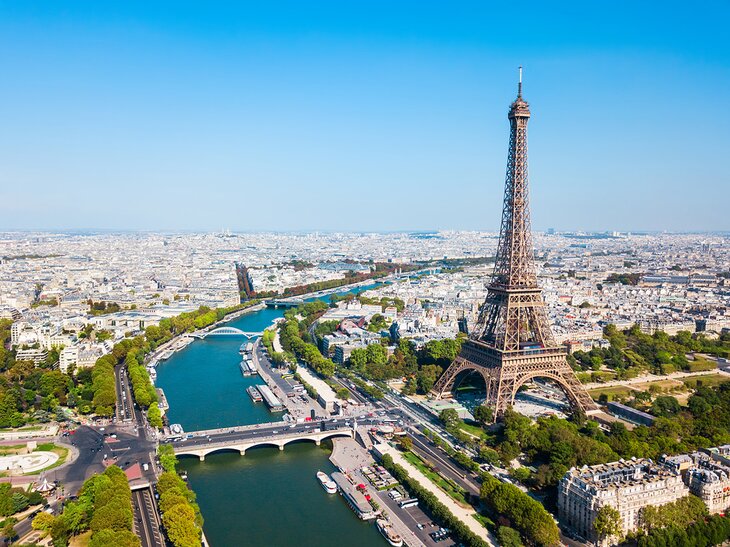
The city is seductively beautiful. Each neighborhood ( quartier ) reveals its unique personality. The Latin Quarter is a small cluster of pedestrian streets and narrow medieval alleyways where bookshops vie for space with university students' cafés and eateries. The fashionable Champs-Élysées buzzes with energy. Outside the city center, Montmartre still feels like a country village and flaunts its bohemian past.
After seeing the museums and monuments, you will want to seek out the small surprises, like family-run bistros with handwritten menus; cobblestone lanes full of quaint shops; secluded squares adorned with flowing fountains; and elegant tea salons, where dainty jewel-like desserts beckon from glass-covered pastry cases.
In every hidden corner and at all the famous sites, Paris casts a spell of enchantment. One visit may inspire a lifelong passion.
Discover what makes the City of Light so captivating and learn about the best places to explore with our list of the top tourist attractions in Paris.
See also: Where to Stay in Paris
1. Eiffel Tower
2. musée du louvre, 3. avenue des champs-élysées, 4. musée d'orsay, 5. palais garnier, opéra national de paris, 6. cathédrale notre-dame de paris, 7. place de la concorde, 8. arc de triomphe, 9. hôtel de la marine, 10. jardin des tuileries, 11. seine river cruises, 12. musical concerts at sainte-chapelle, 13. bustling boulevards and legendary cafés, 14. jardin du luxembourg, 15. sacré-coeur and quartier montmartre, 16. panthéon, 17. place des vosges, 18. musée rodin, 19. place vendôme, 20. centre pompidou, 21. hôtel national des invalides, 22. domaine national du palais-royal, 23. place de la bastille, 24. place du châtelet and tour saint-jacques, 25. la conciergerie, 26. fondation louis vuitton, 27. parc de la villette, 28. paris plages, 29. cimetière du père lachaise, 30. parc des buttes-chaumont, 31. grande arche de la défense, where to stay in paris for sightseeing, tips and tours: how to make the most of your visit to paris, best time to visit paris, france.
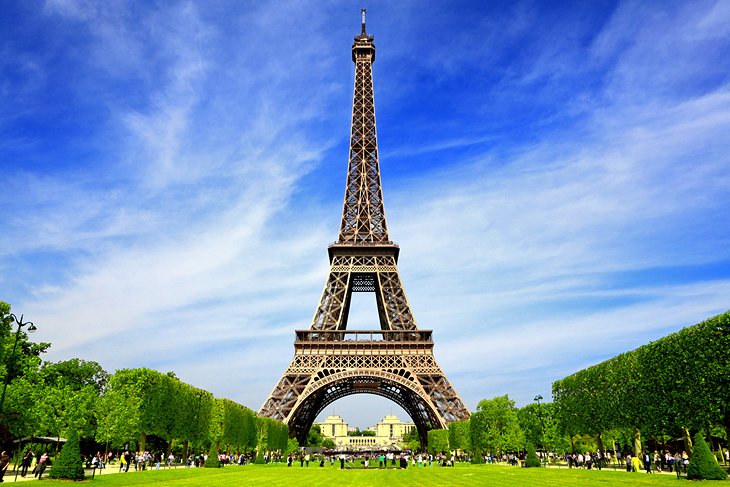
The Eiffel Tower (la Tour Eiffel) ranks high on the list of places to visit in France and is one of the most-visited tourist attractions in the world. So it's hard to believe that the structure was originally dismissed as a monstrosity. The innovative metal structure shocked Victorian-era audiences when it was unveiled by Alexandre-Gustave Eiffel for the Paris Exhibition of 1889 .
Whether loved or hated, the Eiffel Tower has always impressed. Reaching a height of 324 meters, the tower is comprised of 18,000 sturdy iron sections held together by 2.5 million rivets. Although no longer the world's tallest building, the Eiffel Tower has achieved the status of an icon.
For first-time visitors, seeing the Eiffel Tower is an unforgettable experience. Upon arrival at the esplanade, the sight of the four massive pillars that support this 10,100-ton monument leaves many awestruck.
Author's Tip : Purchase your tickets to the Eiffel Tower in advance online. You first choose a specific date and during the online process, you will reserve a specific time slot for the visit. (You must arrive on time.) Tickets sell out during high season (July and August), so you should purchase your tickets as far in advance as possible.
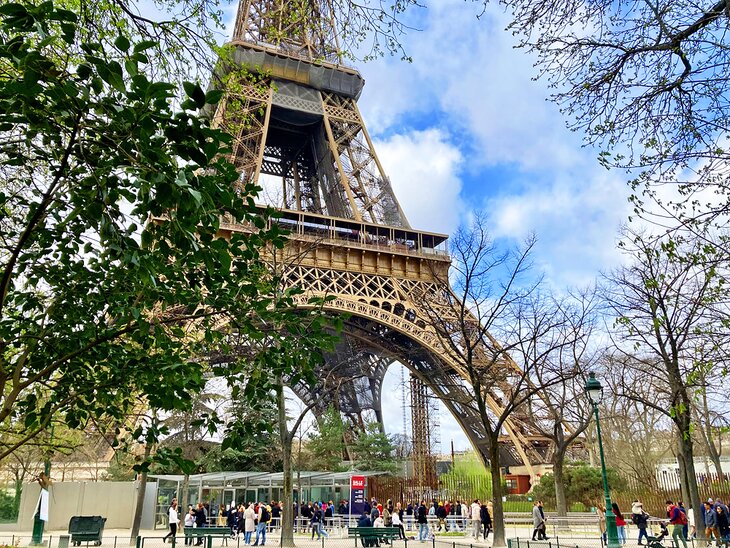
When you arrive at the Eiffel Tower, you will first walk through the esplanade gardens. Then you will look for the correct queue (which will be labeled "Visitors with tickets"). The recently renovated gardens feature leafy trees and pedestrian pathways with close-up views of the Iron Lady.
To arrive at the Eiffel Tower's 1st floor (at 57 meters) requires an elevator ride or a walk up the 360 steps. This level has public restrooms, a gift shop, a cafeteria, a brasserie restaurant, and an open-air terrace space for admiring the views.
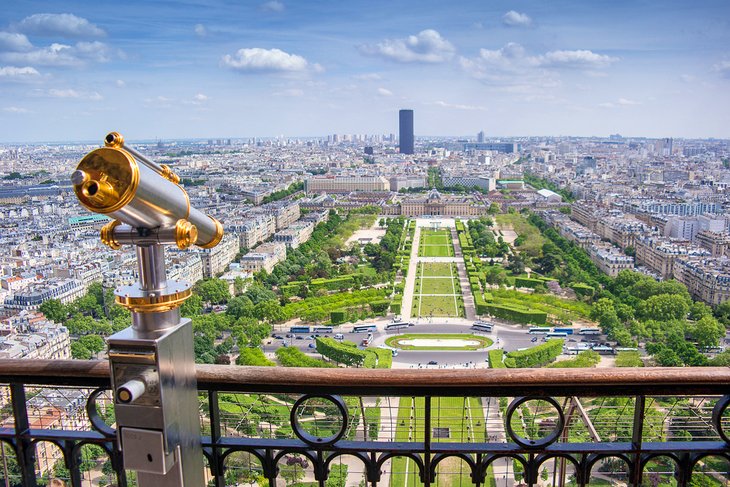
The 2nd floor (at 125 meters) of the Eiffel Tower is reached from the 1st floor by a staircase of 344 more steps or an elevator ride. This level has similar amenities as the 1st floor, except the viewing platforms offer a perspective onto more of the Paris monuments (such as the Notre-Dame, the Louvre, and the Basilique du Sacré-Coeur).
A highlight of the 2nd floor, the Michelin-starred Le Jules Verne delivers exceptional haute cuisine in a dreamy setting. The restaurant's dining rooms feature expansive windows, which provide a peak of the Eiffel Tower's structural beams and glimpses of Paris cityscapes. You'll also find a buffet-style cafeteria and the Pierre Hermé macaron boutique.
To arrive at the top floor (276 meters in elevation) requires an exhilarating elevator ride from the 2nd floor. The staircases only go up to the 2nd floor, so climbing up to the top is not an option.
Visiting the top floor of the Eiffel Tower is one of the most thrilling things to do in Paris , but it's not for the faint of heart. When you walk out onto the compact viewing platform at this level, you are overwhelmed by the far-reaching views and strong gusts of wind. Up this high, it feels like another world, and you can no longer hear the noise of street traffic below.
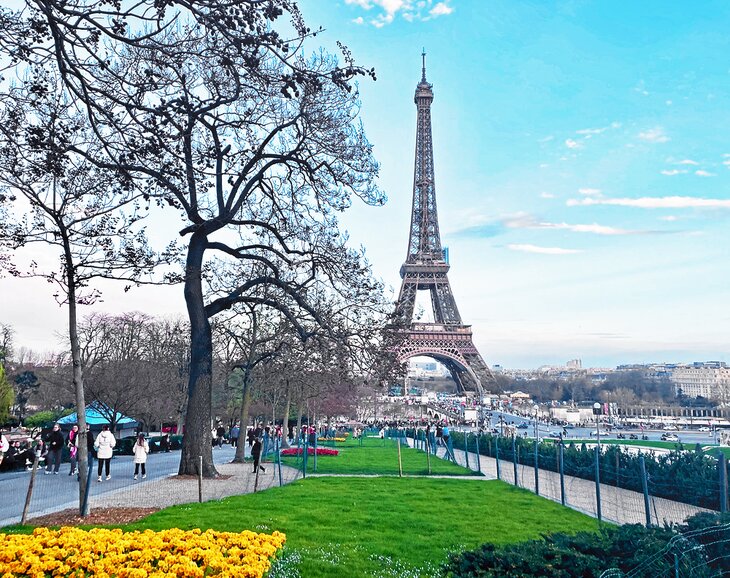
You definitely will want to spend some time taking photos of the Eiffel Tower. From either the Jardins du Trocadéro (a short walk across the Seine River) or the Parc du Champ de Mars (the lawns in front of the tower), there is just the right distance for picture-perfect photo-ops.
Address: La Tour Eiffel, Champ de Mars, 75007 Paris (Métro: Bir-Hakeim, Trocadéro, Iéna, or Passy station)
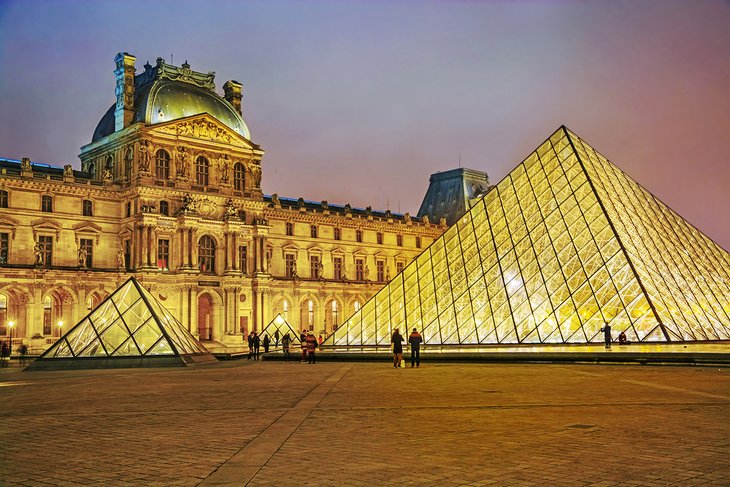
The Louvre is the most prestigious of Paris' museums and the crème de la crème of the city's cultural attractions. Besides its exceptional art collection, the building has a regal past: The Louvre was formerly the residential palace of France's kings.
Today, the Musée du Louvre displays thousands of artworks, many of which are considered masterpieces, from antiquities to European paintings of the 15th to 19th centuries.
It is impossible to see it all in one visit, but you can focus on a particular gallery, such as classical sculpture, Italian Renaissance art, or 17th-century French paintings, or take a self-guided tour to cover the Louvre Museum's highlights.
Of course, you will want to get a look at the Mona Lisa or La Gioconda (or La Joconde in French) painted by Leonardo da Vinci in 1503-1505. Many tourists breeze through the museum just to glance at this one piece, but there are other must-see works of art to admire even if time is limited.
Other masterpieces of the Louvre include the ancient Vénus de Milo sculpture; the monumental Victoire de Samothrace of the Hellenistic period; the immense Wedding Feast at Cana painting by Veronese (1563); Sandro Botticelli's Venus and the Three Graces fresco; and Liberty Leading the People (1831) by Eugène Delacroix, depicting the Parisian uprising of July 1830.
To get the most out of a visit to the Louvre, join a guided tour. The museum offers tours in multiple languages. These focus on the highlights and provide information on the palace.
The Louvre Museum Skip-the-Line Tour is another option that also takes you straight to the museum's most famous artworks, including the Venus de Milo and the Mona Lisa . On this three-hour tour, a guide (who is an art historian) provides in-depth commentary about the masterpieces.
Author's Tips : Most visitors enter the museum in the courtyard of the palace at the Pyramid du Louvre , the glass pyramid designed by Ieoh Ming Pei in 1917. This entrance almost always has long lines. The wait is especially long without a timed entrance ticket. (See tips below for alternative entrances to the museum.)
Avoid the lines of the Pyramid entrance by going to one of the lesser-known entrances. If you already have a Louvre museum ticket or a Paris Museum Pass, head to the Carrousel entrance (99 Rue de Rivoli) where you likely can walk right in without waiting in line. You may save some time at this entrance if you haven't reserved a specific time slot for admission.
Purchase a museum pass : If you plan to visit multiple museums, you can save money and time by purchasing a Paris Museum Pass . The savings depends on how many museums you visit. The advantage is that you don't have to purchase a ticket at each museum. However, you still need to reserve a specific time slot (free of charge) to visit the Louvre, the Musée d'Orsay, and Château de Versailles (otherwise you may have to wait in line).
If you have not already purchased a ticket or Paris Museum Pass, you may use the Porte des Lions entrance on the 4 Quai François Mitterrand.
Address: Musée du Louvre, Rue de Rivoli, 75001 Paris (Métro: Palais-Royal Musée du Louvre or Pyramides station)
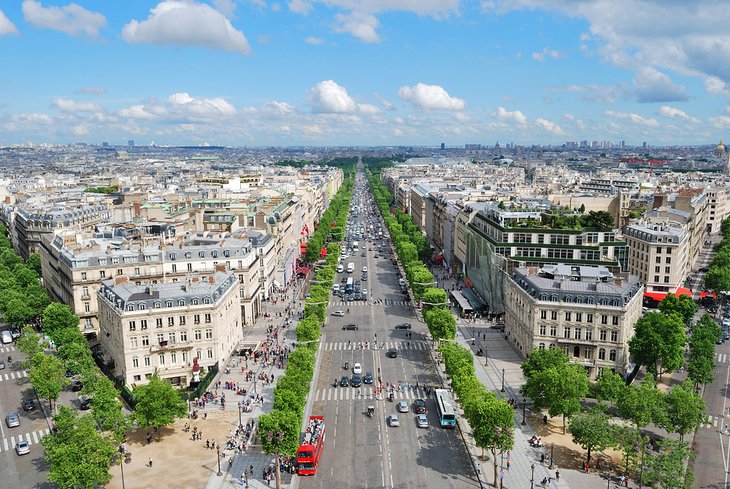
Brimming with fancy boutiques and dining terraces, the Champs-Élysées epitomizes the fashionable panache of Paris.
You'd never guess that the most monumental boulevard in Paris used to be a desolate swamp. The marshland was converted into an avenue by renowned landscape designer André Le Nôtre in the 17th century. Two centuries later, the city planner Baron Georges-Eugène Haussmann added the grey stone Mansard-roofed buildings that give the boulevard its classic Parisian look.
The Champs-Élysées is divided into two parts with the Rond-Point des Champs-Élysées as its intersection.
The lower part of the Champs-Élysées, bordering the Place de la Concorde , includes a spacious park, the Jardins des Champs-Élysées , and the Petit Palais fine arts museum. The upper part, extending to the Arc de Triomphe, is lined by luxury shops, hotels, restaurants, cafés, cinemas, and theaters. This bustling area draws many tourists and is a gathering place for Parisians.
The Champs-Élysées is famous for its prestigious establishments, such as Maison Ladurée (75 Avenue des Champs-Élysées), a pâtisserie boutique and tea salon that offers exquisite French pastries (macarons are the house specialty), and upscale designer boutiques like Tiffany & Co. (62 Avenue des Champs-Élysées), Louis-Vuitton (101 Avenue des Champs-Élysées), and Cartier (154 Avenue des Champs-Élysées).
For fine dining , the top choices are the legendary brasserie Fouquet's (99 Avenue des Champs-Élysées) and the swanky gastronomic restaurant L'Atelier de Joël Robuchon Étoile (133 Avenue des Champs-Élysées), which has one Michelin star.
Although the Champs-Élysées has an image of refinement, there are many affordable places that cater to tourists and students on a budget, such as Starbucks, Quick, Burger King, and McDonald's.
Address: Avenue des Champs-Elysées, 75008 Paris (Métro: Champs-Élysées Clemenceau station to visit the Jardins des Champs-Élysées and Petit Palais, Franklin d. Roosevelt station for Ladurée, George V station for the main shopping area).
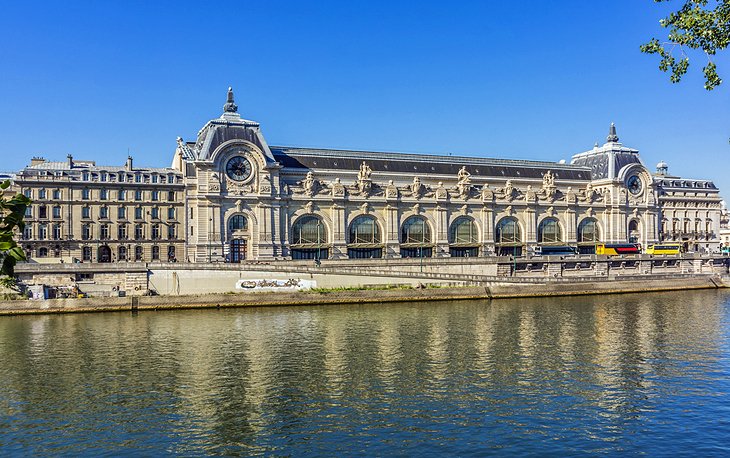
You haven't seen the best of French art until you visit the Musée d'Orsay . The Musée du Louvre may hold the most masterpieces of European painting, but the Musée d'Orsay focuses on works by celebrated French artists including Monet, Renoir, and Degas.
If you love Impressionist art , this is the place to go. The Musée d'Orsay displays a splendid collection of 19th- and 20th-century art (created from 1848 to 1914).
Although the museum's inventory begins with 19th-century Realist paintings and landscape paintings, the highlight of the museum is the Impressionism collection. Also on display are Post-Impressionist works by artists such as Pierre Bonnard, Paul Cézanne, and Vincent van Gogh, and bohemian artists like Henri de Toulouse-Lautrec.
Some of the museum's famous paintings include Claude Monet's The Magpie , Gare Saint-Lazare, Poppy Field , and Luncheon on the Grass ; Vincent van Gogh's self-portrait and Starry Night ; and Renoir's Dance at Moulin de la Galette, which depicts a festive party scene in Montmartre.
You may rent an audioguide to take a self-guided tour. The commentary (available in English and French) covers over 300 works.
The museum also has a bookstore/gift shop, two casual cafés, and a fine-dining restaurant, which is worth the splurge. Formerly the Hôtel d'Orsay (a luxury hotel within the original Gare d'Orsay) and listed as a Monument Historique , the Musée d'Orsay Restaurant features gilded ceilings and sparkling chandeliers.
On the square in front of the museum, there is a kiosk that sells sandwiches and falafel.
Address: Musée d'Orsay, Esplanade Valéry Giscard d'Estaing 75007 Paris (Métro: Musée d'Orsay, Assemblée Nationale, or Solférino station)
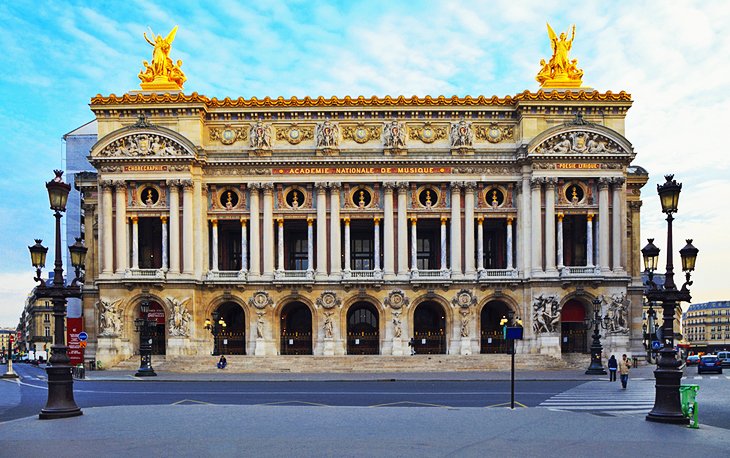
Commissioned by Napoleon III in 1860, the Palais Garnier Opera House was designed by Charles Garnier in an exuberant Baroque style. Garnier worked tirelessly on the project for over a decade, from 1862 to 1875. Today, this show-stopping landmark is a symbol of Napoleon's Imperial regime.
Upon entering the building, you are dazzled by the lavish 11,000-square-meter interior. Much of the building's space is dedicated to the main foyer with its fabulous Grand Escalier , marble entrance staircase, adorned by ornate gilded lamps, and the Salon du Glacier , a sumptuous Belle Époque hall decorated with mirrors, Corinthian columns painted gold, colorful mosaics, and music-themed ceiling paintings.
The horseshoe-shaped auditorium has an intimate feel, although it can accommodate 2,105 people in its plush velvet seats. Gilded balconies, an enormous crystal chandelier, and a Chagall ceiling painting add to the theater's marvelousness, creating the perfect dramatic backdrop for ballet, opera, and music performances.
The Opéra Garnier hosts a prestigious calendar of events in addition to galas. Attending a performance is one of the most exciting things to do in Paris at night. It's a wonderful way to see the building's interior while enjoying a glamorous evening. Another option is to visit (entry ticket required) on a self-guided tour or take a guided tour during the daytime.
Connoisseurs of fine dining will be delighted to discover CoCo, a chic restaurant within the Opera House (entrance is at 1 Place Jacques Rouché) that serves contemporary French cuisine prepared from seasonal ingredients. CoCo offers lunch and dinner daily, as well as weekend brunch (every Saturday and Sunday) featuring musical entertainment. The garden terrace is open Tuesday through Saturday during summertime. Reservations are recommended.
Address: Palais Garnier, Place de l'Opéra, 8 Rue Scribe (at Auber) 75009 Paris (Métro: Opéra, Chaussée d'Antin-La Fayette or Havre-Caumartin station)
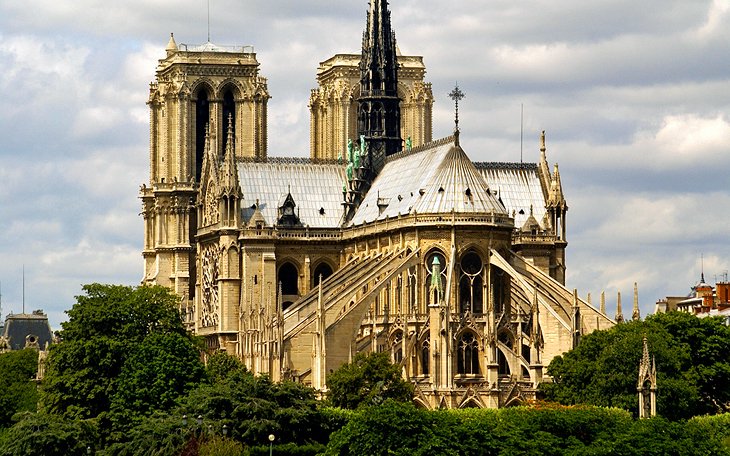
Despite the damage done by the 2019 fire, it is still worth seeing the Notre-Dame Cathedral. This awe-inspiring medieval monument stands at the heart of Paris on the Île-de-la-Cité, an island in the Seine River. To get here from the Latin Quarter , simply cross the Petit Pont bridge.
The Cathédrale Notre-Dame de Paris was founded in 1163 by King Louis IX (Saint Louis) and Bishop Maurice de Sully, and the construction took more than 150 years. The cathedral was first created in the Early Gothic style, while later additions (the west front and the nave) show the transition to High Gothic style.
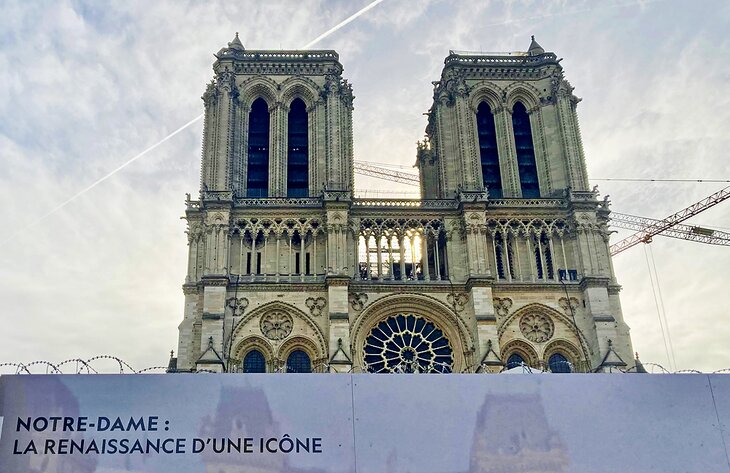
Note: A large fire in April of 2019 caused considerable damage to the cathedral: The medieval roof and the 19th-century spire collapsed. However, the monument was partly saved thanks to the work of hundreds of firefighters.
A project to repair the structure is underway. The city plans to rebuild the cathedral and restore it to its previous state. Restoration work is ongoing.
Currently, the interior of the cathedral (including the towers) and the space immediately in front of the cathedral (on the Parvis Notre-Dame) are closed to the public. A few steps away from the cathedral's facade, a section of the Parvis Notre-Dame (square) is now used for educational exhibits about the cathedral.
The Notre-Dame de Paris Cathedral anticipates reopening in December 2024. A project to redesign the landscaping around the cathedral is scheduled for completion in 2027.
Until the reopening, the Notre-Dame de Paris congregation will celebrate Mass at the Eglise Saint-Germain l'Auxerrois (2 Place du Louvre) in the 1st arrondissement.
Address: Cathédrale Notre-Dame de Paris, 6 Parvis Notre-Dame - Place Jean-Paul II, 75004 Paris (Métro: Cité or Saint-Michel Notre-Dame station)
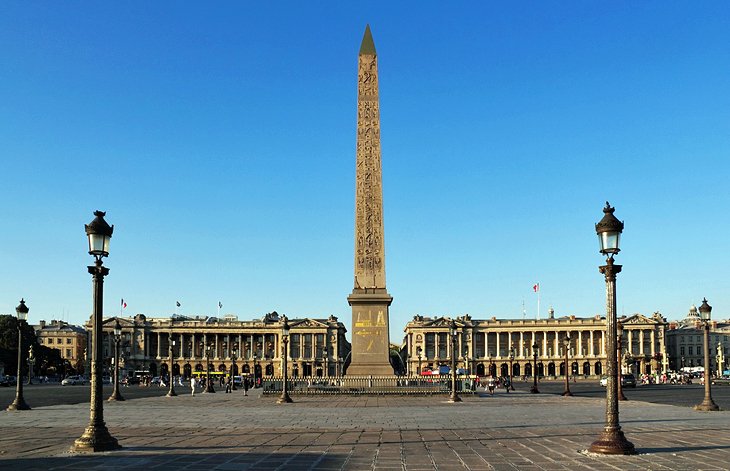
The Place de la Concorde stands at the heart of Paris both literally and figuratively. The square was created in 1772 by the architect of King Louis XV. During the French Revolution, the Place de la Concorde was the scene of state-ordered executions , including Louis XVI and Marie-Antoinette, among other victims of the guillotine. The square was also part of Napoleon's triumphal route.
One of the largest and most central squares in the city, the Place de la Concorde offers a sensational perspective of the city's landmarks. In one direction, you can admire the Arc de Triomphe and in the other, the Louvre, while the Eiffel Tower can be seen in the distance.
Two ornately decorated fountains and an Egyptian obelisk are found in the middle of the square. However, it's a bit of a hassle to get up close because you have to walk through heavy traffic. The Place de la Concorde is one of the busiest intersections in Paris.
Tip for Pedestrians : You will notice cars circulating the square at high speeds. French drivers don't always pay attention to pedestrians. Make sure to get out of the way of oncoming cars!
During summertime , the Place de la Concorde adopts a fairground ambiance, with a Ferris wheel gracing the square from June through August. The neighboring Jardin des Tuileries also has amusement park rides and fairground treats during summertime.
To arrive at the Place de la Concorde, walk from the Louvre through the Jardin des Tuileries or the Rue de Rivoli, or follow the Quai des Tuileries along the Seine River. Alternatively, you may take the Métro to Concorde station.
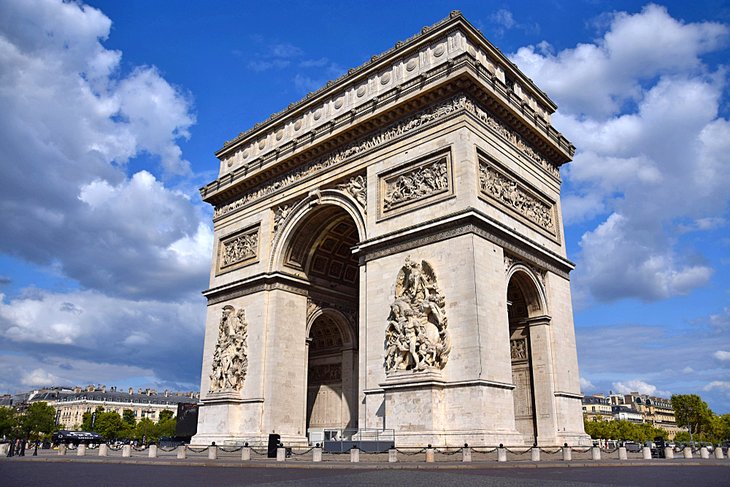
Nothing says capital city grandeur quite like a triumphal arch. Paris' Arc de Triomphe is dedicated to the soldiers who fought in the French armies of the Revolution and the Napoleonic Wars. Napoleon I commissioned the building of this mighty structure in 1806 but did not live to see its completion in 1836.
The monument was modeled after the Arch of Titus in Rome. The massive 50-meter-high arch features bas-reliefs with larger-than-life-size figures, which depict the departure, victories, and glorious return of the French armies.
Particularly noteworthy is the bas-relief by François Rude on the Champs-Elysées-facing side: Departure of the Volunteers of 1792 , also known as La Marseillaise , illustrating the troops led by the winged spirit of Liberty. On the inner surface of the arch are the names of more than 660 generals and over a hundred battles.
The Arc de Triomphe stands at the end of the Champs-Élysées, presiding over a circular intersection (the Place de l'Étoile).
From the top of the monument, a viewing terrace affords a panoramic outlook onto the 12 avenues that radiate from the Place de l'Étoile, including the route from the Avenue des Champs-Elysées to the Place de la Concorde and the Louvre. It's also possible to see all the way to La Défense, the hilltop neighborhood of Montmartre, and the Eiffel Tower.
At the foot of the Arc de Triomphe is the Tomb of the Unknown Soldier , dedicated in 1921 as a memorial to an anonymous soldier (symbol of the many other unknown soldiers who valiantly died for their country during World War One without ever receiving recognition).
The Flame of Remembrance was ignited at the Tomb of the Unknown Soldier on November 11th, 1923, and since that date has not ever been extinguished. Every evening at 6:30pm , a ritual takes place to rekindle the memorial flame at the tomb.
Throughout the year, events to honor national holidays are held at the Arc de Triomphe, including the November 11th (anniversary of the Armistice of 1918) ceremony commemorating those who perished in the war; the May 8th Fête de la Victoire (Victory Day) celebrating the end of WWII, and the liberation from Nazi occupation; as well as festivities for July 14th (Bastille Day).
Admission requires an entrance ticket. You may reserve a ticket in advance online. Free admission is included with the Paris Museum Pass (no reservations required). Guided tours are available.
For visitors with reduced mobility and young children, there is an elevator to reach the viewing terrace. Otherwise, you must take the stairs (284 steps).
Address: Arc de Triomphe, Place Charles de Gaulle, 75008 Paris (Métro: Charles de Gaulle-Étoile, Kléber or Argentine station)
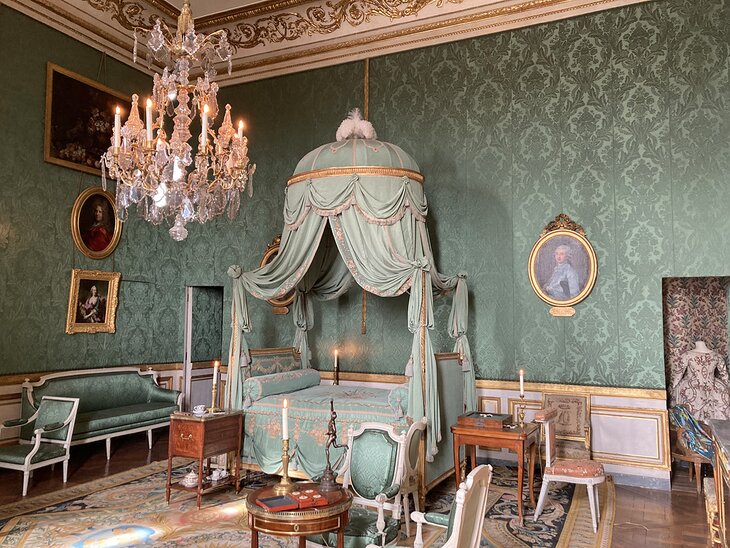
A fascinating glimpse of ancien régime (old regime) splendor awaits you at the Hôtel de la Marine . During the reign of Louis XV, this Neoclassical palace housed the apartments of the Intendants du Garde-Meuble de la Couronne (the King's Furniture Storage Intendants). The intendant had an important job: procuring and maintaining the furnishings for the king's elaborate palaces.
The Hôtel de la Marine opened to the public in 2021 after several years of painstaking restoration work. This monument is one of the newest tourist attractions in Paris.
You enter the Hôtel de la Marine through a cobblestone courtyard off the Place de la Concorde. Then walk up the massive marble staircase and into the reception rooms, where you feel like you have stepped back in time. The interior decor has been restored to a state of perfect preservation.
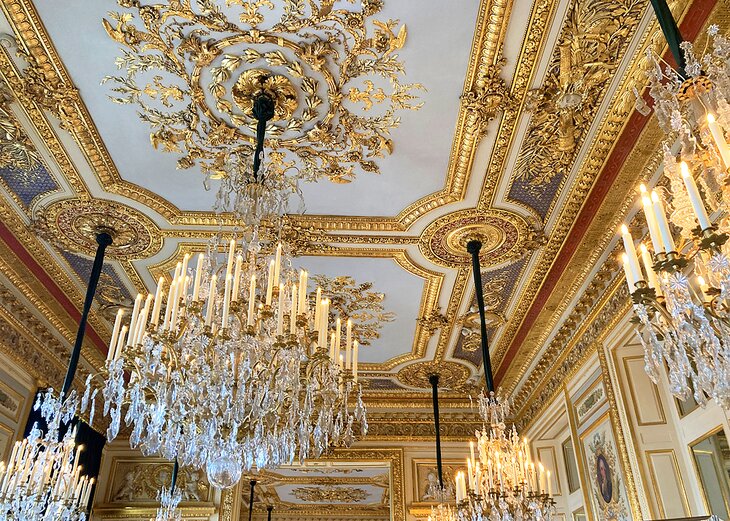
Adorned with gilded moldings and crystal chandeliers, the Salons d'Honneur salons resemble the Hall of Mirrors at Versailles . Other rooms in the Intendant's Apartments reveal the refinement of the Age of Enlightenment.
During this period, aristocratic residences were lavishly decorated with exquisite furnishings, wallpaper, curtains, and paintings. You'll also see precious antiques such as a desk created by Jean-Henri Riesener , a renowned 18th-century cabinetmaker.
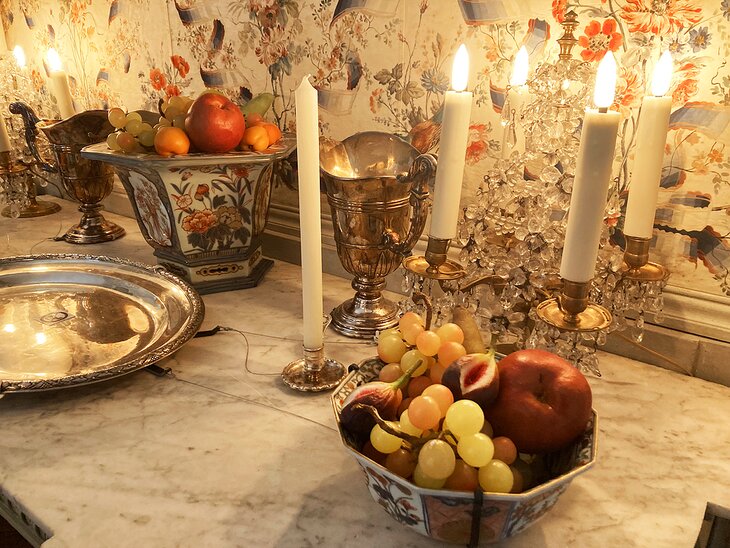
The dining room of the Intendant's Apartments, with its floral-patterned porcelain dinnerware, appears ready to welcome guests. On the guided tour, you will learn that the host placed servings of sugar (a precious commodity at the time) on the table to show off his wealth, along with bread, oysters, and bowls of fresh apricots, grapes, figs, and apples.
Be sure to step out onto the Hôtel de la Marine's Loggia , a colonnaded balcony that overlooks the Place de la Concorde. From this privileged spot, you can admire views of the Eiffel Tower, the gold-domed Hôtel National des Invalides, and the Jardins des Champs-Élysées.
Historical Notes : The Hôtel de la Marine is found on the Place de la Concorde, the square created in 1748 to display an equestrian statue of Louis XV and originally called Place Louis XV. During the French Revolution, the statue of the king was removed and the Crown jewels were stolen from the Hôtel de la Marine. In 1795, the square was renamed the "Place de la Concorde."
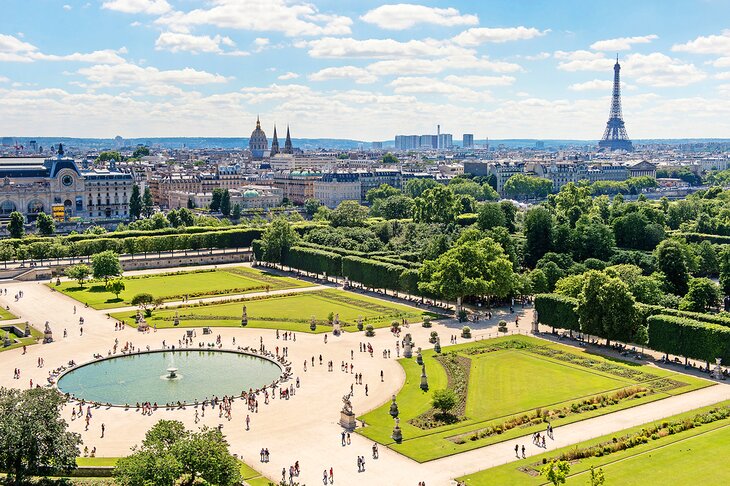
Treat yourself to some time relaxing and wandering the beautiful Jardin des Tuileries. After visiting the Hôtel de la Marine, the Place de la Concorde, or the Louvre Museum, you should spend some time wandering the nearby Jardin des Tuileries. This French formal garden was designed by celebrated landscape architect André Le Nôtre in the 17th century.
Today the garden offers an escape from the hustle and bustle in central Paris, but the ambiance was not always so idyllic. This garden is the site of the Palais des Tuileries where Louis XVI and Marie-Antoinette were essentially imprisoned during the French Revolution. The palace was destroyed by a fire in the 19th century; all that remains is the gorgeous garden.
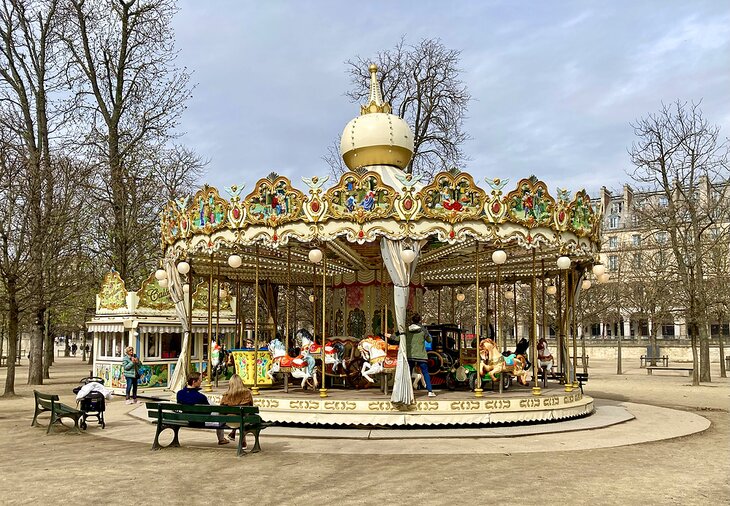
The leafy grounds feature perfectly manicured trees, statues, and pathways. You can relax on the wooden park benches or on individual green chairs which may be moved around. Find the spot that appeals to you and lounge there for a bit, while listening to birds chirp. You'll see locals having a picnic lunch or reading a book in the sunshine.
For snacks and quick meals, head to La Terrasse de Pomone , a kiosk where you can order crepes and sandwiches to-go or for dining at the outdoor tables; the Petit Plisson kiosk that sells quiches and sandwiches for dining at shaded tables; or Petit Farmers , a purveyor of artisanal ice cream.
The park's two café-restaurants, Le Pavillon des Tuileries and the Café des Marronniers offer casual meals in a tranquil setting beneath the leafy chestnut trees.
Tips : Check the opening hours of the café-restaurants and food kiosks as the hours change during different seasons. You will only find the Petit Farmers ice cream truck & stand at the Jardin des Tuileries from April through October.
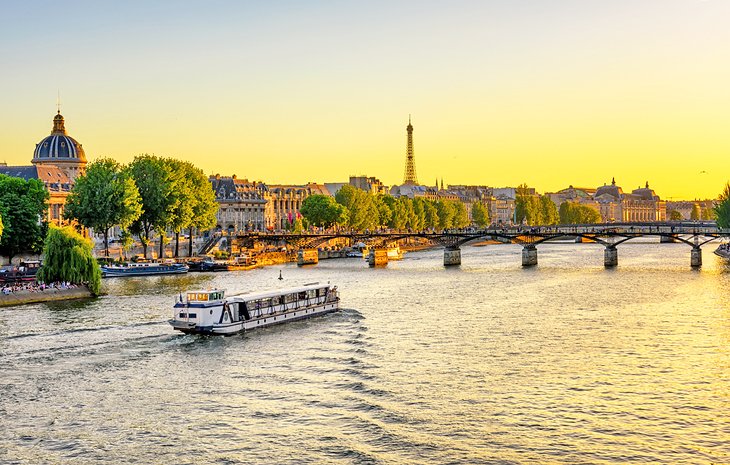
Soak up the scenery of Paris on a Seine River cruise. You'll have a chance to see the sights from a different perspective. The Seine River bridges, the Eiffel Tower, the Notre-Dame Cathedral, and the Louvre Museum look stunning from the viewpoint of a riverboat.
While a daytime cruise allows you to appreciate the glory of the monuments brightened by sunshine, the most romantic experience is an evening cruise. After sunset, the city's landmarks are illuminated, which creates a special effect, and somehow the city seems more magical.
For a cruise that includes dinner, try the Paris Seine River Dinner Cruise with Live Music by Bateaux Mouches. This luxurious riverboat cruise departs at the Pont de l'Alma (a short walk from the Eiffel Tower) and treats you to a romantic four-course meal. If you prefer a more casual boat ride, a good choice is the Seine River Direct Access Guided Cruise by Vedettes de Paris which includes commentary from a knowledgeable guide and breakfast or lunch.
Gourmands will be tempted by the Ducasse sur Seine restaurant boat, which departs from Port Debilly. This dining cruise offers a haute cuisine experience. Options include a lunch (two, three, or four-course meal) or dinner (four or five-course meal). Menus focus on contemporary-style French dishes prepared from seasonal ingredients.
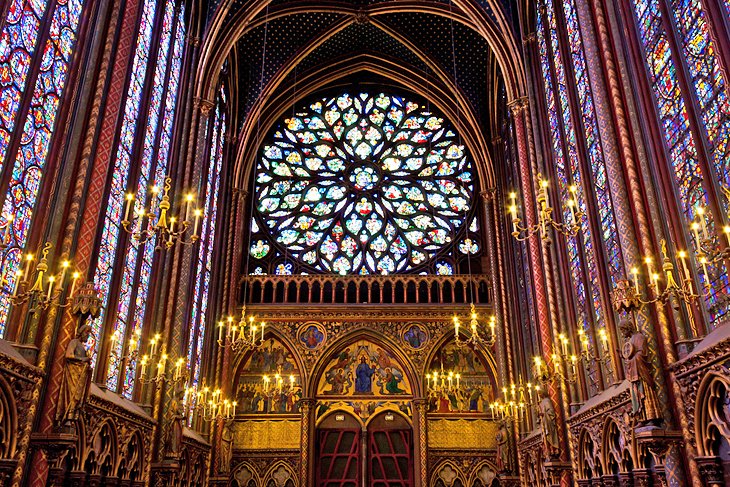
Sainte-Chapelle is considered a rare jewel among medieval houses of worship and is certainly one of the most exquisite churches in Paris . The ravishing 13th-century chapel is tucked away on the Île-de-la-Cité , just a few blocks (about a 10-minute walk) from the Notre-Dame Cathedral.
This masterpiece of Rayonnant Gothic architecture was built from 1242 to 1248 for King Louis IX (Saint Louis) to house the precious relics he had acquired from the Byzantine Emperor. The altar displays a relic of the Crown of Thorns.
An expanse of 13th-century stained-glass windows sets this chapel apart from any other church in the world. The windows' beauty and brilliance are best appreciated on a sunny day and in the morning. If possible, try to schedule your visit accordingly.
The chapel's over 1,000 stained-glass windows (covering 600 square meters) depict scenes from the bible, both Old Testament and New Testament stories. The colors and light symbolize divinity and the Heavenly Jerusalem.
Only used for church services on rare occasions, Sainte-Chapelle is open to the public as a museum (entrance tickets are required). For an additional fee, audioguides (available in French, English, German, Italian, Spanish, and Japanese) provide one hour of commentary to help visitors appreciate the art, architecture, and history of Sainte-Chapelle.
To truly experience the serene ambiance of Sainte-Chapelle, attend one of the classical music concerts held here. In the iridescent glow of the sanctuary, performances of Baroque chamber music, sacred music, or Vivaldi string quartets have a sublime quality. A regular program of concerts is held at Sainte-Chapelle year-round, with events scheduled several times a week.
Sainte-Chapelle is located in the Palais de la Cité. To find the chapel, enter the iron gate of the Palais de Justice and walk through the inner courtyard.
Another attraction nearby is La Conciergerie (tourists may purchase combined entry tickets), the prison where Marie-Antoinette was detained during the French Revolution.
Address: Sainte-Chapelle, 8 Boulevard du Palais, 75001 Paris (Métro: Cité, Saint-Michel Notre-Dame or Châtelet station)
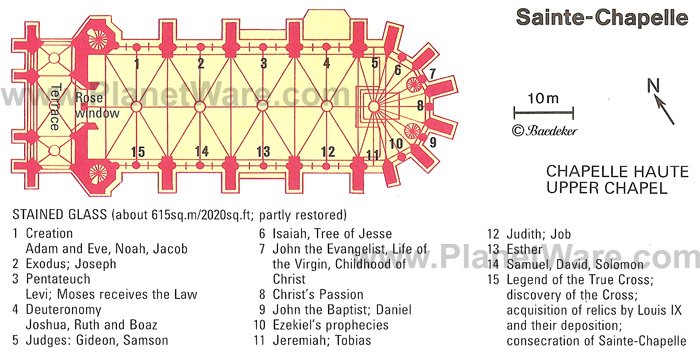
A visit to the City of Light is not complete without spending time on the sidewalk terrace or bustling interior of a famous café. It's the ultimate Parisian people-watching scene and a chance to imagine the historic rendezvous that occurred here.
To discover the legendary Paris cafés, the best place to start is the Boulevard Saint-Germain-des-Prés in the 6th arrondissement. This broad tree-lined boulevard features an enticing array of storefronts: designer fashion boutiques, prestigious cafés, and old-fashioned brasseries.
The most celebrated cafés are the Café de Flore (172 Boulevard Saint-Germain-des-Prés), which was the meeting place of Jean-Paul Sartre and Simone de Beauvoir, and Les Deux Magots (6 Place Saint-Germain-des-Prés), once the haunt of poets, authors, and artists, including Arthur Rimbaud, Paul Verlaine, James Joyce, Pablo Picasso, and Ernest Hemingway.
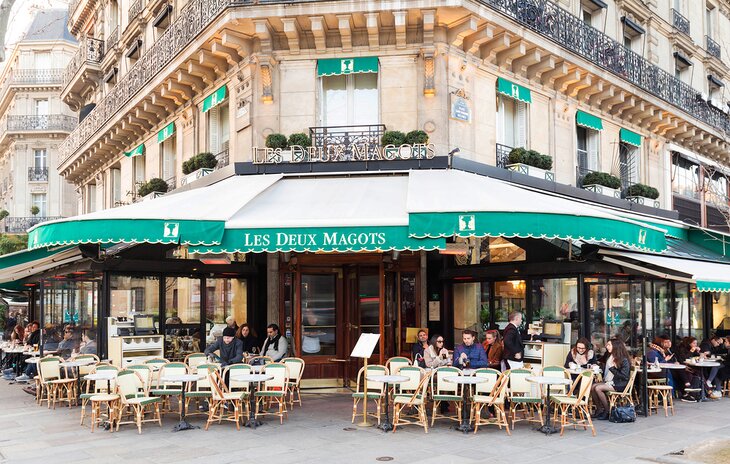
Across from Les Deux Magots is the Eglise Saint-Germain-des-Prés , one of the most important churches in Paris .
At both Café de Flore and Les Deux Magots, you will get the classic Parisian café experience, complete with waiters wearing bow ties. Although the waiters have a reputation for their brusque service, their formality adds to the authentic ambiance.
The Saint-Germain-des-Prés area also has excellent pâtisserie boutiques, boulangeries, and chocolate shops such as the Ladurée tea salon (21 Rue Bonaparte), the Maison Le Roux Chocolatier & Caramélier (1 Rue de Bourbon le Château), and Debauve & Gallais (30 Rue des Saints-Pères), a boutique founded in 1779 that supplied Marie-Antoinette with chocolates.
Join the Paris Sweet Tooth Stroll small-group tour to sample the neighborhood's finest sweet treats.
The brasseries of Boulevard du Montparnasse were also frequented by artists and writers during the early 20th century. Le Dôme in Montparnasse is a Paris institution (108 Boulevard du Montparnasse) that has attracted luminaries including Sartre, Simone de Beauvoir, and Picasso. In its glittering Art Deco dining room, the restaurant serves exceptional seafood.
Another atmospheric French brasserie with a mythical past, La Coupole (102 Boulevard du Montparnasse) has, since the 1920s, been visited by artists such as André Derain, Fernand Léger, Man Ray, Pablo Picasso, and Marc Chagall as well as the novelist Albert Camus and the philosopher Jean-Paul Sartre.
La Rotonde Montparnasse (105 Boulevard du Montparnasse) has been a gathering place for painters and writers since 1911 and still attracts cinematographers and artists today.
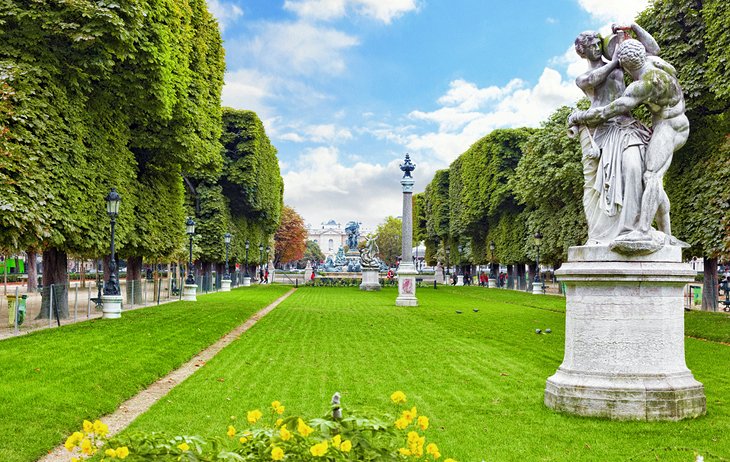
The Jardin du Luxembourg is the best-known park in Paris after the Tuileries. The 25-hectare park features a formal French garden, similar to the Jardin des Tuileries, as well as an English garden with shady groves of overgrown trees.
On a nice day, it's fun to grab a baguette sandwich at a nearby bakery and then find a chair in front of the garden's duck pond. This is the Paris version of going to the beach when the weather is pleasant. You'll notice many local residents taking a lunch break or simply soaking up some sunshine at the park. It's an especially popular spot among students of the Latin Quarter.
You can also visit a rose garden, apiary, Orangerie (orangery), and greenhouses filled with exotic orchids, as well as an orchard where heirloom varieties of apples flourish.
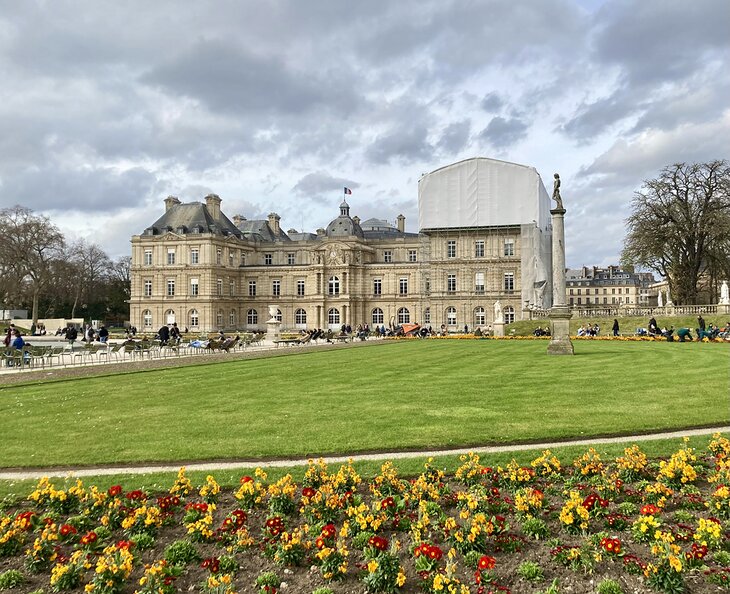
Artistic treasures are found throughout the gardens, such as the picturesque 17th-century Fontaine Médicis , a fountain basin nestled under trees opposite the east front of the Palais du Luxembourg , which today is used by the French state as the seat of the Senate.
Steps away from the Fontaine Médicis is La Terrasse de Madame , a little café-restaurant in a charming setting. You may dine at outdoor tables beneath the leafy chestnut trees. The menu includes coffee and croissants for breakfast and bistro meals for lunch, such as steak, Croque Monsieur (sandwiches), quiche, grilled fish, charcuterie, and salads. Also on the menu are traditional French desserts like profiteroles and crème brûlée .
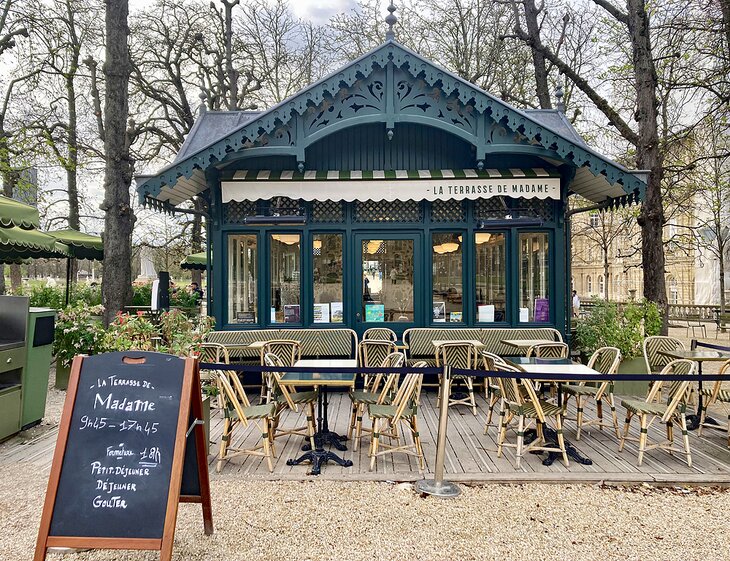
Children love the playground, which features swings, slides, a sandpit, a games area, and pony rides. A favorite activity for the youngest visitors at the Jardin du Luxembourg is steering miniature sailboats around in the octagonal pool (the boats can be hired at a kiosk by the pond).
For French-speaking kids, watching a puppet show at the Théâtre des Marionnettes is not to be missed. The Théâtre des Marionnettes is a modern venue, in the southwest area of the park near the tennis courts, that accommodates an audience of up to 275 children and adults (which makes it the largest puppet theater in France).
Address: Jardin du Luxembourg, Rue de Vaugirard/Rue de Médicis, 75006 Paris (Métro: Luxembourg or Odéon station)
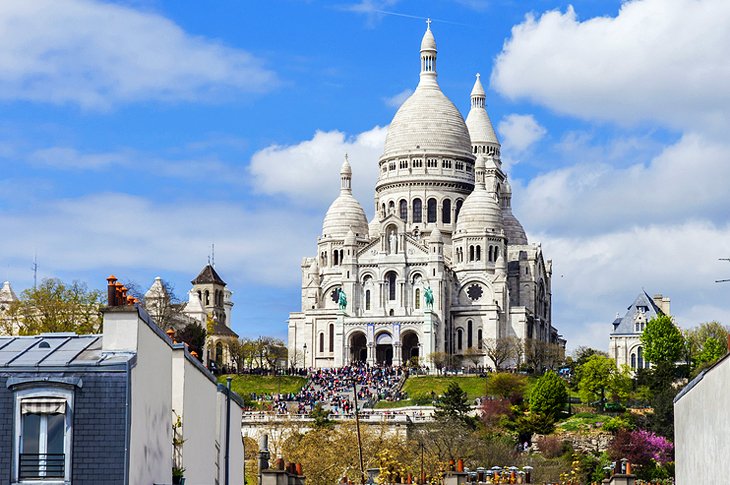
Sitting at the highest point in Paris like an ornamental decoration, the Basilique du Sacré-Coeur de Montmartre has a special aura. Its alabaster facade blends Romanesque and Byzantine styles, and from far away, it looks like a wedding cake (which is its nickname).
If you walk to the Sacré-Coeur Basilica from the Métro station, you must walk up the Esplanade, a staircase of over 200 steps, to arrive at the Basilica.
Inside the Basilica, the striking mosaic of Christ with a flaming heart gives the sanctuary an emotional and spiritual intensity, fitting for a church that was created as a symbol of hope after the Franco-Prussian War. In keeping with the somber ambiance, the Basilica's sanctuary is quite dark except for a plethora of flickering candles.
The atmosphere outside the church is quite a contrast, with Parisian joie de vivre in full swing. Locals like to hang out on the grass lawns of the Esplanade while listening to street musicians. You'll see tourists taking selfies, couples embracing, and kids playing on the grass. Below the Esplanade is an old-fashioned carousel, adding to the sense of festivity.
You can spend time on the terrace in front of the Basilica admiring the views of Paris or climb (300 steps) up to the Basilica's Dome for an even higher perspective with unobstructed panoramas. Admission to the Dome requires an entrance fee, but you may visit the Basilica free of charge .
After visiting the Sacré-Coeur, be sure to explore the enchanting neighborhood of Montmartre . This medieval country village (once considered outside of the city) has been incorporated into the city of Paris as the 18th arrondissement.
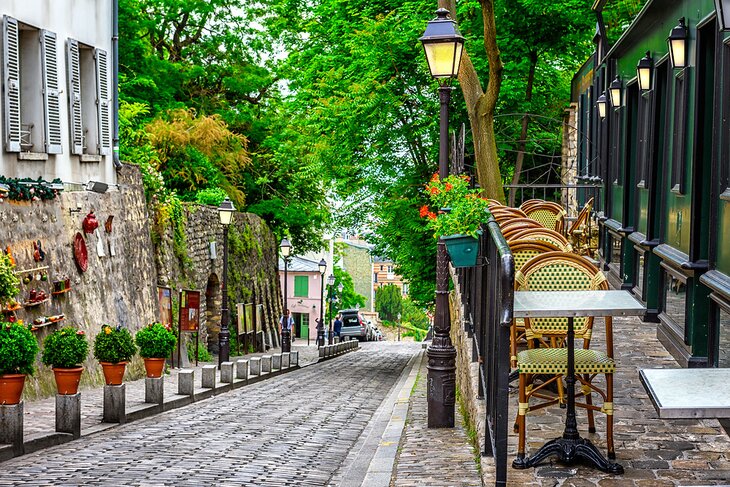
Montmartre exudes old-fashioned charm along with an avant-garde edge. Winding cobblestone streets and pedestrian staircases lead to small locally owned boutiques and restaurants, art galleries that evoke the quarter's bohemian past, and quiet squares filled with outdoor cafés .
During the Belle Époque, the village of Montmartre began to attract artists such as Henri de Toulouse-Lautrec and Edgar Degas. The bohemian creative spirit of Montmartre is still found here, especially around the Place du Tertre and the Carré Roland Dorgelès .
Montmartre has several excellent art museums, where you can admire the creations of artists who resided here in the late 19th and early 20th century (the Belle Époque). During that era, the quarter was famous for its cabarets and artists' studios.
The Musée de Montmartre (12 Rue Cortot) occupies a historic house where Auguste Renoir, Raoul Dufy, Suzanne Valadon, and other artists once lived and worked. Tucked away within the museum's gardens, you'll find the Café Renoir , which features outdoor seating in the delightful space where Renoir painted several masterpieces.
If you are intrigued by Surrealist art, be sure to visit the Dalí Paris museum (11 Rue Poulbot). This innovative museum displays more than 300 works created by Salvador Dalí. The exhibits are presented in a way that reveals the symbols and motifs used in his artworks.
Address: Basilique du Sacré-Coeur, 35 Rue du Chevalier-de-la-Barre, 75018 Paris (Métro: Abbesses)
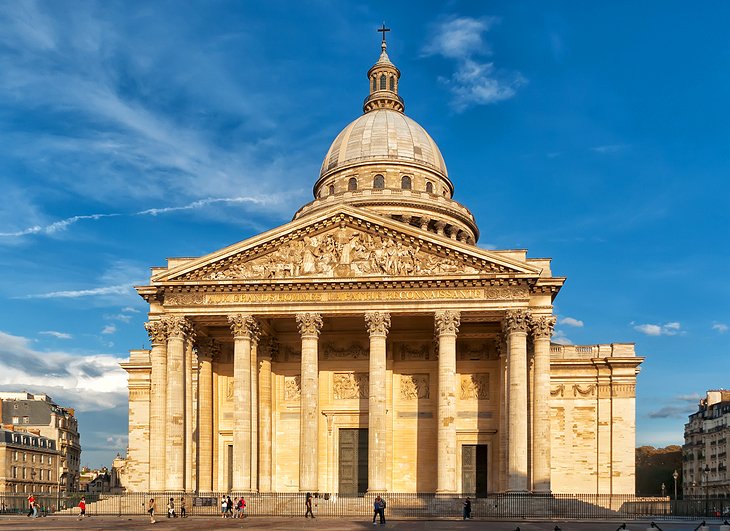
The Panthéon is the national mausoleum of France's greatest citizens. You get a sense of the important heritage just by glancing at this grand monument. The colonnaded facade and enormous dome were modeled after the ancient Pantheon in Rome.
The architecture of the Panthéon marks a clear break from the fanciful Rococo style of the Louis XV era and instead presents a simpler and more somber Neoclassical style. The inscription on the Panthéon's facade reads " Aux Grands Hommes La Patrie Reconnaissante " (" To the Great Men Recognized by Their Country ").
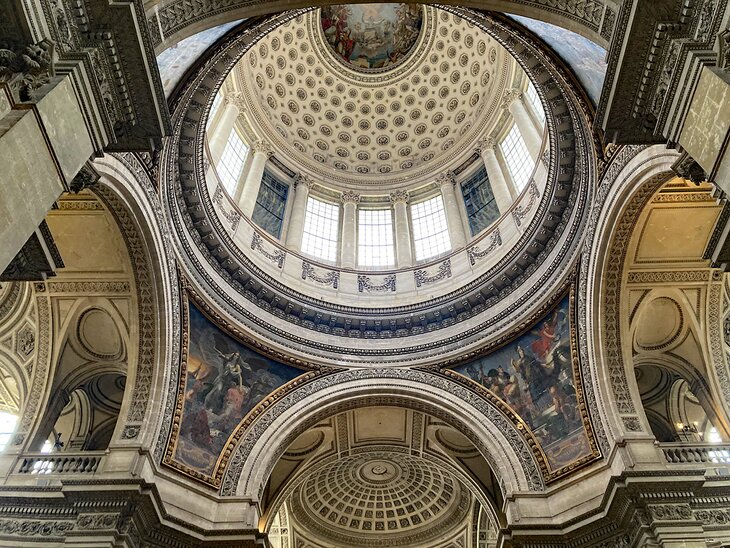
Many famous men (75 in total) are buried here, including philosophers Voltaire, Jean-Jacques Rousseau, and René Descartes; and the writers Victor Hugo, Alexandre Dumas, Émile Zola, and André Malraux. Although the monument was originally dedicated exclusively to France's male citizens, this has changed recently.
Since 1995, several of France's most esteemed female citizens have been buried in the Panthéon including the physicist Marie Curie, a two-time winner of the Nobel Prize. Five other women are buried at the Panthéon. In November 2021, Josephine Baker (the famous Black American expatriate dancer and singer) became the sixth woman to receive the honor of being inducted into the Panthéon.
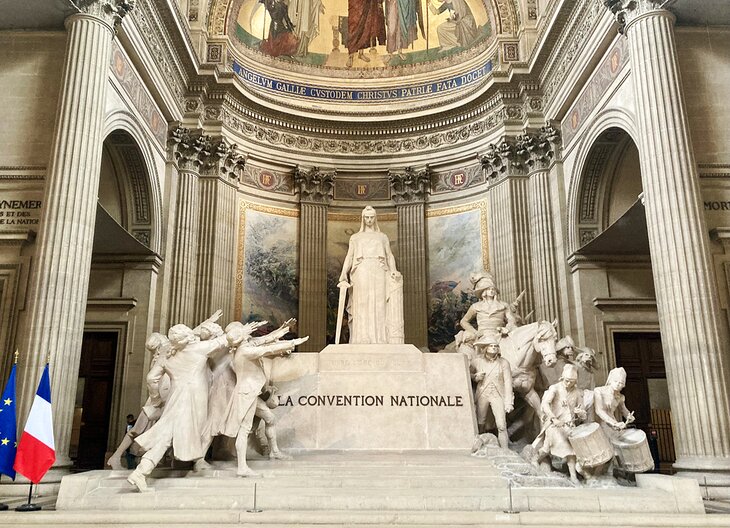
When you step inside the Neoclassical sanctuary, you will be awed by the spacious domed interior, the floor-to-ceiling paintings that depict scenes of Christian saints, and the enormous sculpture that celebrates French Revolution deputies ( La Convention Nationale ).
Beneath the monumental rotunda is an unusual centerpiece: a science experiment rather than a work of art. Foucault's pendulum , created by French physicist Léon Foucault, was installed in 1851 to demonstrate his theory that the Earth rotates. The brass pendulum hangs from the dome on a steel wire and constantly oscillates in a circular trajectory.
To find the famous citizen's monuments and tombs, you will need a map (available on-site). The underground crypt is arranged in a geometric fashion, but it is easy to get lost.
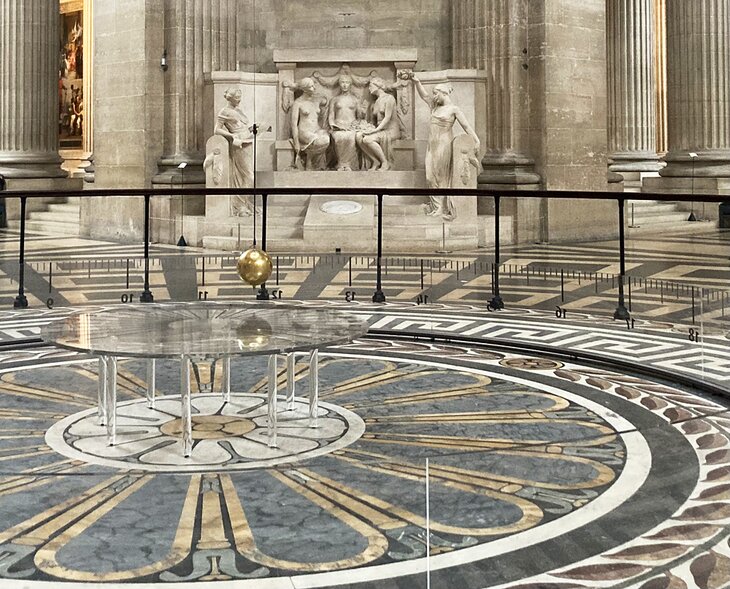
Entrance to the Panthéon requires an admission fee, unless you have a Paris Museum Pass and except for the first Sunday of every month from November through March.
From April through September (for an additional entrance fee), you may ascend to the Panthéon's dome, where a colonnaded balcony provides a sensational view of the city's landmarks. You can see the Notre-Dame Cathedral, the Louvre Museum, the Eiffel Tower, and the Sacré-Coeur Basilica in the hilltop neighborhood of Montmartre.
Address: Panthéon, Place du Panthéon, 75005 Paris (Métro: Luxembourg station)
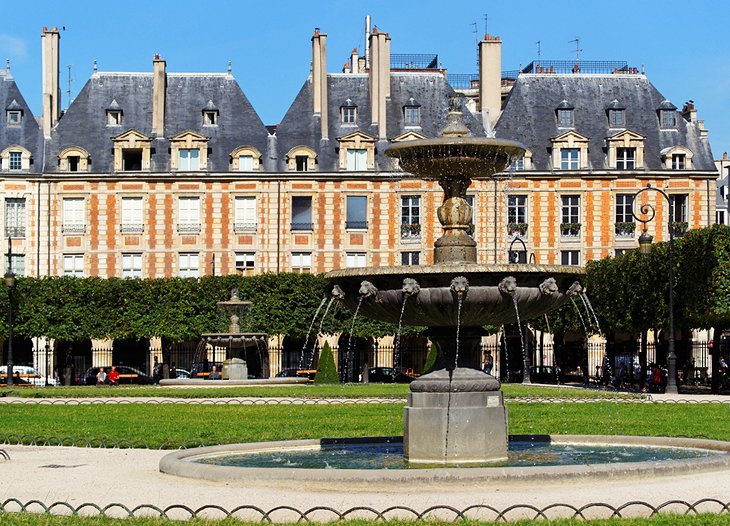
In the charming Marais district, the Place des Vosges is Paris' oldest public square. With its uniform red-brick architecture, this elegant square provided a model for other squares such as Place Vendôme and Place de la Concorde.
The Place des Vosges was constructed between 1605 and 1612 (called Place Royale at the time) for King Henri IV. The buildings originally housed aristocratic residences.
The Place Royale offered a splendid setting for festive occasions in the 17th century, such as tournaments, state receptions, and court weddings. It was also a favorite spot for duels, in spite of Cardinal Richelieu's ban on dueling. The celebrated courtesan of Louis XIII's reign lived at number 11, and the future Madame de Sévigné was born in 1626 at number 1 on the square.
Victor Hugo rented an apartment at number 6 on the Place Royale between 1832 and 1848. Today this apartment is a museum, the Maison de Victor Hugo (6 Place des Vosges) which is devoted to educating visitors about the life and work of Victor Hugo.
The Place des Vosges is at the heart of Le Marais, a medieval quarter with narrow cobblestone streets, grand Renaissance palaces, and hôtels particuliers (mansions) of the 16th and 17th centuries. Several of these stately old buildings have been converted into museums.
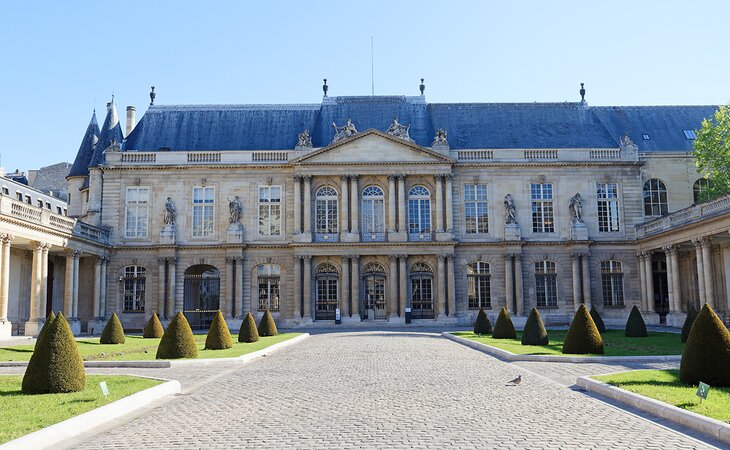
A fascinating glimpse of France's history awaits you at the Musée des Archives Nationales (Museum of the National Archives) in the 17th-century Hôtel de Soubise (60 Rue des Francs-Bourgeois). The museum presents historical exhibits including the Edict of Nantes, French Revolution objects, Marie-Antoinette's last testament, and a letter written to Napoleon.
The most important museum of the quarter is the Musée Carnavalet - Histoire de Paris. This recently renovated museum illustrates the history of Paris from antiquity through the French Revolution and the Belle Époque until the present day.
In the Hôtel Salé (a 17th-century aristocratic mansion), the Musée National Picasso-Paris (5 Rue de Thorigny) wows you with its incredibly extensive collection (over 5,000 pieces) of Picasso's artwork, including some of his most iconic masterpieces.
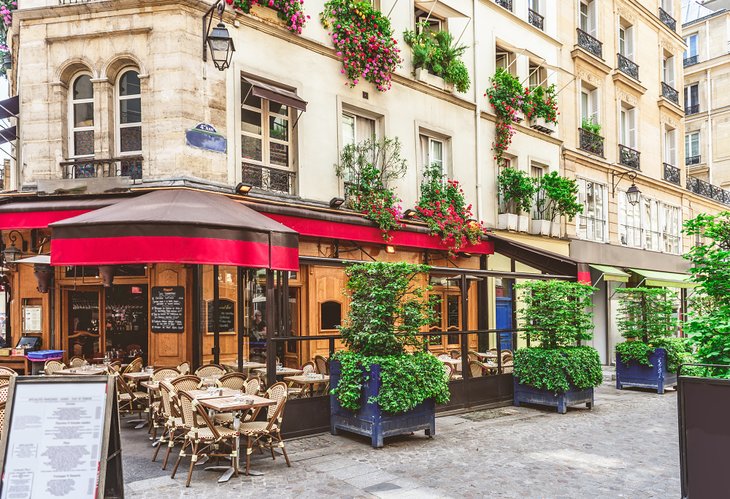
More than just an open-air museum filled with historic monuments, Le Marais has become a trendy quarter full of fashion boutiques, cute cafés, and unique shops. Spend some time wandering the Rue de Sévigné and its cross street, the Rue des Francs Bourgeois . This area brims with youthful energy and is a fun place to visit for a stroll or a coffee break.
Another interesting fact about Le Marais is that it has a significant Jewish community. The Musée d'Art et d'Histoire du Judaïsme (71 Rue du Temple) presents the 2,000-year history of France's Jewish communities, along with educational programs about Jewish culture and exhibitions of artwork by Jewish artists such as Chagall and Modigliani.
Nearby, the Jardin Anne Frank offers the tranquility of a secluded garden. This quiet, leafy green space features benches, shady trees, and an orchard. One of the chestnut trees in the garden was grafted from a tree that Anne Frank could see from the window of the annex where she lived in Amsterdam.
For those in search of a refined Parisian experience, the Mariage Frères (30 Rue du Bourg-Tibourg) is the place to go. This tea salon serves its aromatic tea with savory and sweet delicacies in a French colonial-style dining room; its adjoining shop sells a wide selection of scented teas in distinctive tins.
Many tourists wait in line to try the authentic falafel at L'As du Fallafel (34 Rue des Rosiers), considered one of the best Middle Eastern restaurants in Paris. This area has several kosher restaurants and kosher bakeries.
Tip : Keep in mind that L'As du Fallafel and other Jewish-owned shops in the Marais are closed on Shabbat (Friday evening and Saturday during the daytime).
Address: Place des Vosges, 75004 Paris (Métro: Saint-Paul or Bastille station)
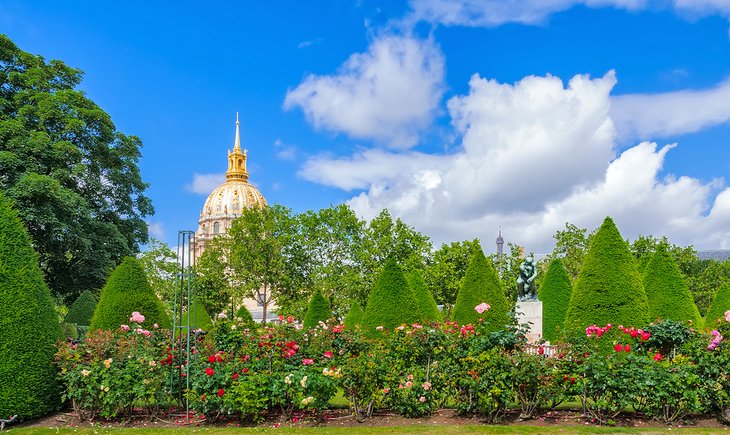
The Musée Rodin is a hidden gem in the posh 7th arrondissement. This peaceful haven of refinement occupies the Hôtel Biron , an 18th-century mansion where sculptor Auguste Rodin lived and worked for many years. The property includes a seven-acre Sculpture Garden that blooms with flowers throughout the year.
In 1908, Auguste Rodin began to rent several rooms on the ground floor of the Hôtel Biron to use as an atelier. Rodin later took over the entire Hôtel Biron, which became his place of residence for the rest of his life. In 1916, Rodin donated his artworks and collection of antiquities to the French state, and the museum was established soon thereafter.
The Musée Rodin displays a remarkable assortment of Rodin's sculptures, as well as the works of Camille Claudel. Rodin masterpieces presented in the Hôtel Biron include Danaïd , an expressive marble sculpture depicting a mythological character (created in 1890); The Age of Bronze (created in 1877); The Cathedral , a stone sculpture of two intertwined hands (created in 1908); and The Kiss , one of Rodin's most sensual works (created around 1882).
Several monumental Rodin sculptures preside over various corners of the Sculpture Garden. The Thinker , Rodin's most iconic work of art , sits on a pedestal overlooking the perfectly manicured formal garden. The expressive Monument to Balzac stands in a shady spot beneath leafy trees, while a bronze statue of Adam is sheltered behind dense shrubbery.
Adding to the romance of the garden are the park benches and the café-restaurant, L'Augustine , where you may relax on an outdoor terrace. The café-restaurant also has a casual indoor dining space. Here you can savor a classic French meal, complete with dessert supplied by the renowned Maison Lenôtre pâtisserie.
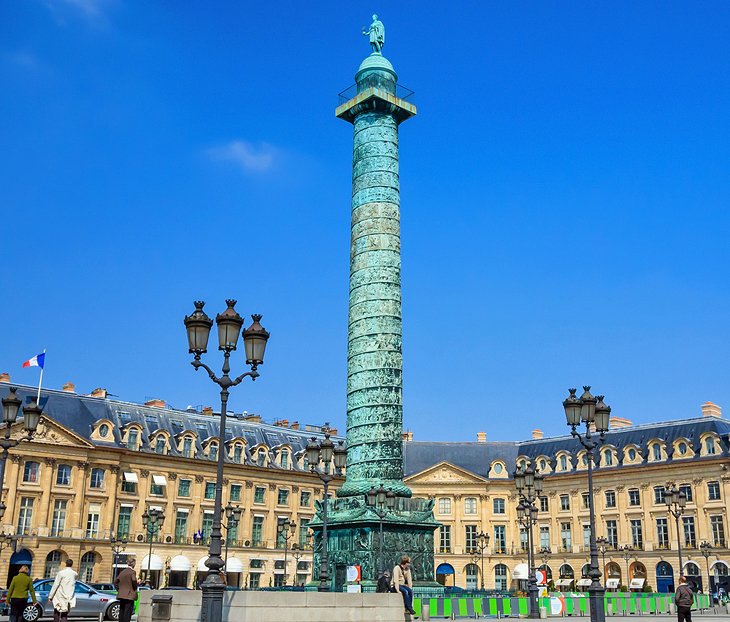
This graceful 17th-century square was designed by Jules Hardouin-Mansart , one of the leading architects of Le Grand Siècle (during the reign of Louis XIV). Originally, the square was called Place Louis le Grand and was intended to house royal establishments.
The charm of the Place Vendôme is that it has retained the consistency of the overall design, which combines regal ostentation with civic simplicity. Following careful restoration in the early '90s, it has been restored in all its splendor.
The square is known for its upscale jewelry boutiques including Boucheron, Chaumet, Van Cleef & Arpels, and Cartier. Another luxury establishment here is the Ritz Hotel , which was frequented by Ernest Hemingway, Scott Fitzgerald, and Gertrude Stein.
Coco Chanel made the Ritz Paris her home for 34 years; she decorated her suite in her signature style with velvet-upholstered sofas, lacquered furniture, and gilded mirrors. The Ritz Paris still has a suite named after Coco Chanel that exemplifies her vision of Parisian chic.
At the center of the Place Vendôme stands a landmark of historic importance, the Colonne de la Grande Armée (replacing a statue of Louis XIV that was removed in 1792). Built between 1806 and 1810, the 42-meter-high column is dedicated to Napoleon and his Grande Armée (army) who fought heroically and victoriously in the Battle of Austerlitz (in December 1805).
The column's facade is crafted from bronze plaques embossed with 108 spiraling bas-relief friezes (similar to Trajan's Column in Rome), which tell the story of the glorious events that took place during Napoleon's campaign of 1805.
Address: Place Vendôme, 75001 Paris (Métro: Tuileries or Opéra station)
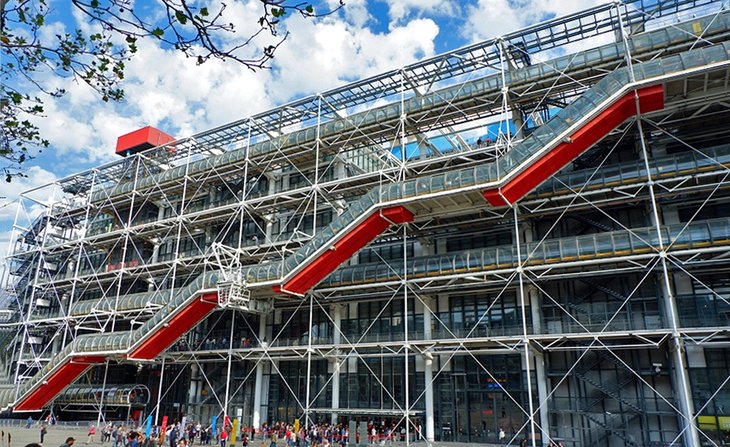
In the charming Le Marais quarter, the Centre Pompidou is a cultural center devoted to modern art. The building itself features shocking modern architecture, sometimes described as an "inside out" design because the architectural details of staircases and elevators appear on the exterior.
The main attraction of the Centre Pompidou is the Musée National d'Art Moderne (National Museum of Modern Art), which displays iconic works of art chosen from an extensive collection of over 100,000 pieces. The collection focuses on contemporary art created from 1905 to the present.
The collection covers all the movements of modern art, beginning with the Post-Impressionist "Fauves" and "Les Nabis" movements (André Derain, Raoul Dufy, Henri Matisse, Pierre Bonnard, and Marc Chagall) and continuing with the famous movement of Cubism (Pablo Picasso, Georges Braque, Fernand Léger, and Robert Delaunay).
Each room highlights a specific time period or artistic movements such as Expressionism, Constructivism (Paul Klee and Piet Mondrian), Surrealism (Salvador Dalí, Max Ernst, René Magritte, and André Masson), Abstract Expressionism (Mark Rothko, Nicolas de Staël, Hans Hartung, and Serge Poliakoff), Informal Art (Jean Dubuffet), New Realism, and Pop Art (Andy Warhol, Claes Oldenburg).
Several masterpieces of the collection are not to be missed : Avec l'Arc Noir by Wassily Kandinsky, Manège de Cochons by Robert Delaunay, Portrait de la Journaliste Sylvia von Harden by Otto Dix, The Frame by Frida Kahlo, Les Mariés de la Tour Eiffel by Marc Chagall, La Blouse Roumaine by Henri Matisse, New York City by Piet Mondrian, and Les Loisirs-Hommage à Louis David by Fernand Léger.
The center has two bookstores, a casual café, and a boutique that sells gift items inspired by contemporary art.
For a special dining experience, head to the Centre Pompidou's restaurant on the museum's top floor. Restaurant Georges features floor-to-ceiling windows with spectacular panoramic views of the Paris cityscape. Tables on the terrace look out directly onto the Notre-Dame Cathedral, the Eiffel Tower, and Montmartre.
Address: Centre Pompidou, Place Georges-Pompidou, 75004 Paris (Métro: Rambuteau, Hôtel de Ville, Châtelet or Rambuteau station)
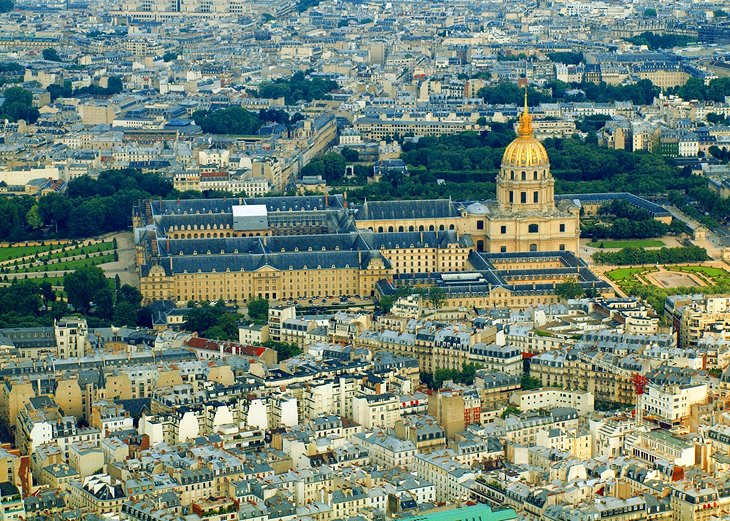
Louis XIV founded the Hôtel Royal des Invalides in the late 17th century as a home for disabled soldiers. The building was constructed between 1671 and 1676 under the direction of the architect Libéral Bruant and centered on the Eglise Saint-Louis-des-Invalides, which was later redesigned by the architect Jules Hardouin-Mansart in 1706.
Today, the Hôtel National des Invalides still has a hospital (Institution Nationale des Invalides) that provides medical care for disabled veterans.
The monument also includes several tourist attractions: three museums and two historic churches. You could easily spend hours here, and luckily the site has excellent amenities: a café-restaurant, the Angelina tearoom (famous for its hot chocolate and pastries) in a tree-shaded courtyard, and a bookstore/gift shop.
Founded in 1794, the Musée de l'Armée (Army Museum) presents a large collection of military equipment and uniforms, weapons, prints, and armor from various historical periods. The museum covers the military history of France from the 13th century (the Crusades) to the 17th century. There are also paintings of Napoleon and well-known generals, as well as maps that depict the French campaigns.
The Musée de l'Ordre de la Libération honors the soldiers who fought for the liberation of France during the Second World War, from 1940 to 1945. This museum also educates visitors about the deportation of Jews from France, the Resistance, and life in France during the war.
The military strategy of the 17th century comes to life at the Musée des Plans-Reliefs (Museum of Relief Maps). The museum displays 97 detailed (1 to 600 scale) relief maps of France's fortified towns (citadels) and fortresses that date from 1668 to 1871. Louis XIV's Minister of War (and later ministers) used the maps for military planning purposes.
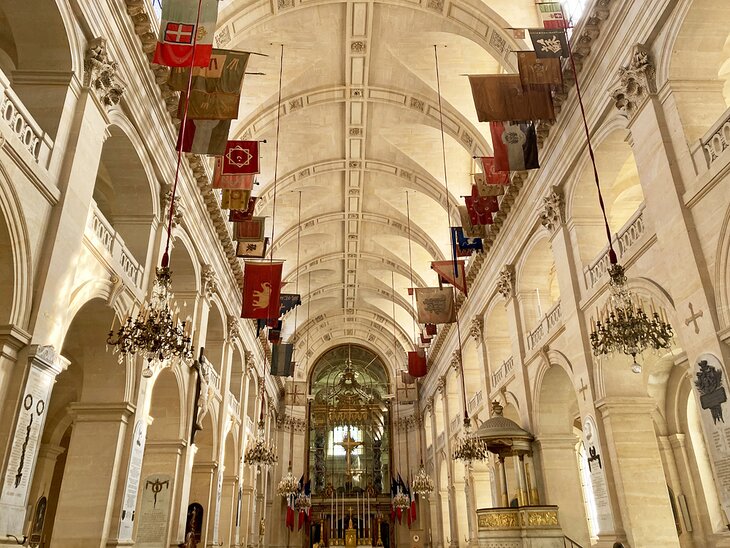
A gold-domed Neoclassical church, the Eglise du Dôme des Invalides was built in 1677 as a royal chapel for Louis XIV but is most famous for being the site of Napoleon's Tomb , installed here in 1861 by the orders of King Louis-Philippe. The imperial tomb stands beneath a magnificent cupola, which was painted by Charles de la Fosse.
Designed for veterans to worship, the Cathédrale Saint-Louis des Invalides (constructed around 1676) connects with the Eglise du Dôme des Invalides. This chapel was built in keeping with the etiquette of the 17th century and has a separate entrance from the Eglise du Dôme. The Eglise Saint-Louis des Invalides still serves as the cathedral for the French army.
Address: Hôtel National des Invalides, Esplanade des Invalides, 129 Rue de Grenelle, 75007 Paris
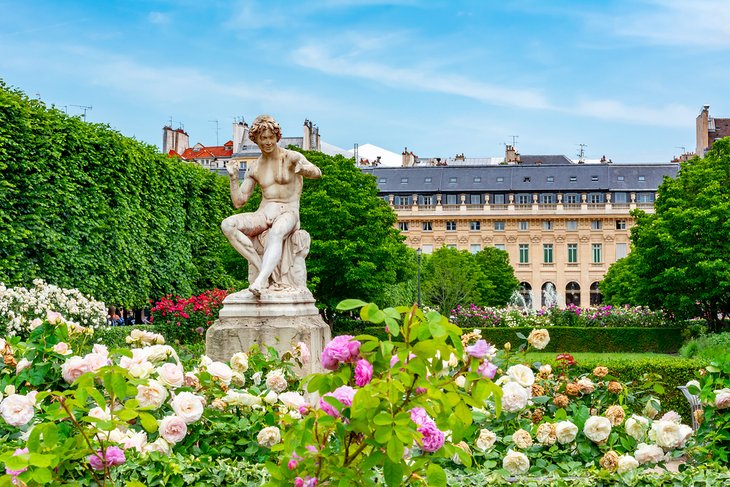
Just steps away from the Louvre Museum, you will find a welcome retreat amid the bustle of Paris' 1st arrondissement. Visiting this secluded spot feels like a secret getaway, even though it's right in the center of the city.
The Palais-Royal was created as a residence for Cardinal Richelieu in 1633, during the reign of Louis XIII. Richelieu later bequeathed the palace to the royal family, and it became the childhood home of Louis XIV.
Exemplifying classical French architecture, the Domaine National du Palais-Royal is made up of 60 pavilions surrounding a courtyard and a garden, the Jardin du Palais-Royal . This peaceful enclosed space has the feeling of being its own little village within the city.
After wandering the busy streets of Paris, you will be delighted by the lush tree-shaded grounds. You might be surprised to see that the courtyard features a contemporary sculpture installation, a striking contrast to the historic architecture.
The buildings are connected by a colonnaded pathway and arcaded galleries (verandas) filled with high-end boutiques . There are fancy cafés with pleasant outdoor terraces and two gastronomic restaurants: the haute-cuisine Palais Royal Restaurant (two Michelin stars); and Le Grand Véfour in an 18th-century dining room featuring ornate " art décoratif " design motifs.
The Palais-Royal area has two theaters: the Théâtre du Palais-Royal (38 Rue de Montpensier), which dates back to 1783 and continues to present theater performances in French; and La Comédie-Française (1 Place Colette), a theater known as the " La Maison de Molière " because it has staged so many of the famous playwright's works. The Comédie-Française was inaugurated in 1790 and is still in use during its theater season.
A lovely place for a stroll, the Domaine National du Palais-Royal is open every day, free of charge. The Centre des Monuments Nationaux offers guided group tours.
Address: Domaine National du Palais-Royal, 8 Rue Montpensier, 75001 Paris (Métro: Palais Royal-Musée du Louvre or Pyramides station)
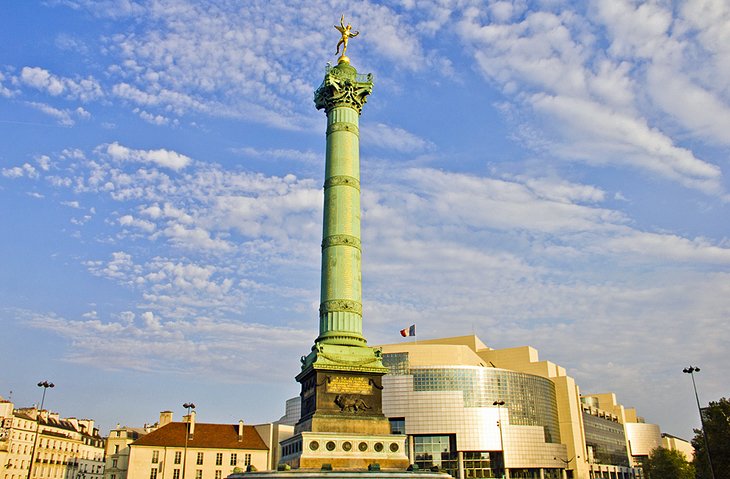
Now, only the name of this square is a reminder that the notorious state prison known as the Bastille, the much-hated symbol of absolutist power, once stood here. After the storming of the Bastille on July 14, 1789, the prison was completely demolished.
In the center of Place de la Bastille is the 51-meter-high Colonne de Juillet , topped by a graceful gilded figure of Liberty ( Génie de la Liberté ). The monument commemorates the July Revolution of 1830, which overthrew King Charles X and brought Louis-Philippe d'Orléans to power.
Four Gallic cocks and a lion relief on the base of the column symbolize the free people of France. A spiral staircase of 283 steps inside the column leads to a viewing platform.
On the site of the Bastille prison is the new Opera House, the Opéra Bastille , inaugurated by President Mitterrand on July 13, 1989. This immense modern theater has seating for 2,745 people. Both the view of the stage from the auditorium and the acoustics are superb.
The Opéra Bastille presents a calendar of events that includes opera and ballet performances by the Opéra National de Paris and the Corps de Ballet de l'Opéra de Paris.
For a memorable evening in Paris, attend one of the performances at the Opéra Bastille and then dine in the Bastille area. This trendy neighborhood is brimming with quirky boutiques, hip clothing shops, stylish restaurants, and happening cafés.
Address: Place de la Bastille, 75012 Paris (Métro: Bastille)
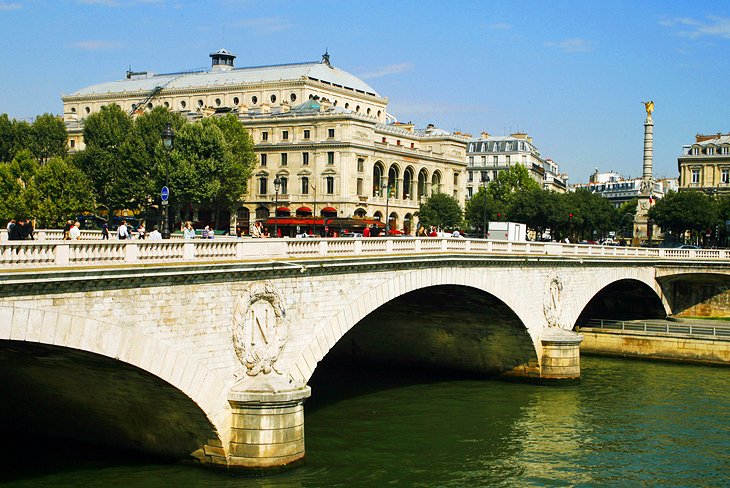
The Place du Châtelet stands at the very center of Paris in the 1st arrondissement, overlooking the Seine River. The Pont au Change (bridge) provides access from the Île de la Cité to the Place du Châtelet.
Tip : It's just a short walk from Sainte-Chapelle and La Conciergerie on the Île-de-la-Cité to the Place du Châtelet, so it would make sense to visit these tourist attractions at the same time.
Two theaters grace the Place du Châtelet. The opulent Second Empire Théâtre du Châtelet (1 Place du Châtelet) presents a wide variety of music concerts, as well as dance and theater performances. A listed Monument Historique where Sarah Bernhardt once directed shows, the Théâtre de la Ville (2 Place du Châtelet) stages a diverse program of dance, music, and theater performances.
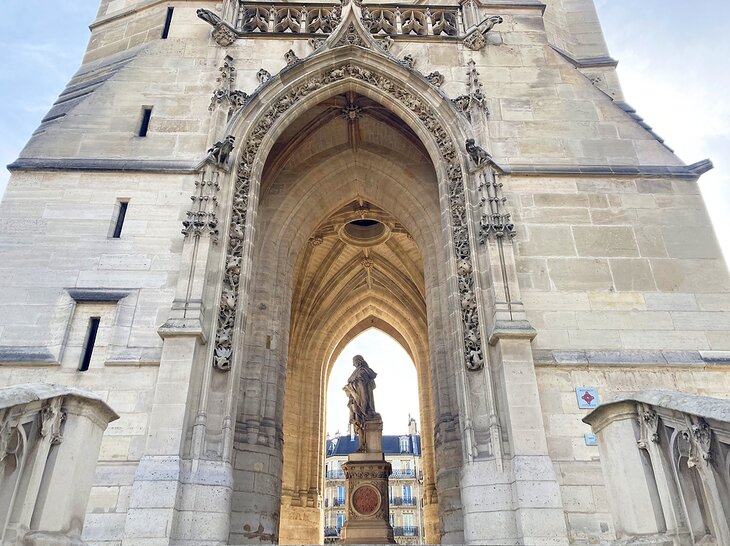
The area around Place du Châtelet is also worth exploring. Continue towards the Rue de Rivoli, past the Boulevard de Sébastopol, and wander through the small park to find the Tour Saint-Jacques . The 16th-century Flamboyant Gothic clock tower is all that remains of the Eglise Saint-Jacques-de-la-Boucherie (the patron saint of butchers), the town's old parish church.
The Saint-Jacques Tower is also famous as the place where Blaise Pascal conducted one of his barometric experiments, which showed the effect of altitude on the height of a column of mercury.
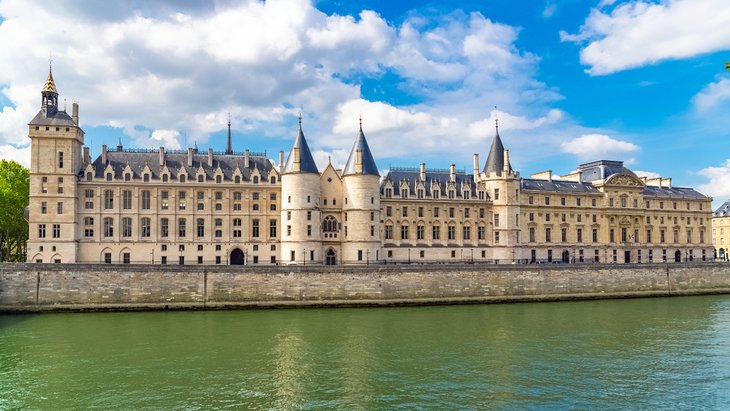
Never mind the inviting name, this imposing medieval fortress was an infamous place of detention and a courthouse (from 1793 to 1795) during the French Revolution. Here, prisoners including Marie-Antoinette and Robespierre were kept in dank cells while awaiting their fate.
The Conciergerie is a remnant of the Palais de la Cité , the royal residence of France's kings in the 13th and 14th centuries until the royal residence was moved to the Louvre. During the Restoration (return of the Bourbon monarchs to the throne), the Conciergerie was no longer used as a prison and Marie-Antoinette's cell was converted into a commemorative chapel.
Today, the Conciergerie is a UNESCO World Heritage Site and is open to the public as a museum. It's possible to purchase a combined entry ticket for the Conciergerie and Sainte-Chapelle. Admission to the Conciergerie is included with a Paris Museum Pass.
During your visit, you will have a chance to walk through the Prisoners' Corridor which includes a replica of French Revolution-era prison cells. An evocative exhibit, the Salle des Noms lists the names of more than 4,000 people who were put on trial by the Revolutionary Tribunal and includes their biographies.
Of course, you must visit the expiatory chapel of Marie-Antoinette (the commemorative chapel). Look for the motif of tears painted on the walls.
Other highlights of the visit include the Salle des Gardes which exhibits artifacts from the bloody Reign of Terror, including a guillotine blade, prison regulations, and a copy of Marie-Antoinette's last letter.
The Salle des Gens d'Armes is a 14th-century vaulted Gothic hall of awesome proportions. In this forbidding room, the condemned prisoners were handed over to the executioner.
For an exceptional view of the building's Neo-Gothic facade, stand on the opposite side of the Seine River on the Quai de la Mégisserie. From this distance, with its three round towers and the Tour de l'Horloge (Clock Tower), the fortress resembles a fairy-tale castle rather than a penitentiary.
Address: 2 Boulevard du Palais, 75001 Paris (Métro: Cité or Saint-Michel Notre-Dame station)
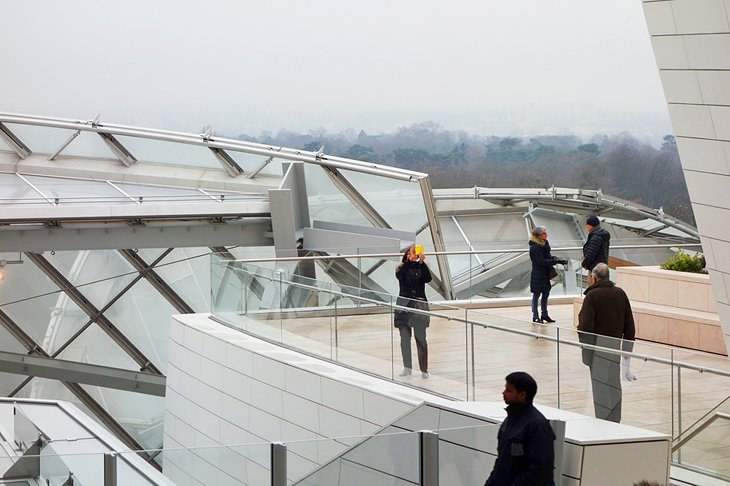
Formerly royal hunting grounds, the Bois de Boulogne is now home to a surprising modern landmark. Opened in 2014, the Fondation Louis Vuitton was commissioned by Bernard Arnault, chairman of the Louis Vuitton Moët Hennessy corporation.
Acclaimed American architect Frank Gehry designed the striking building, using 3,600 glass panels and more steel than the amount in the Eiffel Tower. The museum features 3,500 square meters of exhibition space with 11 different galleries illuminated by natural light.
In keeping with the museum's modern theme, the permanent collection focuses entirely on 20th-century and 21st-century art organized into four different categories: Expressionism, Contemplative Art, Pop Art, and Music & Sound.
The Fondation Louis Vuitton offers a year-round calendar of events and temporary exhibits. Cultural events and music performances are presented in a 1,000-seat auditorium.
Not to be missed are the four outdoor terraces on the rooftop, which afford sweeping views of the Bois de Boulogne, La Défense district, and the Eiffel Tower in the distance. You may also shop at the bookstore and enjoy a snack or meal at Le Frank Restaurant .
A tourist attraction in itself, the 850-hectare Bois de Boulogne has walking paths, gardens, bicycle rentals, picnic areas, and a lake for boating. Three upscale restaurants, including La Grande Cascade , the Auberge du Bonheur , and the three Michelin-starred restaurant Le Pré Catelan , offer traditional French fine dining. At the park's hippodrome used for horse races, La Brasserie Paris Longchamp serves casual sit-down meals.
Within the Bois de Boulogne is the Parc de Bagatelle with picnic tables, a snack bar, and a rose garden. The 18th-century Château de Bagatelle is open on Sundays and for temporary exhibitions. The Orangery of the Parc de Bagatelle hosts a Chopin Festival every year from mid-June until mid-July.
Address: 8 Avenue du Mahatma Gandhi, Bois de Boulogne, 75116 Paris (Métro: Pont de Neuilly or Avenue Foch)
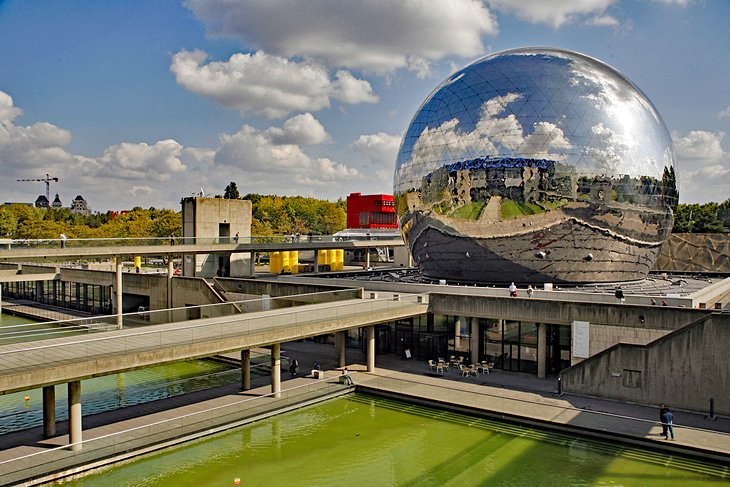
Covering 55 hectares, the Parc de La Villette is the largest landscaped green space in Paris. The park is brimming with attractions, including children's playgrounds and the Cité de la Music .
The park is also home to 400-seat La Géode IMAX theater; the Zénith Paris - La Villette concert hall; the Philharmonie de Paris performance venue; and Le Trabendo , which stages rock, rap, and hip-hop music concerts.
During summertime, Parisians (and a few tourists) enjoy attending cultural events at the Parc de La Villette. For several days at the end of May, the Villette Sonique festival draws huge crowds to outdoor music concerts. Other festivals include Jazz à La Villette held from late August through early September and an outdoor film festival ( Cinéma en Plein Air ), which takes place in the park from mid-July to mid-August.
The park features a variety of themed gardens with walking paths, footbridges, and bright red architectural "follies" designed by Bernard Tschumi. The area around the Canal de l'Ourcq is embellished with ponds and fountains.
Address: 211 Avenue Jean Jaurès, 75019 Paris (Métro: Porte de la Villette)
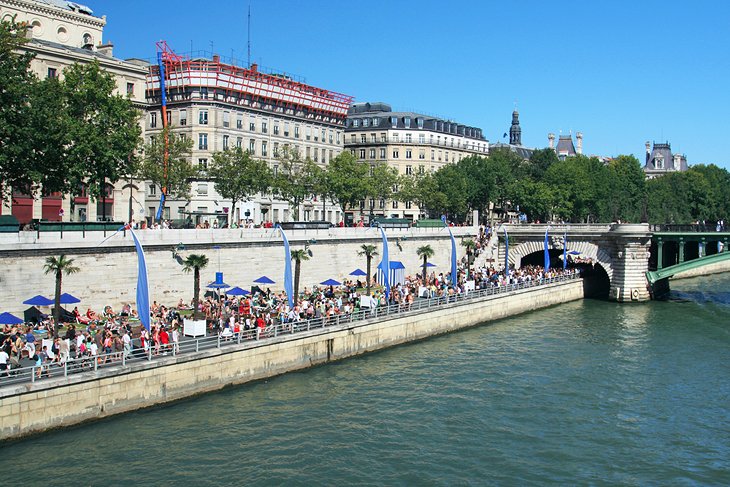
Planning to visit Paris during summertime? Be sure to pack your swimsuit! Even though the city is far from the sea, you can still find "beaches" for sunbathing.
From early July through late August, the Seine River becomes a beach destination. The riverbanks along the Quai de Seine and Quai de Loire are transformed into little resorts, complete with lounge chairs, sun umbrellas, and palm trees. Recreational opportunities include table football, tai chi, and petanque.
Other summertime recreational opportunities (in July and August) include swimming at the Bassin de La Villette , which has three swimming pools with lifeguards, and sports activities at the Jardins du Trocadéro .
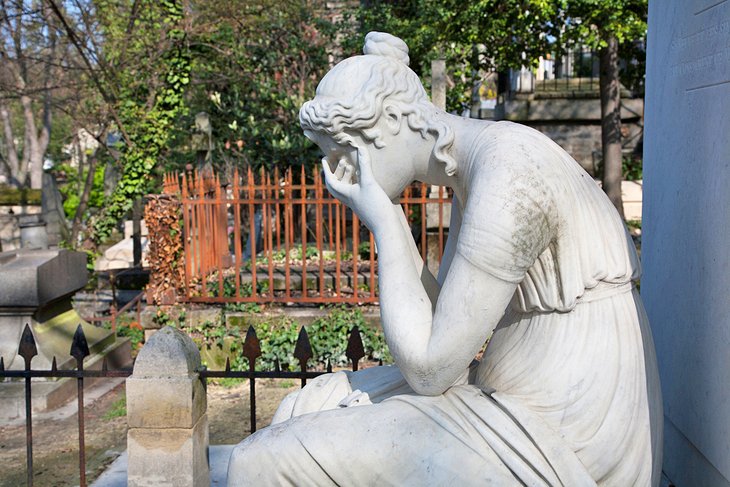
Outside of central Paris, the Père Lachaise Cemetery in the 20th arrondissement is the city's most famous and most visited cemetery. This 44-hectare space is the final resting place of many famous men and women, including Honoré de Balzac, Frédéric Chopin, Edith Piaf, Oscar Wilde, and Jim Morrison.
Some of the tombs and graves of the most admired personalities attract a cult following, with flowers and tributes left by visitors on a daily basis.
Address: Cimetière du Père Lachaise, 21 Boulevard de Ménilmontant, 75020 Paris (Métro: Père Lachaise or Philippe Auguste station)
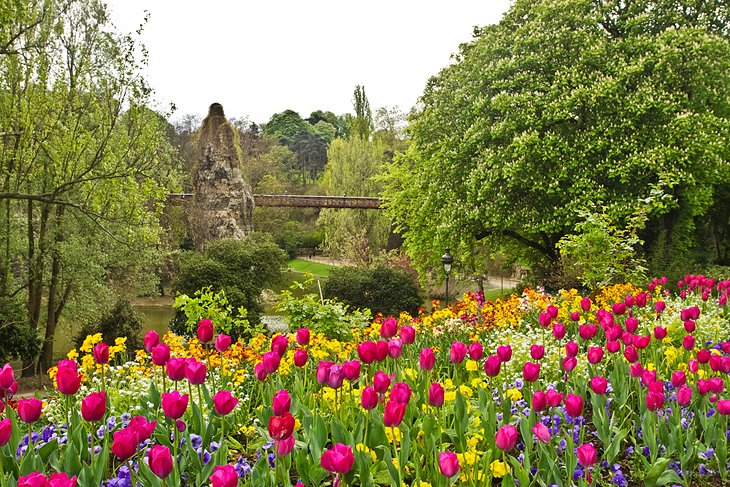
Locals escape to this peaceful oasis when they need a break from urban life. Among Parisians, this park is a favorite place to go for picnics and basking in the sunshine on warm days.
The 25-hectare park has the feeling of an untamed pastoral landscape, in contrast to the typical Parisian formal French gardens, with their orderly rows of flowerbeds and pollarded trees.
This romantic English-style garden features caves, waterfalls, and an artificial lake. Large shady trees and spacious grassy areas invite visitors to pull out a blanket and relax. Some areas of the park offer panoramic city views.
The convivial Rosa Bonheur café serves Mediterranean cuisine on an outdoor terrace. Rosa Bonheur is also known for its musical entertainment and evening dances.
For a gourmet lunch or brunch, Le Pavillon du Lac delights you with its lake views and garden patio. Le Pavillon du Lac is open for lunch and dinner Wednesday through Saturday and for brunch on Sundays.
Address: Parc des Buttes-Chaumont, 1 Rue Botzaris, 75019 Paris
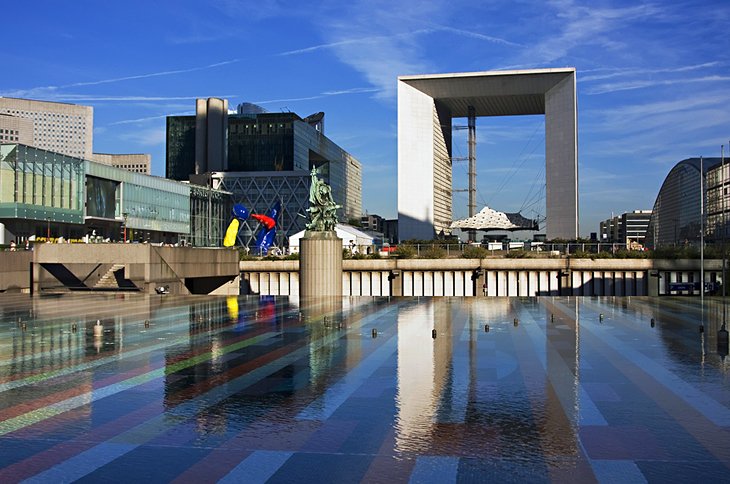
The Grande Arche de la Défense is found in a business district at the end of Avenue Charles-de-Gaulle. This area just outside the city limits of Paris is named La Défense, which recalls the bitter resistance by French forces in this area during the Franco-Prussian War of 1870-1871.
Designed by Johan Otto von Spreckelsen, the Grande Arche makes a striking impression. This huge 110-meter-high rectangular triumphal arch is faced with glass and granite.
The monument was inaugurated in 1989 on the bicentenary of the French Revolution, and the contemporary structure symbolizes France's national value of fraternity. The arch was originally called " La Grande Arche de la Fraternité ".
Address: La Grande Arche, 1 Parvis de la Défense, 92040 Paris (Métro: La Défense)
Deciding where to stay in Paris depends on your taste in hotels and travel preferences.
An abundance of quaint small hotels are scattered throughout the 5th, 6th, and 7th arrondissements, which is also known as the Rive Gauche (Left Bank). Tourists appreciate this area for its central location, excellent restaurants, and lively sidewalk cafés.
The Marais quarter (4th arrondissement) on the Right Bank rivals the Left Bank for old-world charm and trendy ambiance. This neighborhood is filled with magnificent historic palaces and mansions, while enticing boutiques, cozy restaurants, cafés, and tea salons line the quarter's cobblestone streets.
Many luxury hotels are found on the boulevards near the Louvre and the Champs-Élysées, in an area of the 8th arrondissement known as the Triangle d'Or (Golden Triangle) because of its designer fashion boutiques and upscale gourmet restaurants.
Montmartre is farther from most tourist attractions but has a special atmosphere thanks to its bohemian heritage, excellent art museums, and atmospheric pedestrian alleyways. Some of the hotels in this hilltop neighborhood offer sweeping city views.
Here are some highly-rated hotels in these areas of Paris:
Luxury Hotels:
- In the fashionable 8th arrondissement near the Jardins des Champs-Élysées is the five-star Le Bristol Paris . This legendary hotel epitomizes Parisian elegance with sumptuous guest rooms featuring Louis XV or Louis XVI furnishings and tailor-made bed linens. Guests enjoy the courtyard garden, spa, rooftop swimming pool, tea time at Café Antonia, and fine dining at the hotel's Michelin-starred gastronomic restaurant or Michelin-starred brasserie.
- La Réserve Paris - Hotel and Spa is another ultra-luxurious accommodation in the 8th arrondissement near the Champs-Élysées. The five-star hotel occupies a palatial 19th-century mansion decorated in a classical style, yet has the intimate ambiance of a private home. Guests appreciate the top-notch amenities: spa, fitness center, indoor swimming pool, and two gourmet restaurants including a dining room with two Michelin stars.
- Art Deco interiors create an inviting feel at the Four Seasons Hotel George V in the 8th arrondissement. This opulent five-star hotel occupies a landmark building that dates to 1928 and has been beautifully maintained. Guests are pampered by the hotel's amenities: an upscale spa, swimming pool, and three fine-dining options including a vegetarian restaurant. The hotel's gastronomic restaurant, Le Cinq, boasts three Michelin stars.
- The Hôtel Plaza Athénée graces the tree-lined Avenue Montaigne, a prestigious boulevard lined with haute couture boutiques. Housed in a stately Haussmann-style building near the Théâtre des Champs-Elysées, this five-star hotel features plush guest rooms with Art Deco furnishings. Amenities include the Dior Spa, and three dining options, including a garden courtyard restaurant and La Galerie, a salon that serves afternoon tea.
Mid-Range Hotels:
- In the Latin Quarter steps away from the Panthéon, the impeccably maintained Hôtel Résidence Henri IV exudes old-fashioned Parisian charm with its traditional interior decor and balconies overlooking the street. The spacious guest rooms have flat-screen televisions and updated bathrooms; the apartments have kitchenettes. This four-star hotel has a hammam and offers spa treatments. The breakfast (available for an additional charge) includes artisanal and organic products.
- The Relais Christine has a quiet and cozy ambiance, which makes it feel like a family home. This five-star hotel in the Saint-Germain-des-Prés neighborhood is surrounded by cafés, bistros, and restaurants. The tastefully adorned guest rooms feature garden, courtyard, or street views and Nespresso coffee machines. Amenities include an upscale spa, fitness center, breakfast for an additional charge, and room service.
- Near the legendary Boulevard Saint-Germain cafés and a short walk to the Jardin du Luxembourg, the boutique three-star Hôtel Left Bank Saint Germain des Prés occupies an 18th-century building on an ancient street where Molière had a residence. The hotel's suite has a living room with windows that look out onto Notre-Dame Cathedral. A continental breakfast with croissants, café au lait, and fresh-squeezed orange juice is available.
- The charming Relais Médicis is tucked away on a quiet street near the Luxembourg Gardens. This four-star hotel is a welcome retreat from the busy streets of the Saint-Germain neighborhood. The guest rooms blend old-fashioned French country decor with modern amenities. Breakfast (available for an additional charge) includes yogurt, cheese, fresh-squeezed orange juice, coffee, tea, and croissants from a neighborhood bakery.
- Montmartre is considered Paris' most enchanting neighborhood, although it is a Métro ride to the main tourist attractions. A few steps away from the Métro station in the heart of the quarter's narrow, winding streets is Hôtel Le Relais Montmartre . This four-star hotel has quaint guest rooms with vintage-inspired decor. The hotel offers a breakfast buffet (generous for the price) that includes croissants, yogurt, charcuterie, cheese, and fruit.
Budget Hotels:
- The Legend Hotel by Elegancia is conveniently located in the Montparnasse district of the 6th arrondissement (Rive Gauche) and about a 10-minute walk to the Luxembourg Gardens. This cozy three-star boutique hotel has chic contemporary-style rooms. The hotel offers a 24-hour front desk, buffet or continental breakfast (for an additional charge), and concierge services.
- In the Latin Quarter (Rive Gauche) near the Panthéon, the family-run Hôtel Diana has stylish modern rooms with renovated bathrooms and courtyard or city views. Considering the central location and 24-hour front reception desk, this hotel provides excellent value for the price. A continental-style breakfast buffet is available for a small charge.
Paris Sightseeing Overview:
- For first-time visitors, the Paris Big Bus Hop-on Hop-off Bus Tour is a good choice. You can decide which monuments you would like to see, such as the Louvre Museum, Notre-Dame Cathedral, the Place de la Concorde, the Champs-Élysées, and the Musée d'Orsay. The tour provides commentary while you're on the bus and includes an entrance ticket to the Arc de Triomphe as well as a short Seine River Cruise.
Hop-on Hop-off Seine River Tour:
- The Hop-on Hop-off Seine River Tour covers the city's highlights by cruising down the Seine River. This self-guided tour allows you to stop at eight different places on the Seine River over a one-day or two-day period. You will have a chance to see the Eiffel Tower, the Louvre Museum, the Musee d'Orsay, the legendary Saint-Germain-des-Prés cafés, the Notre-Dame Cathedral, the Place de la Concorde, and the Hôtel National des Invalides.
Visit the Normandy Battlefields:
- History buffs will want to see the famous World War II battlefields, about a three-hour drive from Paris. One recommended day trip is the Normandy D-Day Beaches Tour . Accompanied by a knowledgeable guide, tourists will see the Omaha and Juno Beaches, and the American Cemetery. The tour also includes a visit to the Arromanches harbor.
Must-See Sights Outside of Paris :
- Another popular outing from Paris is the Versailles and Giverny Day Trip . This full-day excursion explores the vibrant gardens of Giverny, which Monet depicted in many paintings, and the Château de Versailles, Louis XIV's extravagant palace. The tour includes a gourmet lunch at the Moulin de Fourges riverside restaurant, which is housed in an 18th-century mill inspired by Marie-Antoinette's hamlet at Versailles.
Many seasoned travelers say the best months to visit Paris are in the spring (April, May, June), the summer (especially June and the first half of July), and early autumn (September and October) . As a general rule, this is also the best time to visit France.
April is in the off-season , and hotel prices are reduced. The drawback is that the weather is capricious and can be quite chilly or rainy . Average low temperatures are mid-40 degrees Fahrenheit. With some luck, the weather could be refreshingly crisp and sunny. Average highs are low-60 degrees. On the upside, April offers the chance to experience the magic of early spring. Trees begin to bud their first leaves in the parks and lining the avenues. Daffodils and tulips bloom in the gardens.
In May , the weather is still fickle , with a mix of sunny days and chilly or rainy days. The temperature averages range from high 60 degrees to low 50 degrees Fahrenheit. By early May, trees, burgeoning vegetation, and colorful flowers enliven the leafy grounds of the Jardin du Luxembourg, Jardin des Champs-Élysées, Jardin des Plantes, Parc Monceau, Bois de Boulogne, and the Buttes-Chaumont. On warm days, café terraces come back to life.
June is a delightful time to visit Paris because of the balmy weather and long days . Daytime temperatures are comfortable, with high temperature averages in the low 70 degrees. Thanks to Paris' northern latitude, the sun sets at almost 10pm in June. It seems that the entire city is out and about to celebrate the beginning of summer. The sidewalk café scene bustles and there is a sense of joie de vivre in the air.
The first two weeks of July are the most exciting time to visit Paris, with Parisians' anticipation of vacation just around the corner. Plus, the weather starts to feel like summer. The entire month of July is a great time to visit because of warm days with average high temperatures of 70 degrees Fahrenheit.
July and August are the hottest months of the year in Paris. August also has average high temperatures of 70 degrees Fahrenheit. However, travelers should keep in mind that many shops and restaurants close in August when Parisians leave for summer holidays after the Fête Nationale (Bastille Day) on July 14th.
September is a marvelous time to visit Paris because the weather is still pleasant , yet it is in the off-season , so hotels are more affordable, and tourist attractions are less crowded. Similar to the springtime, September promises a mix of weather, with some sunny days and some rain. The average high temperatures are low-70 degrees Fahrenheit and average low temperatures are mid-50 degrees Fahrenheit.
Another good time to visit is October which is in the off-season . October weather can be chilly. The daytime high-temperature averages start to dip into the 60s Fahrenheit and the average low temperature is 48 degrees.
Tips for What to Wear : For a Paris vacation in April, May, September, or October, travelers should pack layers and bring sweaters, a jacket, raincoat, boots, and an umbrella. In June and July, the weather is warm enough for summer dresses and short-sleeve shirts. Packing requirements during the late fall and winter months (November through March) include heavy coats, scarves, wool hats, gloves, warm socks, and boots.
More Related Articles on PlanetWare.com
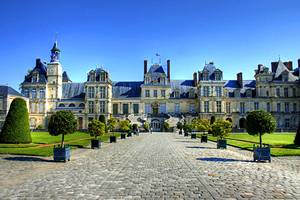
Easy Paris Day Trips: There are many wonderful places to visit within easy reach from Paris . Just outside the Paris metropolitan area is a tranquil rural landscape that is rich in cultural treasures: lovely little villages, historic castles, splendid churches, and interesting medieval towns. A must-see destination is the Château de Versailles , the 17th-century palace of Louis XIV (the "Sun King").
For those who prefer cities to the countryside, several worthwhile destinations are just a one- to two-hour train ride away: the elegant and cultured city of Lille (one hour by TGV train) with its distinct Flemish character, the delightful town of Amiens (about one hour and 30 minutes by train), and Lyon (two hours by TGV train) known as the gastronomic heart of France.
Adored by tourists for its perfectly preserved medieval ambiance, picturesque canals, and enticing chocolate shops, atmospheric Bruges (two hours 30 minutes by train) is simple to visit even though the train crosses the border into Belgium.
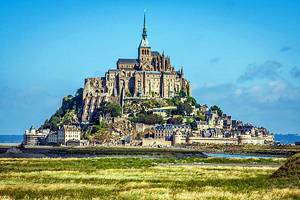
Historic Sites in Normandy: The scenic Normandy region wows visitors with its natural beauty and fascinating history. Along its dramatic coastline are the Landing Beaches of World War Two, and nearby are military cemeteries and memorial museums. One of the top attractions of France and Normandy's most visited site is Mont Saint-Michel , a UNESCO-listed medieval pilgrimage site with a sublime 12th-century abbey church. Tourists will also enjoy discovering the historic town of Rouen , with its marvelous cathedral, handsome half-timbered houses, and abundance of Gothic churches.
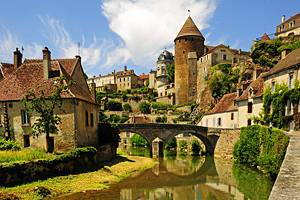
Gorgeous Castles and Pastoral Landscapes: The fairy-tale Loire Valley landscape is home to the most magnificent Renaissance châteaux in France. With a lush natural environment of woodlands and rivers, this enchanting region is designated a UNESCO World Heritage Site. The naturally beautiful region of Brittany boasts a wild, rugged coastline, with many idyllic fishing villages and an unspoiled countryside with medieval castles. The Burgundy region is dotted with historic towns such as Dijon , quaint villages, ancient abbeys, and Romanesque churches.
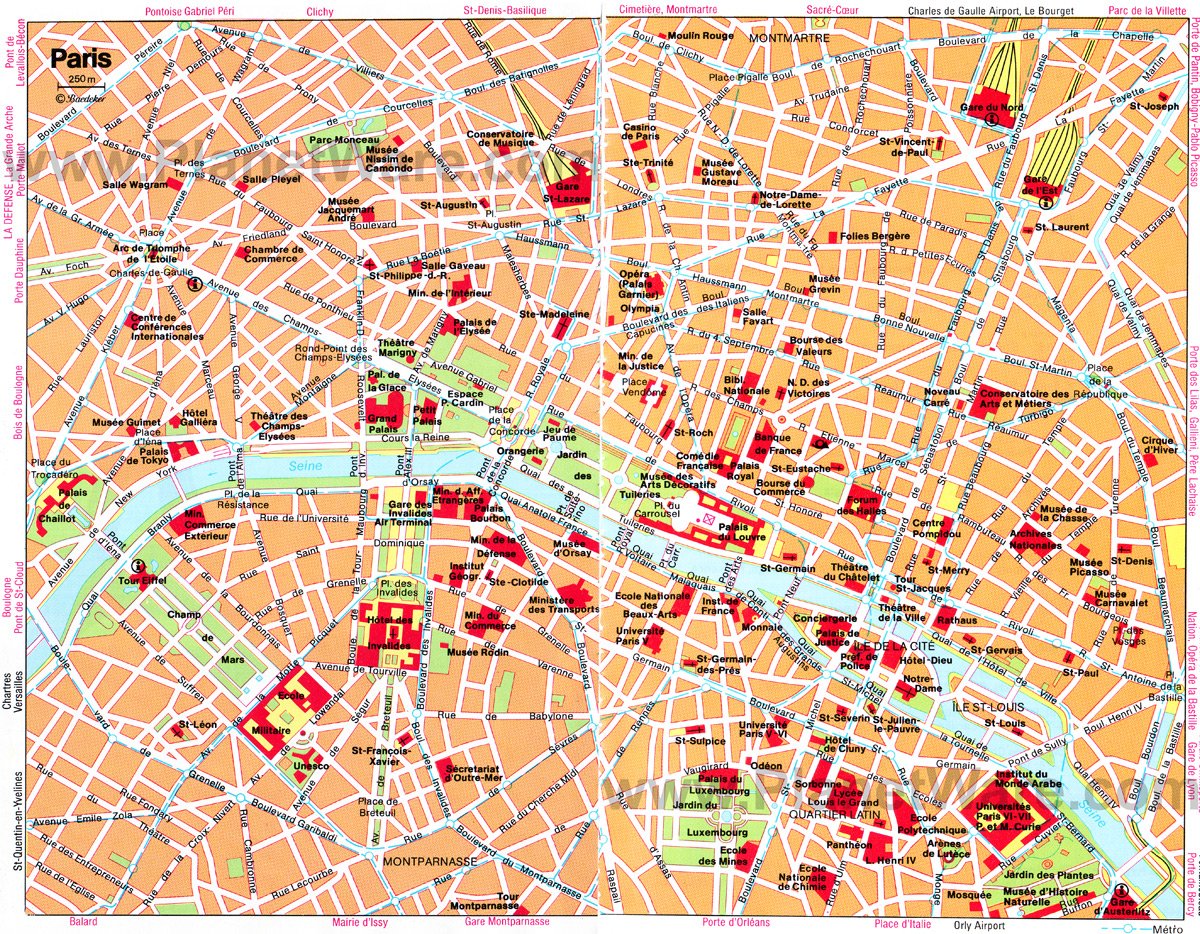
More on France

- Search Please fill out this field.
- Newsletters
- More to Explore
- Things To Do
The Top 15 UNESCO World Heritage Sites in France
:max_bytes(150000):strip_icc():format(webp)/profilepic-CTraub-5b6ff65d46e0fb00505577c1.jpg)
Moment/Getty Images
When it comes to historical and cultural heritage, France is a global heavyweight. The country counts a total of 45 UNESCO World Heritage Sites , stretching from Normandy to Paris, the Loire Valley to the Dordogne, and beyond. These are 15 of the top UNESCO sites to visit on your next trip to France . What these remarkable sites all have in common is a tendency to make your jaw drop—and your horizons to suddenly expand.
Banks of the Seine, Paris
Danita Delimont / Getty Images
The banks of the Seine river that run through Paris were only recognized by UNESCO as a heritage site in 1991—but the area has been a center and living source of Parisian civilization for millennia. The central island between the right and left banks, known as the Ile de la Cité , was settled by a tribe of Celtic fishermen known as the Parisii in the 3rd century B.C., and during the first century Gallo-Romans renamed it "Lutetia."
During the Middle Ages, sites including Notre-Dame Cathedral, the Louvre Palace, and the Sainte-Chapelle were built around the banks of the Seine, making it one of the most important areas for historic discovery in the area. Take a long walk along the riverbanks, and if time allows embark on a commented sightseeing cruise of the Seine to learn more about its rich heritage.
Mont Saint-Michel Abbey and Bay
glcheng / Getty Images
Mont Saint-Michel
Few global sites meld natural and human-made wonder more dramatically than the Mont Saint-Michel Abbey and Bay , situated at the border between Normandy and Brittany in northern France. The Gothic and Romanesque Abbey—built between the late 10th and 16th centuries, was dedicated to the Archangel St. Michel; it once housed an order of Benedictine monks.
It impossibly towers atop a rocky islet, overlooking the dramatic Bay and its powerful tidal systems. These make the Abbey and its surrounding, watery landscapes appear dramatically different depending on the time of day and quality of the light, and the Bay is home to a remarkable number of wild birds and aquatic species.
We recommend experiencing the haunting magic of Saint-Michel as part of a weeklong trip to France .
Chartres Cathedral
Arnaud Chicurel / Getty Images
Our Lady of Chartres Cathedral
Notre-Dame in Paris may enjoy greater fame, but Chartres Cathedral is at least as great a masterpiece of high Gothic architecture. Situated only an hour from Paris by train, Chartres makes an easy and essential day trip from the capital.
Built between the late 12th century and early 13th centuries, it's lauded for its harmonious design and remarkably well-preserved original features. Come to admire its elegant flying buttresses, elaborate stained glass and jaw-dropping rose window. Meanwhile, the Chapel of Saint Piat is striking for its rounded turrets, which resemble those featuring in medieval castles.
Historic Center of Avignon, Including the Papal Palace
Henryk Sadura / Royalty-Free / Getty Images
The picturesque city of Avignon in Provence is best known today for its dramatic battlements, well-preserved medieval city center, and vibrant summer theater festival. But what arguably makes the city so fascinating is that it, like the Vatican in Rome today, once served as the seat of the Pope, and enjoyed a great deal of independence from the rest of France as a result.
Explore the city center to take in the 13th and 14th-century Papal Palace , one of the best-preserved and most heavily fortified medieval century buildings in Europe, the "Episcopal Ensemble," and the 12th-century Avignon Bridge, which stretches gracefully over the Rhône River.
Champagne Hillsides, Houses, and Cellars
Sylvain Sonnet / Corbis Documentary / Getty Images
Almost everyone knows that the Champagne region makes some of the world's most famous (and expensive) sparkling wines. But did you know that it's also prized for its extensive network of underground chalk galleries, or crayères?
Dating to the early medieval period, these galleries were initially used as limestone quarries, but in the 18th century, they were repurposed to serve as cellars for the burgeoning champagne-making industry. The cool, humid underground passages are ideal for storing and aging sparkling wine. The UNESCO site in Champagne comprises underground networks of cellars and passageways in Reims and Epernay, as well as historic vineyards in Hautvillers, Aÿ and Mareuil-sur-Aÿ.
Notre-Dame Cathedral, Paris
Joe Daniel Price / Moment / Getty Images
Cathédrale Notre-Dame de Paris
Probably the world's most iconic gothic cathedral, Notre-Dame remains one of the crown jewels of the Parisian skyline. Construction on the cathedral began in around 1163; it took the toil of hundreds of laborers over two centuries to complete it.
Situated on the Ile de la Cité, the cathedral boasts two dramatic towers, an elegant spire (that was sadly all but destroyed in a 2019 fire), delicate stained glass, and a prominent rose window. The facade features three portals whose numerous statues tell elaborate biblical stories. Current restoration efforts include plans to restore the spire. The cathedral will hopefully grace the city's landscape for centuries to come.
The "Climats" and Terroirs of Burgundy
Matteo Columbo / Getty Images
The French region of Burgundy is renowned for its high-quality wines. The high price tag of Burgundy wines is partly owing to the fact that they're often produced in very small yields compared to other wines, on tiny plots of land whose soil is said to have very specific characteristics. Some of the more prized vineyards of Burgundy, located in the Côte de Nuits and the Côte de Beaune winemaking areas south of Dijon, were named a UNESCO Heritage Site for their outstanding history and influence on the cultivation of vines. The tiny vineyards, which have grown on steep-sloped since the Middle Ages, are called climats prized for their unique geologic conditions and exposure.
The Burgundian towns of Beaune and Dijon, as well as surrounding villages, are also part of the UNESCO site, representing the historic centers of wine commercialization in the region.
Palace and Park of Versailles
Veronica Garbutt / Lonely Planet Images / Getty Images
Palace of Versailles
Situated just an hour outside Paris by train or car, the Palace and Gardens at Versailles are an enduring symbol of French royal power and prestige. Named a UNESCO heritage site in 1979, Versailles was commissioned by King Louis XIV in the late 17th century, displacing the seat of monarchy from central Paris at the Louvre to the nearby countryside.
Comprising 2,300 rooms, the main chateau is a historic marvel for its lavish (and recently renovated) Hall of Mirrors, Royal Operahouse, King's apartments and Royal Bedchamber, and the bedrooms of Queen Marie Antoinette, one of the palace's last royal residents. Meanwhile, the site's extensive and painstakingly planned gardens, designed by Le Notre, are a masterpiece in their own right, brimming with elaborate parterres, fountains, sculptures, and geometric shrubbery. We recommend visiting in late spring or summer, when the gardens are in full bloom.
Historic Site of Lyon
Julian Elliott / robertharding / Getty Images
Lyon isn't always on tourists' radar, but it should be. The former Gallo-Roman capital boasts over a thousand years of history, and UNESCO recognized the oldest part of the city, "Vieux Lyon," as a World Heritage Site, for its wealth of culturally important sites. You can neatly trace the city's history in just a few hours exploring the area around the Saone river.
Start at the well-preserved Roman amphitheaters that still crown Fourvière Hill, descending through the Renaissance-era "traboules," or courtyard passageways that cut through rose-hued, Italian-style buildings, to the medieval streets of Vieux-Lyon and the Saint-Jean Cathedral.
Prehistoric Sites & Decorated Caves of the Vézères Valley
thipjang / Getty Images
For anyone interested in prehistoric art and civilization, we recommend a trip to the mesmerizing Vézères Valley in southwestern France . Home to 147 prehistoric sites dating to the Paleolithic period, the lush valley near the Dordogne river also boasts 25 decorated caves. The Lascaux Cave is the most famous of these, discovered in 1940.
While it's currently only possible to visit an elaborate replica (to preserve the delicate originals), witnessing the some 100 paleolithic hunting scenes and animal figures is breathtaking. Meanwhile, other nearby caves, such as the Font de Gaume, allow you to take in original art drawn by prehistoric human hands. Also, consider a trip to Les Eyzies for its remarkable caves and National Prehistory Museum.
Strasbourg, Grand Ile, and Neustadt
Westend61 / Getty Images
The northeastern city of Strasbourg won accolades from UNESCO for its unique urban landscape: one blending outstanding Gothic, Renaissance, and French 18th-century architecture, cut through by the Rhine river and waterways.
In the city center, the imposing Cathedral is considered a masterpiece from the high Gothic period, and it also counts important Romanesque elements. In the surrounding streets, French and Germanic structures spanning several centuries form a rich interplay of cultural influences. The Grande-Ile area incorporates 15th to late 17th-century private residences into the landscape, while the Palais de Rohan is a remarkable example of 18th-century classicism. Finally, the Neustadt area blends 19th-century Haussmannian architectural influences with Germanic ones. The result? A landscape unique to Strasbourg.
Fortified Medieval City of Carcassonne
Buena Vista Images / Getty Images
Cité de Carcassonne
One of the world's best-preserved medieval cities, Carcassonne is situated in the Languedoc-Roussillon region in southwestern France. With foundations dating to the late Roman period, the imposing walled city was a military defense site well before the Middle Ages. During the 11th century, a cathedral was built within the city, and a family of noblemen, the Trencevals, constructed a chateau within the walls. A series of revolts and Crusades in the 13th century led to the formerly independent city submitting to the rule of the French crown.
During the 19th century, Eugene Viollet-le-Duc led ambitious efforts to restore the medieval cité, which had fallen into ruin. His painstaking restoration was recognized by UNESCO as an important element of Carcassonne's outstanding cultural heritage.
Pont du Gard (Roman Aqueduct)
Pawel Gaul / iStock / Getty Images
Pont du Gard
This impressive aqueduct bridge in Southern France is one of the best-preserved architectural structures from the Gallo-Roman period, and dates to the 1st century A.D. Crossing the river Gardon in close reach of the town of Vers-Pont-du-Gard, it's part of the extensive Nimes aqueduct that stretches for some 31 miles. It is the tallest aqueduct bridge from the period, standing 164 feet high, and was designed to transport water to the nearby Roman colony of Nemausus, more than 31 miles away. Visit the nearby Pont du Gard museum to learn more about the site and Gallo-Roman France.
Old Bordeaux and the "Port of the Moon"
Getty Images
Port of the Moon Bordeaux
The historic center of Bordeaux , in southwest France, is the largest urban environment to be deemed a UNESCO World Heritage Site . Some 2,718 acres—or around 40 percent of the total surface area of Bordeaux—were recognized as part of the site in 2005, stretching from the Port de la Lune (Port of the Moon) on the banks of the Garonne River, to the Place de la Bourse (Old Stock Exchange) and the splendid Miroir d'Eau (water mirror). In addition to boasting some remarkably well-preserved medieval and 18th-century architecture, Bordeaux has been a center of trade and cultural exchange for over 2,000 years, with the commercial wine trade putting the city on the global map since the 12th century.
The Loire Valley Between Sully-sur-Loire and Chalonnes
alxpin / Getty Images
The Loire Valley , situated on the banks of the Loire and Cher rivers in central France, is mesmerizing for its natural beauty, astoundingly well-preserved castles (most dating to the Renaissance period), and cultural traditions, including winemaking. It counts some 300 castles, including the world-famous Chambord, Chenonceau, and Amboise, whose storybook-reminiscent architecture and lush gardens attest to strong French, Italian/Mediterranean, and Flemish cultural encounters during the 15th and 16th centuries.
In towns such as Saumur, Chinon, and Blois, impressive architecture and vast, ornate gardens abound, alongside picturesque vineyards and wineries, lush river ecosystems that host an abundance of wildlife, and a unique local culture that's always worth exploring.
Related Articles
More related articles.
Paris Travel Guide
Courtesy of James Farley | Getty Images

32 Best Things to Do in Paris, France
If it's your first visit to Paris, you'll probably want to spend some time at the world-renowned Eiffel Tower , the Louvre (home of the "Mona Lisa") and the Notre-Dame. Don't miss out on other notable city jewels either, such as the Musée
- All Things To Do
- 1-Day Itinerary
- 2-Day Itinerary
- 3-Day Itinerary

Eiffel Tower (Tour Eiffel) Eiffel Tower (Tour Eiffel)
U.S. News Insider Tip: For the best photo opportunities of the Eiffel Tower, head to Place du Trocadéro. (Just expect to contend with some crowds!) – Nicola Wood, Senior Editor
Designed and constructed for the 1889 Exposition Universelle (the World's Fair), the Eiffel Tower was always meant to be a temporary structure, but it has skirted demolition twice. The first time, in 1909, the tower was kept around because of its potential as a transmission tower (an antenna was installed atop the tower). Gustav Eiffel, chief architect of the Eiffel Tower, had a variety of scientific experiments tested on the tower with the hope that any discoveries would help prolong its lifespan. One of these included a wireless transmissions test, which the tower passed with flying colors. During World War I, the Eiffel Tower's transmission capabilities enabled it to intercept communications from enemies as well as relay intel to troops on the ground. The second time the Eiffel Tower was almost destroyed was during the German occupation of France during World War II. Hitler planned to get rid of the tower, but never ended up going through with his plan.

Musée du Louvre Musée du Louvre
U.S. News Insider Tip: The Louvre is free for all visitors on the first Friday of the month after 6 p.m. (except in July and August), and all day on Bastille Day (July 14). – Laura French
If you only had time to visit one museum in Paris, it should undoubtedly be the Musée du Louvre. That's because the Louvre is not only widely considered to be one of the best art museums in Europe, but one of the best in the world. The museum first opened its doors in 1793 and features more than 35,000 works of art on display. Here, you can get up close to a variety of art from different time periods and cultures.

Notre-Dame Cathedral (Cathedrale de Notre Dame de Paris) Notre-Dame Cathedral (Cathedrale de Notre Dame de Paris) free
Note that the cathedral sustained significant damage as a result of a fire on April 15, 2019. Its wooden roof and spire collapsed during the fire. The interior of the cathedral remains closed to the public until further notice. It is set to reopen in December 2024. In the meantime, visitors can peruse a new exhibit that debuted in March 2023. It's located in an underground facility in front of the cathedral, the free exhibit highlights the ongoing construction work at the site, including the expertise of the workers, as well as some remains from the fire and works of art from the cathedral. There are also free, volunteer-led informational tours around the outside of the cathedral select days of the week. Consult this online calendar to see when English tours are offered.
Like the Eiffel Tower , the Notre-Dame Cathedral is seen as a Parisian icon. Located along the picturesque River Seine , the Notre-Dame Cathedral is considered a Gothic masterpiece and is often regarded as one of the best Gothic cathedrals of its kind in the world. Construction of the famous cathedral started in the late 12th century and final touches weren't made until nearly 200 years later. Once you get an eyeful of the cathedral yourself, you'll start to understand why it took so long.

Popular Tours

Eiffel Tower Second Floor Tour and Summit Option by Elevator
(3965 reviews)
from $ 62.21

Bateaux Parisiens Seine River Gourmet Dinner & Sightseeing Cruise
(5477 reviews)
from $ 141.29

Louvre Museum Masterpieces Guided Tour with Reserved Access
(8998 reviews)
from $ 73.65

Champs-Élysées Champs-Élysées free
Musician Joe Dassin once sang "Il y a tout ce que vous voulez aux Champs-Élysées," which translates to "There's everything you could want along the Champs-Élysées." And he's right. Paris' most famous boulevard – stretching more than a mile from the glittering obelisk at Place de la Concorde to the foot of the Arc de Triomphe – is a shopper's mecca. Along its wide, tree-lined sidewalks, you'll find such luxury stores as Louis Vuitton and Chanel rubbing elbows with less-pricey establishments like Adidas and Zara.
While the Champs-Élysées is no doubt a shopping paradise, recent travelers noticed the price tags at most stores can be pretty high. And the more affordable options are constantly swamped with people. The Champs-Élysées itself is no different. Because this is such a famous street in Paris, expect there to be crowds galore, both during the day and the nighttime. Still, many travelers enjoyed taking in the Champs-Élysées' bustling atmosphere and observing both locals and tourists come and go. Some recent visitors said a trip to the Champs-Élysées is not complete without a stop at Ladurée, the city's famous macaron shop.

Arc de Triomphe Arc de Triomphe
Situated at the western end of the Champs-Élysées , the towering Arc de Triomphe was commissioned by Napoléon to honor the Grande Armee during the Napoleonic Wars. The arch, which is the largest of its kind in the world, is adorned with several impressive, intricately carved sculptures. Underneath the arch, travelers will find the names of the battles fought during the first French Republic and Napolean's Empire, as well as generals who fought in them. Travelers will also find the famous tomb of The Unknown Soldier. The unknown soldier currently buried there is meant to represent all the unidentified or unaccounted for soldiers who lost their lives during World War I. The flame that was lit when the soldier was laid to rest has not extinguished since it was initially lit in the 1920s, and is rekindled every night at 6:30 p.m. by a member of the armed services.
Aside from admiring the arch, visitors can climb to the top and take in the Parisian panorama. Most visitors are wowed by the immense size of the structure and recommend ascending to the top for the spectacular Paris views. Visitors caution that you'll have to wait in line to get to the top and the climb, which is made up of hundreds of stairs, can be a serious workout.

Latin Quarter Latin Quarter free
U.S. News Insider Tip: If you're in the area, check out the Grand Mosquée de Paris, next to the Jardin des Plantes. It's a beautiful mosque with a hidden-away courtyard, and there's an atmospheric tearoom attached that serves Middle Eastern sweet treats. – Laura French
Architecture lovers should not miss the Latin Quarter. Also known as the 5th arrondissement, the Latin Quarter is one of the oldest neighborhoods in Paris. Its narrow cobblestone streets, winding whimsically through the larger city grid, recall its medieval history. Why does this densely packed neighborhood of attractions, shops and restaurants retain this unique character? It escaped Baron Haussmann's planning reform of the city, thus retaining a more ancient ambience.

Best Paris Tours

Paris Tours
18 Best Paris Tours of 2024: Food, Versailles & More
Jan. 19, 2024

Seine River Seine River free
You won’t have much trouble finding the Seine, as it flows directly through the heart of Paris. The river is perhaps one of the most famous waterways in the world and an attraction in itself. It's also useful for more practical reasons: It flows from east to west, dividing the city into the Left Bank and the Right Bank. Knowing where you are in relation to the Seine can help you find your way around during your trip.
For tourists, the waterway mostly serves as a photo backdrop, but it is a lifeline for locals. It's a reliable water supply, a major transportation route and vital for many kinds of commerce. It has also served as a source of sustenance for many fishermen dating back to the third century. In 1991, the Seine River was named a UNESCO World Heritage Site due to its cultural significance in both the past and the present.

Musée d'Orsay Musée d'Orsay
U.S. News Insider Tip: Visit on the first Sunday of the month for free entry (when it’s also free to enter the Centre Pompidou, Musée de l'Orangerie, Musée du Rodin, Musée Picasso and several other attractions). – Laura French
Housed in a former railway station along the Left Bank, the Musée d'Orsay is regarded for its rich collection of impressionist works. You'll see paintings by French artists like Degas, Monet, Cezanne and Van Gogh, among many, many others. The museum also houses a number of sculptures, as well as photography and even furniture displays. And if you climb to the museum's top balcony, you can catch a breathtaking view of the Sacré-Coeur Basilica through the museum's massive transparent clock.

Louvre Museum - Exclusive Guided Tour (Reserved Entry Included)
(3592 reviews)
from $ 150.13

Paris Seine River Dinner Cruise with Live Music by Bateaux Mouches
(3214 reviews)
from $ 135.97

Versailles Palace and Gardens Skip-the-Line Tour from Paris
(1381 reviews)
from $ 91.78

Luxembourg Gardens (Jardin du Luxembourg) Luxembourg Gardens (Jardin du Luxembourg) free
U.S. News Insider Tip: Pick up picnic provisions at a nearby farmer's market, such as Marché Raspail, to enjoy in the gardens. – Ann Henson, Assistant Managing Editor
A warm-weather oasis that offers the simplest of pleasures, the Luxembourg Gardens provide ample green space (60 acres) for sun-soaking and people-watching, plus there are plenty of activities to keep kids entertained. When the city bustle becomes too overwhelming, meander around the paths and formal gardens, or just relax with a picnic. Kids can float sailboats at the Grand Basin, ride ponies, take a spin on the merry-go-round, or catch a puppet show at the on-site Theatre des Marionnettes. Adults might delight in the on-site Musée du Luxembourg, the first French museum that was opened to the public. Though with 106 sculptures to its name, including a replica of the Statue of Liberty, the Luxembourg Gardens could easily be considered an open-air museum itself.

Sacred Heart Basilica of Montmartre (Sacre-Coeur) Sacred Heart Basilica of Montmartre (Sacre-Coeur) free
Rising high above Paris, the Sacré-Coeur (meaning "Sacred Heart") looks more like a white castle than a basilica. Towering over the eclectic neighborhood of Montmartre (once a hangout for Paris' bohemian crowd), this Roman-Byzantine, 19th-century masterpiece is easily recognized by its ornate ivory domes. As blanched as it may appear on the outside, the basilica's interior is a sight worth beholding: The ceilings glitter with France's largest mosaic, which depicts Jesus rising alongside the Virgin Mary and Joan of Arc.
You'll also likely be left in awe with the panoramic views found from atop the Sacré-Coeur's outdoor staircase. But for an even better photo-op, climb all 300 steps to the top of the dome. The dome is accessible to visitors every day from 10:30 a.m. to 8:30 p.m. Mass is held multiple times a day every day.

Centre Pompidou Centre Pompidou
The Centre Pompidou is one of the most visited cultural sites in Paris. But keep this in mind – and recent travelers attest to this – if you're not a fan of modern art, you probably won't enjoy this museum. The Pompidou is all modern and contemporary art (think cubist, surrealist and pop art, among others). Even its exterior is a little "out there," with its insides (piping, plumbing, elevators, escalators, etc.) exposed on the outside.
Inside the inside-out museum, you'll find one of the largest collections of modern and contemporary art in the world (more than 120,000 pieces of art are in its complete collection). The most notable attraction within is France's National Museum of Modern Art, which features works from 20th and 21st-century artists. Here, you can find big names such as Matisse, Picasso and even Andy Warhol. Also within the Centre Pompidou is additional exhibition and entertainment spaces as well as a library, rooftop restaurant and cinemas.

Jardin des Tuileries Jardin des Tuileries free
U.S. News Insider Tip: While you’re here, don’t miss Angelina, just across the street on Rue de Rivoli. This historic, belle epoque-style salon de thé opened in 1903 and serves excellent French delicacies and pastries alongside its famous, indulgently rich hot chocolate. – Laura French
Centrally located between the Louvre and the Place de la Concorde, the Jardin des Tuileries is a free public garden that spans approximately 55 acres. Though it was initially designed solely for the use of the royal family and court, the park was added to the UNESCO World Heritage list in 1991 (as part of the Banks of the Seine) and has been open to the public since the 17th century.

Sainte-Chapelle Sainte-Chapelle
Nowhere in Paris does stained-glass windows quite as well as Sainte-Chapelle. The panes – dating back to the chapel's construction in the 13th century – depict 1,113 scenes from the Old and New Testaments of the Bible in vivid color. Sainte-Chapelle, which took just seven years to build, is a treasured example of French Gothic architecture and originally held Christian artifacts acquired by Louis IX. The building underwent a rigorous restoration between 2008 and 2014 and now welcomes visitors every day of the year except Christmas Day, New Year's Day and May 1 (France's Labor Day).
Admission costs 13 euros (about $14) per person ages 18 and older. Audio guides are available in English (among other languages) for an additional 3 euros (about $3.50).

Eiffel Tower Tour with Top Floor access
(367 reviews)
from $ 47.58

Big Bus Paris Hop-On Hop-Off Tour with Optional River Cruise
(5490 reviews)
from $ 48.72

Eiffel Tower Guided Access to 2nd Floor with Summit Option
(4355 reviews)
from $ 39.66

Pantheon Pantheon
Situated in the Latin Quarter – or the 5th arrondissement – of Paris, the Panthéon is a large church and burial ground with a storied history. The structure was completed in 1790 at the start of the French Revolution, and it served as a mausoleum, a church and an art gallery throughout its early years. In 1851, scientist Leon Foucault installed the Foucault pendulum within the building to demonstrate the rotation of the Earth. The pendulum was removed and replaced a number of times, and a replica was installed in 1995 and is still in operation today. The Panthéon also contains a crypt where a number of important historians, philosophers, scientists and writers are buried, including Voltaire, Jean-Jacques Rousseau and Marie Curie.
Most recent travelers loved seeing the museum's noteworthy gravesites and Foucault's pendulum. They also recommended taking a dome tour for exceptional views of Paris; you’ll see the Eiffel Tower from the top, as well as many other well-known landmarks. Still, some visitors said the admission fee is too high.

Palais Garnier - Opera National de Paris Palais Garnier - Opera National de Paris
A masterpiece of architectural opulence, the Opéra Garnier – also known as the Palais Garnier – still exudes the opulence it radiated in the late 1800s. This palpable sense of intrigue and mystery that permeates the opera is due in part to its awe-inspiring Old-World interiors as well as Gaston Leroux, the author of "Phantom of the Opera," for which the Garnier served as his inspiration. Leroux claimed the phantom was indeed real, successfully incorporating real life opera occurrences (such as the chandelier falling and killing a bystander) into his fiction. The Garnier's lack of a robust historical record, as well as Leroux's writing talents, have left many wondering if there really was a dweller that lurked beneath the opera. Staff have claimed otherwise, but say with the opera's very real underground "lake" (water tank), it's easy to see how the story could be so convincing. Without Napoleon III, who was responsible for commissioning the opera, Leroux's tale may never have never come to fruition.
The best way to fully experience the Palais Garnier is by purchasing a ballet or opera ticket. Remember to book your tickets several months in advance, as performances are highly coveted. If you won't be in town for a performance or aren't up for forking over the oftentimes high price of a performance, you can explore the building's magnificent interiors on your own.

Le Marais Le Marais free
U.S. News Insider Tip: On Place des Vosges, Paris’s oldest square, you’ll find the former house of Victor Hugo, which is now a museum that’s free to enter. – Laura French
Straddling the 3rd and 4th arrondissements (districts), Le Marais is one of Paris' oldest and coolest districts – so cool, in fact, that French writer Victor Hugo (author of "The Hunchback of Notre Dame" and "Les Misérables") called it home. With all of its cobblestone streets, stately stone architecture and tucked away courtyards, it's easy to feel as if you're strolling through medieval Paris. Back in the day, Le Marais housed some notable French royalty. King Henry IV was the one responsible for the construction of the Place des Vosges, Paris' oldest square. And Louis XIV called this neighborhood home for a while until he decided to move his family and court to Versailles . Much of Le Marais also survived the destruction of the French Revolution.

Versailles Palace (Chateau de Versailles) Versailles Palace (Chateau de Versailles)
U.S. News Insider Tip: In summer, the palace hosts weekend fountain shows in the gardens, featuring music and special effects; come on a Saturday night to see the best, with grounds lit up to magical effect and a firework display at the end. – Laura French
The Château de Versailles, the sprawling palace and former seat of power, is located 10 miles southwest of Paris in Versailles. Every year, nearly 10 million travelers make the trek from Paris to bear witness to the chateau's world-famous grandeur in person. But between all of the gold figurines, dramatic frescoes and cascading crystal chandeliers you'll no doubt find in bulk throughout the chateau, you might be surprised to learn that King Louis XIV's extravagant former residence had pretty humble-ish beginnings.

Musée Rodin Musée Rodin
A hidden jewel in the city, the Musée Rodin is actually the former residence of famed 19th-century sculptor Auguste Rodin. But in the place of furniture and kitschy lawn ornaments are Rodin's emotive sculptures, including The Walking Man, The Kiss and The Thinker, among many more. In addition to the sculptures, the museum houses 8,000 of the artist's drawings in its collection – a fraction of those are on display – as well as an area dedicated to the work of his muse and mistress, artist Camille Claudel. Visitors will also get to view pieces from the Rodin's personal art collection, including paintings by Van Gogh.
Recent travelers found Rodin's sculptures to be nothing short of stunning, and highly recommend a visit even if you don't consider yourself an art buff. Another big favorite, and for some visitors as much of a highlight as the art, were the beautiful on-site gardens. To travelers, the gardens, in combination with the museum's manageable size, created a serene and peaceful atmosphere not easily found at other top Parisian museums.

Louvre Museum Ticket & Optional Seine River Cruise
(826 reviews)
from $ 24.93

Paris en Scene 3 Course Seine River Dinner Cruise
(2403 reviews)
from $ 59.71

Versailles Guided Tour and Priority Access with Hotel Pickup
(796 reviews)
from $ 163.16

Saint-Germain-des-Prés Saint-Germain-des-Prés free
The arts abound in Paris. Although visual art gets the most attention here, the city is also a historic literary center. Saint-Germain, in the 6th arrondissement, is known as a 19th- and 20th-century intellectual hub. Here, great writers, thinkers and artists mixed and mingled in their homes and nearby establishments. Anyone battling writer's block will want to spend an afternoon wandering its picturesque streets, stopping by famous literary cafes or enjoying one of the museums located in the neighborhood's borders.
After filling your mind at the Musée Delacroix, Musée du Luxembourg or Musée de Mineralogie, unwind at Les Deux Magots or Café de Flore. The former was visited by everyone from Ernest Hemingway, Simone de Beauvoir, James Joyce, Jean-Paul Sartre, and more recently, Julia Child. Nearby Café de Flore opened in the 1800s as well, and claims visitors from Leon Trotsky to Albert Camus to Picasso. Sartre worked from here – using the space as a historical Starbucks – while New Wave celebrities like Bridget Bardot or fashionista Karl Lagerfeld graced its seats later on, in the 1960s. There are plenty of mouthwatering pastry shops and bridge views, too.

Galeries Lafayette Paris Haussmann Galeries Lafayette Paris Haussmann free
Whether or not you plan to shop, the Galeries Lafayette Paris Haussmann department store is a sight to be seen. What started as a small novelty shop in 1893 has since grown into an approximately 750,000-square-foot megastore containing hundreds of brands, from budget-friendly options like Levi's and Carhartt to high-end labels like Prada and Cartier. And while you might be dazzled by the unending collection of fashionable goods, don’t forget to look up. The pièce de résistance of the luxury bazaar is the stunning neo-Byzantine glass dome 141 feet above the ground. There's also a glass walkway on the top floor of the building that allows the bravest of visitors to stand above all the action below.
Several recent visitors called Galeries Lafayette the most beautiful shopping center in the world, pointing out that even if you aren't there to buy luxury products, the stunning building is a destination in itself. They also recommend going up to the roof of the complex (accessible from the eighth floor), which is open to visitors free of charge, to take in breathtaking views of the city below. From the roof, you'll be able to spot the Eiffel Tower , Sacré Cœur and Notre Dame .

Paris Catacombs (Les Catacombes de Paris) Paris Catacombs (Les Catacombes de Paris)
Not every inch of Paris is as romantic as you think – in fact, the Catacombs are downright chilling. Prior to the creation of the Catacombs in the late 18th century, Parisians buried their dead in cemeteries. But as the city continued to grow, burial grounds ran out of space, graves started to become exposed and stunk up surrounding neighborhoods. The limestone quarries located 65 feet beneath Paris eventually became the solution, providing ample and safe space for the city's deceased loved ones. It took years to move millions of bodies from all the Parisian graves.
Today, the solemn, skull-and-boned lined tunnels weave beneath the heart of the City of Love, beckoning to visitors with an interest in the departed. The catacombs stretch for miles all over the city, but visitors are only allowed to access about a mile's worth for 45 minutes at the Denfert-Rochereau (lines 4,6 and RER B) metro station. Trying to access the catacombs at any other entrance throughout the city is illegal. You'll want to wear sturdy footwear as the paths inside are full of gravel, uneven and even slippery in some sections. What's more, you'll have to descend 131 steps and climb 112 steps back up. As such, the catacombs are not wheelchair-accessible. And because of the attraction's unique nature and popularity, expect a queue.

Pere-Lachaise Cemetery (Cimetiere du Pere-Lachaise) Pere-Lachaise Cemetery (Cimetiere du Pere-Lachaise) free
A cemetery as a tourist attraction? If any city can pull it off, it's Paris. Covering nearly 110 acres of the 20th arrondissement (district), the Père-Lachaise Cemetery is considered one of the most beautiful cemeteries in the world. It's also Paris' largest green space. Père-Lachaise is a maze of cobblestone pathways lined with leafy, cascading trees which perfectly shade the striking 19th-century burial chambers that permeate the grounds. Aesthetics aside, Père-Lachaise is one of the world's most famous burial grounds: Everyone from Oscar Wilde and Jim Morrison to Edith Piaf and Gertrude Stein can be found here. Make sure to pick up a map before you venture in, there are more than 100,000 burial plots here (exact estimates vary dramatically).
Travelers admitted the main reason they made the trek to Père-Lachaise was to visit the famous faces buried here, though after discovering the enchanting grounds, they were happy to stay and wander. Visitors found the architecture of the individual tombstones and burial chambers to be stunning, especially with the many dramatic statues included with the plots. Others particularly appreciate the overall peaceful atmosphere of Père-Lachaise. Because the cemetery is so big, visitors say it's unlikely you'll be sharing lots of space with fellow visitors or tourists at any given time.

Bateaux Mouches Bateaux Mouches
For those who want to cruise down the Seine River , hopping on one of the six Bateaux-Mouches boats is a go-to option. Just about any meal you can think of is offered as you glide along the river – or as the company puts it, Paris's "most beautiful avenue." There are also hourlong cruise-only trips, for those who want to efficiently view some of the city's most iconic sights, including Notre Dame and the Musée d'Orsay . These cruises are among the best Paris tours . Combo tickets that include a bus tour or a cabaret show are also available.
Travelers who recently took a cruise loved the views from the boat and the informational nature of the tour. Many people took a night cruise, which was frequently lauded for its romantic atmosphere. However, a few visitors expressed disappointment with meal portions and the check-in process.

Disneyland® Paris Entrance Ticket
(3275 reviews)
from $ 63.45

Paris Walking Food Tour with Secret Food Tours
(2739 reviews)
from $ 146.17

Skip The Line Eiffel Tower with Optional Summit Access by Lift
(144 reviews)
from $ 12.46

Musee de l'Orangerie Musee de l'Orangerie
An extension of Musée d'Orsay , Musée de l'Orangerie features a wide selection of impressionist and post-impressionist art. It is best known for its enlarged "Water Lilies" paintings by Claude Monet. The eight massive paintings are divided across two oval rooms that are filled with natural light from a glass roof. Monet increased the size of these paintings with the intention of fully immersing viewers in their beauty, especially after the hardships of World War I. Beyond the "Water Lilies" series, Musée de l'Orangerie houses the Jean Walter-Paul Guillaume collection, which features works by artists like Renoir, Cézanne, Picasso, Matisse and more.
Museum visitors – especially Monet fans – said this gallery is a must-see. They were pleased to discover it was a relatively small building, meaning it can be seen fairly quickly if you short on time. The smaller space also translates to less crowds, which many museumgoers appreciated.

Montparnasse Tower Observation Deck Montparnasse Tower Observation Deck
U.S. News Insider Tip: Walk about 10 minutes around the corner and you’ll find the Montparnasse Cemetery – a fascinating alternative to Père Lachaise , home to the burial places of artists and intellectuals, including Jean-Paul Sartre, Samuel Beckett, Guy de Maupassant and Charles Baudelaire. – Laura French
The Montparnasse Tower Observation Deck claims to have the best views in Paris – and once you reach the top, it's easy to see why. The lower deck stands more than 650 feet high and overlooks major attractions, like the Eiffel Tower , through floor-to-ceiling windows. Travel another 32 feet upward to the rooftop terrace, and you'll find panoramic vistas of the City of Lights 365 days a year. On a clear day, you can see as far as 25 miles in every direction.

Moulin Rouge Moulin Rouge
If you're looking for the famed Parisian nightlife experience, Moulin Rouge will likely fit the bill. The legendary cabaret club opened in 1889, wowing crowds with dazzling dancers, free-flowing Champagne and outrageous elements like a gigantic model elephant in the garden. With its rich history and extravagant performances, Moulin Rouge has become an important staple in the City of Lights.
On a night at the Moulin Rouge, visitors can be wined and dined while watching talented burlesque dancers adorned in feathers, rhinestones and sequins. While many recent travelers felt that the show was a spectacular must-see while vacationing in Paris, others felt it was overhyped and overcrowded. However, those who opted for the dinner show said the food was fantastic with top-notch service to match.

Parc des Buttes-Chaumont Parc des Buttes-Chaumont free
Paris is home to many beautiful public parks, where visitors and locals alike relax in grassy squares during periods of pleasant weather. Parc de Buttes-Chaumont's 61 acres boasts this – plus a lake, a suspension bridge and walking paths – and a dark history. Its name comes from the bare hill once occupying the site. Stone was mined here, sewage dumped and even horse carcasses discarded. When Napoleon III renovated Paris in the 19th century, it was selected as a large park site, and the artificial lake created. That transformation also washed away its medieval reputation as a gallows. Known as Gibbet of Montfaucon at that time, the bodies of people executed in the city were sometimes displayed here for months on end.
If you can put that history behind you, cross the Gustave Eiffel-designed suspension bridge, or ascend the hill with the Temple de la Sybille for beautiful views of Montmartre. Inside the hillside, quarrying created a cavern. Napoleon's park builders took the opportunity to add a human-made waterfall to the 65-foot-tall space. Summer visitors will especially enjoy the misty reprieve from Paris's heat and humidity.

Conciergerie Conciergerie
Located next to Sainte-Chapelle , the Conciergerie was once a royal residence for various French leaders. At the end of the 14th century, King Charles V and the rest of the palace's inhabitants moved to new residences at the Louvre . The abandoned building was then turned into a new parliament and office space for the kingdom. However, during the French Revolution (and for many decades thereafter), the Conciergerie served as a prison compound to hold both political and common criminals. Most famously, it held Marie Antoinette, the fallen queen of France, in the weeks before she was executed by guillotine in October 1793. In the 19th century, Antoinette's cell was transformed into a chapel, and in 1914 the entire building was deemed a historic monument and opened to the public.
Recent travelers said the site is a delight for history buffs. Still, others noted that if you aren’t particularly interested in the French Revolution or Marie Antoinette, you may find the empty jail cells and barren halls a bit dull. All visitors are given a "HistoPad" (available in six languages) to help enhance their experience. The iPad allows visitors to see what the rooms would've looked like centuries ago with the help of augmented reality, 3D reconstructions and interactive functionalities.What everyone seemed to agree on was the medieval architecture, which is said to be stunning both inside and out.

Normandy D-Day Landing Beaches Day Trip with Cider Tasting & Lunch from Paris
(3002 reviews)
from $ 158.63

Louvre Museum Guided Tour Option or Quick access to Mona Lisa
(4159 reviews)
from $ 72.40

Versailles Palace Guided Tour with Coach Transfer from Paris
(1291 reviews)
from $ 78.18

Rue de Rivoli Rue de Rivoli free
One of the most famous shopping streets in Paris, the elegant Rue de Rivoli is lined with neoclassical buildings housing designer boutiques, galleries, cafes and restaurants built into historic arcades.
Named after Napoleon's victory at the Battle of Rivoli and stretching from Place de la Bastille in the east to Place de la Concorde, it's where you'll find the Louvre , the Jardin des Tuileries , Hôtel de Ville (Paris's elaborate city hall) and other attractions. It's also home to the Musée des Arts Décoratifs and the Bazar de l'Hôtel de Ville – an elaborate department store founded in 1856. Other shops range from affordable brands like Sephora, L'Occitane and Mango to high-end designer stores and local French boutiques.

Bois de Vincennes Bois de Vincennes free
U.S. News Insider Tip: Come in the summer to catch the Paris Jazz Festival, when the Parc Floral hosts performers from Paris and beyond. – Laura French
Used as a royal hunting ground from the 12th century, this scenic, easterly refuge is Paris's biggest park, sprawling nearly 2,500 acres (making it nearly three times larger than New York's Central Park , and slightly bigger than its westerly sister, the Bois de Boulogne). It's home to verdant woodland as well as the Parc Floral, a botanical garden with its own mini golf course and various other family-friendly attractions. You'll also find four artificial lakes in the park – boats are available to rent on the Lac Daumesnil – alongside the Parc Zoologique de Paris, several cafes and restaurants and the Château de Vincennes, a lavish former royal residence built in the medieval era.

Marché aux Puces de Saint-Ouen Marché aux Puces de Saint-Ouen free
Set on the northern edge of Paris and home to the highest concentration of antiques dealers in the world, this famous flea market is a must for anyone looking to browse and buy vintage treasures. Spread across twelve covered markets and five streets, the Marché aux Puces de Saint-Ouen houses everything from 17th-century furnishings to vintage jewelry, designer clothes, art, books and beyond. When your feet need a break, there are also a handful of restaurants.
At its heart is the Marché Vernaison, an eclectic mishmash of nearly a million objects, spread across nearly 100,000 square feet and selling pretty much anything you can think of. Equally unmissable is the Marché Dauphine, which sells books, vintage records, clothes and more in a huge pavilion, and the Marché Paul Bert Serpette, an upmarket spot specializing in avant-garde interior design that's seen everyone from Julia Roberts to Mick Jagger grace its floors.

Louis Vuitton Foundation Louis Vuitton Foundation
Open to the public since October 2014, the Louis Vuitton Foundation is the brainchild of the LVMH Group (which owns luxury fashion brand Louis Vuitton) and famed American architect Frank Gehry. In addition to the art gallery, Gehry also designed the Guggenheim Museum Bilbao in Spain and the Walt Disney Concert Hall in Los Angeles , among other renowned museums, university buildings and residences.
Outfitted with curved panels of glass and smooth concrete, the foundation's daring and modern design stands out among Paris' abundance of centuries-old buildings. Inside, you'll find collections of modern and contemporary art housed in both permanent and temporary exhibits. The museum's goal is to promote art and culture on the outskirts of Paris, and it succeeds by attracting more than 1 million visitors each year.

Explore More of Paris

Best Hotels

When To Visit
If you make a purchase from our site, we may earn a commission. This does not affect the quality or independence of our editorial content.
Recommended
The 28 Best Water Parks in the U.S. for 2024
Holly Johnson|Timothy J. Forster May 8, 2024

The 18 Best Napa Valley Wineries to Visit in 2024
Lyn Mettler|Sharael Kolberg April 23, 2024

The 25 Best Beaches on the East Coast for 2024
Timothy J. Forster|Sharael Kolberg April 19, 2024

The 50 Best Hotels in the USA 2024
Christina Maggitas February 6, 2024

The 32 Most Famous Landmarks in the World
Gwen Pratesi|Timothy J. Forster February 1, 2024

9 Top All-Inclusive Resorts in Florida for 2024
Gwen Pratesi|Amanda Norcross January 5, 2024

24 Top All-Inclusive Resorts in the U.S. for 2024
Erin Evans January 4, 2024

26 Top Adults-Only All-Inclusive Resorts for 2024
Zach Watson December 28, 2023

Solo Vacations: The 36 Best Places to Travel Alone in 2024
Lyn Mettler|Erin Vasta December 22, 2023

26 Cheap Beach Vacations for Travelers on a Budget
Kyle McCarthy|Sharael Kolberg December 4, 2023

Press release
Paris 2024: the first ever opening ceremony to take place in a UNESCO World Heritage Site

From the Île Saint-Louis to the Eiffel Tower, to the Place de la Concorde to the Grand Palais, the architecture on the banks of the Seine is a testament to several centuries of Paris, and of France’s rich history. UNESCO is delighted that this exceptional heritage, recognized and protected by our Organization, has been chosen by the Paris 2024 organizers as the backdrop for the largest open-air opening ceremony in the history of the Olympic Games.

On 26 July 2024 from 7.30pm Paris time, the Paris 2024 Opening Ceremony will see more than 10,000 athletes, officials and artists sail from the east bank to the west bank of the Seine and perform on the surrounding bridges and monuments, in front of more than 300,000 spectators on the quays, and hundreds of millions of television viewers.
Architectural masterpieces and iconic buildings
This opening ceremony is unusual in that it is not being held in a stadium, but in the heart of the city, on a site that was inscribed on UNESCO's World Heritage List in 1991: the banks of the Seine . From the Ile St Louis to the Pont Neuf, from the Louvre to the Eiffel Tower, and the Place de la Concorde to the Grand and Petit Palais, the evolution of Paris and its history can be seen from the River Seine.
A large number of major monuments of the French capital are built alongside the river and on the perspectives overlooking it. The Cathedral of Notre-Dame and the Sainte Chapelle are architectural masterpieces of the Middle Ages; the Pont Neuf illustrates the spirit of French Renaissance; the coherence of the districts of the Marais and the Ile-Saint-Louis testify to Parisian town planning of the 17th and 18th centuries.
The banks of the river comprise the most masterful constructions of French classicism, with the Palais de Louvre, the Invalides, the Ecole Militaire and the Monnaie (the Mint). The conserved buildings of the Universal Exhibitions that took place in Paris in the 19th and 20th centuries are numerous on the banks of the River Seine. Heading the list is the Eiffel Tower, a universally recognized icon of Paris and of iron architecture. The Ile Saint Louis, the Quai Malaquais and the Quai Voltaire offer examples of coherent architectural and urban ensembles, with very significant examples of Parisian construction of the 17th and 18th centuries. The large squares and avenues built by Haussmann at the time of Napoleon III have influenced town planning throughout the world, particularly the big cities of Latin America.
The Banks of the Seine to host a range of Olympic events
Over the next fortnight, the banks of the Seine will also host a number of Paris Olympic Games events, including beach volleyball at the Eiffel Tower, judo and wrestling at the Champ-de-Mars, marathon swimming from the Pont Alexandre III, fencing and taekwondo at the Grand Palais, archery at the Esplanade des Invalides, and breakdancing, BMX freestyle, skateboarding and 3x3 basketball, all at the Place de la Concorde, as well as triathlon, cycling and athletics events. The Palace and Park of Versailles, a UNESCO World Heritage Site since 1979, will host the equestrian events.
The Paris 2024 Olympic Torch Relay, which has been touring France since 12 May 2024, has also celebrated the country’s heritage and culture, passing through some thirty UNESCO-protected sites .
What is UNESCO World Heritage?
Adopted in 1972, the UNESCO World Heritage Convention is now one of the most widely ratified international treaties, with 195 States parties. Under the Convention, UNESCO and its Member States undertake to identify, protect and preserve the world's cultural and natural heritage.
More than 50 years after its creation, UNESCO's World Heritage List includes nearly 1,200 cultural and natural sites in 168 countries, recognized for their unique and universal significance. Covering more than 3.5 million km2 of land and sea, UNESCO's World Heritage sites are also veritable sanctuaries of biodiversity and places of tradition and know-how practised by local and indigenous communities.
France, the host country of the Olympic and Paralympic Games, has 52 cultural and natural sites inscribed on the UNESCO World Heritage List.
About UNESCO
With 194 Member States, the United Nations Educational, Scientific and Cultural Organization contributes to peace and security by leading multilateral cooperation on education, science, culture, communication and information. Headquartered in Paris, UNESCO has offices in 54 countries and employs over 2300 people. UNESCO oversees more than 2000 World Heritage sites, Biosphere Reserves and Global Geoparks; networks of Creative, Learning, Inclusive and Sustainable Cities; and over 13 000 associated schools, university chairs, training and research institutions. Its Director-General is Audrey Azoulay.
“Since wars begin in the minds of men, it is in the minds of men that the defenses of peace must be constructed” – UNESCO Constitution, 1945.
More information: www.unesco.org
Press contact

Phone: +33 1 45 68 09 68
Related items
- World Heritage
- Olympic Games

Other recent press releases


Paris, the capital of France, is one of the most important and influential cities in the world. In terms of tourism, Paris is the second most visited city in Europe after London. In this travel guide, you’ll find out about the city’s top attractions, as well as useful travel advice on how to get to Paris and how to save money whilst traveling .
Paris Travel Guide
- General Information
- Top Attractions
- Getting to Paris
- Money-saving tips
- Where to Eat
- Where to stay in Paris
- 2-Day Paris Itinerary
Why Visit Paris?
The capital of France seems to have been designed specifically for the enjoyment of its visitors. Its streets, squares , buildings, gardens , and monuments beckon tourists to return, and indeed, many do.
Some of the most memorable things to do in Paris include visiting the Eiffel Tower , the Arc de Triomphe , and Notre Dame Cathedral . During the evening, experiencing one of the legendary Moulin Rouge cabaret shows, strolling through some of the most picturesque neighborhoods , like Montmartre , or climbing the Montparnasse Tower is a must.
It's always a good time to visit Paris . Depending on where you fly from, you can either make the most of the low-cost airlines flying into the city from other European cities or take one of its direct flights from further away destinations. If you have children, why not surprise them with a trip to Disneyland ?
How to Organize Your Trip?
Before traveling to this unique city, we suggest reading a little about its history and discovering useful information about Paris, which will certainly help you organise your stay.
Once you find out about the top attractions in Paris , the must-see museums , the best areas to stay, and the typical French cuisine , all you’ll have to do is pack your suitcase and prepare to discover one of the most romantic cities in the world.
Need Accommodation?
If you still don't have accommodation booked, we recommend you visit our search engine, where you’ll find all types of hotels, hostels, and apartments with the best rates guaranteed (with up to 75% discount). Besides, in most cases, you'll only have to pay once you get to your destination.
- Hotels in Paris - Find the best deals online
top activities
Seine River Cruise Drift down the Seine River on a sightseeing riverboat during the day or at night—an unforgettable experience that offers unparalleled views of Paris .
Montmartre Free Walking Tour Take a free tour through the narrow streets of the most cultural and artistic of Paris' districts , where Picasso and Van Gogh sought out inspiration.
Paris Hop On Hop Off Bus, Big Bus A Paris Big Bus tour is one of the most comfortable & enjoyable ways to explore the city. Discover the city hopping off & back on at any of its stops .
Free Walking Tour of Paris Immerse yourself in "The City of Light" with a guided tour around the French Capital , discovering the Louvre, the Seine and Notre Dame. What's more, it's free!
Palace of Versailles Day Trip + Train Tour the halls of France's most famous palace with this Palace of Versailles Day Trip + Train. The guide will also show you around the impressive gardens.
Day Trip to Bruges Bruges is the most visited city in Belgium and one of the most fascinating medieval cities in Europe . Discover the city on a walking tour and on a canal cruise.
Opera Garnier Ticket By booking a ticket to the Opera Garnier in Paris , visitors will explore the interior of this beautiful Neo-Baroque building at their leisure– a must-see!
Dinner at Madame Brasserie, the Eiffel Tower's Restaurant This dinner at Madame Brasserie provides for an unforgettable evening as you see Paris illuminated from the restaurant on the first floor of the Eiffel Tower .
Arc de Triomphe Ticket Visit one of the most emblematic monuments in Paris with the official-price ticket to the Arc de Triomphe . You'll have access to the viewpoint and exhibition !
Eiffel Tower Climb There's a reason the Eiffel Tower is one of the most visited monuments in the world : climb up more than 700 stairs to enjoy unforgettable views of Paris!
Paris Layover Tour Take advantage of your airport wait to explore the City of Love with this Paris Layover Tour. Discover the most famous locations around the French capital.
Paris Pantheon Ticket Discover the fascinating Paris Pantheon, the final resting place of Victor Hugo, Voltaire, Alexandre Dumas and other distinguished French citizens.
Access the Eiffel Tower and admire breathtaking views over Paris . You'll be able to go up to the 2nd floor and take in the immense beauty of this city!
Skip-the-Line Ticket to the Hard Rock Café Enjoy a delicious experience at one of the most popular places in the French capital with this Hard Rock Cafe Paris Lunch or Dinner, near the Opera Garnier.
Tour of the Palace of Versailles Discover Versailles , a UNESCO World Heritage Site and the world’s most famous palace on this half-day trip from Paris. See the iconic palace gardens!
Seine River Cruise from the Eiffel Tower + Lunch Get ready for a Seine River cruise that starts right at the Eiffel Tower , enjoy delicious French cuisine, and see Paris from an unbeatable vantage point.
Sainte-Chapelle & Conciergerie Ticket Visit two of the most beautiful monuments in Paris on the same day and save money with this ticket to the Sainte-Chapelle and the Conciergerie .
Paris Mysteries & Legends Free Tour On this Paris Mysteries & Legends Free Tour , you'll learn about the city's countless squares and alleyways that have witnessed murder, plagues and war!
Lunch at Madame Brasserie, The Eiffel Tower's Restaurant At this lunch at Madame Brasserie you'll enjoy an exquisite menu in the restaurant on the first floor of the Eiffel Tower , with Paris at your feet!
Montparnasse Tower Ticket Want an incredible 360º view of Paris? View the French capital from the top of Montparnasse Tower, 200 metres from the ground and right in the city centre.
Paris City Tour, Seine Cruise & Eiffel Tower Admire Paris’ most famous landmarks during a panoramic city bus tour, a one-hour scenic cruise along the Seine and skip the line access to the Eiffel Tower.
Ticket to the Musée d'Orsay Manet, Renoir, Monet... Buying a ticket to the Musée d'Orsay will give you the chance to see some of the most famous impressionist paintings in the world.
Mont Saint Michel Day Trip Visit Mont Saint Michel : a UNESCO World Heritage site, place of pilgrimage and one of France’s most popular and emblematic landmarks.
Paris Open-Top Big Bus Night Tour On this open-top Big Bus night tour of Paris , you'll have a spectacular view of the City of Light. You'll see the city's most iconic monuments lit up!
Moulin Rouge Official Tickets Experience the glamour of Moulin Rouge with tickets to the spectacular Féerie show . Enjoy French champagne and dazzling performances at this world-class venue.
Ticket for the Ballon de Paris Generali With your ticket to the Ballon de Paris Generali , you'll enjoy the best views of the French capital from a tethered balloon anchored in the André Citroën Park
Eiffel Tower 3rd Floor Entrance This entrance to the 3rd floor of the Eiffel Tower gives you access to one of the best viewpoints in Paris. You'll get spectacular views of the City of Light .
Paris Olympics 2024 Panoramic Bus Tour On this panoramic bus , we'll enjoy a tour of Paris as it prepares for the Olympics, where we'll see the capital through the history of the 2024 Olympics.
Tour Around the Exterior of the Notre Dame Cathedral + Entrance to the Crypt On this tour around the exterior of Notre Dame , get to know the history behind one of Paris' most significant monuments. Plus visit the famous crypt !
Claude Monet's House & Gardens in Giverny Tour Giverny is a picturesque village located one hour away from Paris. Visit Claude Monet’s house and beautiful garden and dive into the Impressionism movement.
Notre Dame Guided Tour Discover what happened in the Notre Dame fire, explore the interior of its "little sister" and tour the Ile de la Cité, the oldest part of Paris.
Emily in Paris Free Tour On this free tour of Emily in Paris , we'll see some spots where this popular Netflix show was filmed, such as Gabriel's restaurant and the Offices of Savoir .
Paris Gourmet Bus Tour Sample the local cuisine and visit the must-see sights of the city of lights with this Paris Gourmet Bus Tour. Explore the French capital on a luxurious bus.
Conciergerie Ticket A royal medieval palace turned into a prison during the French Revolution : discover the history of the Conciergerie during your visit!
Tootbus Sustainable Bus Tour During this sightseeing tour of Paris , you can enjoy the city's iconic landmarks on board the eco-friendly Tootbus . Hop on or off whenever you want!
Musée de l'Armée Ticket With this ticket to the Musée de l'Armée or the Army Museum , you'll visit the exhibition Hôtel National de des Invalides , an architectural jewel in Paris.
Basilica of Saint-Denis Ticket Discover the first example of Gothic architecture in the world: explore the magnificent Medieval Basilica of Saint Denis located just outside of Paris.
Rodin Museum Ticket With this ticket to the Rodin Museum in Paris , you can see The Thinker , The Kiss and other iconic sculptures in Hôtel Biron and its beautiful gardens .
Musée du quai Branly - Jacques Chirac Ticket With this ticket to the Musée du Quai Branly - Jacques Chirac , you'll visit one of the most outstanding anthropological collections in Paris!
Montmartre: Paris Lost Lovers Quest On this Lost Lovers Puzzle Hunt in Montmartre , you'll solve puzzles on an app that'll take you on a walking tour through the bohemian district of Paris!
Sacré-Coeur Basilica Guided Tour Discover one of the most iconic landmarks in Paris , located in Montmartre, with this Sacré-Coeur Basilica Guided Tour. An architectural work of art awaits!
Paris Archaeological Crypt Ticket Learn about Notre Dame and venture underneath the church to explore the remains of the Île de la Cité with this Paris Archaeological Crypt Ticket !
Paris Hop-On-Hop-Off Boat Sail along the Seine River on board a Batobus , Paris’ hop-on hop-off boat, and disembark and embark as many times as you wish for 24 or 48 hours .
L'Orangerie Museum Ticket With this ticket to the L'Orangerie Museum you'll admire an impressive collection of impressionist paintings, including some of Monet's best-known works .
Classical Music Concert in Paris: La Madeleine Enjoy a classical music concert in one of the most famous churches in Paris : La Madeleine! Choose between any of the concerts on our programme list.
Latin Quarter Free Tour Discover the most iconic corners of the 5th arrondissement on this tour of the Latin Quarter, one of the city's most eclectic & ambient neighbourhoods!
Paris Catacombs Ticket + Audio guide Discover the underground galleries around one of the most disturbing cemeteries in the French capital with this Paris Catacombs Tour.
Disneyland Day Trip Discover the magical world of Disneyland Paris on this day trip from Paris! The tour includes return transportation and entry to 1 or 2 of the parks .
Dinner Cruise on the Seine Admire the remarkable monuments of Paris lit up while you savor a gourmet dinner on a panoramic Seine cruise – an unforgettable experience!
Louvre Museum Guided Tour Explore the most-visited museum in the world and find out about its greatest artworks with a professional English-speaking guide.
Go City Paris All-Inclusive Pass + Museum Pass The Go City Paris Pass gives you access to 90+ Paris attractions, including Versailles , the Louvre Museum , a cruise on the Seine , and the Eiffel Tower .
Private Tour of Paris By booking our private walking tour of Paris, a professional guide will be exclusively at the service of you and your friends or family.
Eiffel Tower Tickets and Seine Cruise With priority access , climb directly to the Eiffel Tower’s observation decks and admire breath-taking views over Paris and then enjoy a relaxing cruise.
Centre Pompidou Tickets With your Centre Pompidou tickets , you'll see one of the best collections of modern and contemporary art in the world. Dive into Paris' rich art culture!
Lunch Cruise on the Seine Enjoy a delectable 3-course meal and admire the panoramic views of Paris from the Seine. The perfect way to discover this romantic city.
3 Day Trip to Normandy, Mont Saint Michel & Loire Valley Discover the highlights of Normandy like Mont Saint Michel and the Loire Valley including its famous Châteaux on a three-day trip from Paris.
Louvre & Eiffel Tower Tour This full tour of Paris includes a cruise on the Seine , a skip-the-line entry to the Louvre Museum and a climb to the second floor of the Eiffel Tower.
Loire Valley Castles Day Trip Visit three of the Loire Valley’s most-famous castles: Château de Chambord, Château de Cheverny, Château de Chambord and experience life during the Renaissance.
Normandy D-Day Beaches Day Trip Immerse yourself in the history of the Second World War, visiting key battle locations and memorials on this day trip to the D-Day Beaches of Normandy .
In this perfume workshop in Paris , we'll teach you how to make your own Eau de Toilette following the techniques of Fragonard experts.
Grevin Museum Paris Ticket At the Grevin Museum in Paris, you will find wax figures of Kylian Mbappe, Emmanuel Macron, Jean-Paul Gaultier and other famous celebrities.
Saint German des Prés Classical Music Concert Enjoy the best classical music with a concert in the church of Saint Germain des Prés , located in the heart of the historic centre of Paris.
Paris Bike Tour Spend a fun-filled day cycling through the French capital and discover the City of Lights’ most emblematic landmarks on this bike tour of Paris .
Night Bike Tour Spend an unforgettable evening contemplating the beautifully lit landmarks of Paris on this 4.5-hour bike tour , including a boat cruise along the River Seine.
Aura Invalides Ticket Looking for a unique experience in Paris ? With your Aura Invalides ticket , you'll enjoy a journey of light and sound beneath the iconic Invalides Dome !
Galeries Lafayette Fashion Show Ticket Paris is one of the world's top fashion capitals . At this fashion show at Galeries Lafayette , you'll get to experience the world of fashion for yourself!
Vincent Van Gogh Walking Tour On this guided tour you'll walk in the footsteps of Vincent van Gogh . We'll visit Auvers-Sur-Oise to discover the place where the painter spent his final year .
Chapelle Expiatoire Ticket Dedicated to Louis XVI and his wife, Marie Antoinette, the Chapelle Expiatoire is an incredible place to visit when in Paris. Discover these locations!
Père Lachaise Cemetery Tour Take our fantastic tour of Pere Lachaise Cemetary, the resting place for many notable figures from the past, such as Oscar Wilde and Edith Piaf.
Chateau de Vincennes Ticket Discover the fascinating history of Château de Vincennes , one of France's magnificent medieval treasures , when you buy this ticket.
UNESCO Headquarters Guided Tour Discover the history of the United Nations agency with this UNESCO Headquarters guided tour . Explore its conference rooms, courtyards, gardens and corridors!
Cheese & Wine Tasting Tour Find about the Parisian art of living with this Cheese & Wine Tasting Tour. You'll enter a traditional wine cellar to learn how to taste the best French wines.
Paris Crazy Horse Cabaret Ticket Be enthralled by an unforgettable show and book your Paris Crazy Horse Cabaret Ticket. You'll experience Paris' most famous and glamorous cabarets.
2 Day Trip to Normandy, Saint Malo & Mont Saint Michel Set off on a 2-day tour and discover the magnificent landscapes of Normandy including the region's must-sees like Saint-Malo and the iconic Mont Saint Michel .
Enjoy a night on the town in the city of lights , allowing yourself to be carried along by the rhythm of the music, and the shots, of course!
Versailles Bike Day Tour Explore the magnificent Palace of Versailles , the main residence of the French Royal Family from 1682 until 1789, on a full day-tour by bike!
Paris Tour for Families Our family tour of Paris is the perfect way to explore the essential landmarks of French capital if you have young children.
Galeries Lafayette Guided Tour On this guided tour, you'll visit Paris' most famous department store , Galeries Lafayette , outside of its opening hours. It dates back to 1912!
Bel Canto Dinner + Opera Show Looking for different plans in Paris ? At this dinner with an opera show at Bel Canto you'll be treated to a delicious menu while enjoying opera performances!
Fontainebleau Forest Hiking Tour Venture into the heart of the Fontainebleau Forest on this 8-mile hike . You'll discover the unique biodiversity of one of the largest forests in France!
How to Become a Parisian in 1 Hour Show Ticket With this ticket to the show How to Become a Parisian in an Hour? you'll enjoy a monologue performed by the comedian Olivier Giraud .
Choco-Story Paris Museum Ticket Delve into the rich history behind the cacao bean at the Choco-Story Paris Museum ! With your ticket , you can explore interactive exhibits and sample sweets .
2 Day Trip to Mont Saint Michel & the Loire Valley Castles Travel back in time to the Middle Ages and Renaissance period on a 2-day trip to Mont Saint Michel and visit the impressive Loire Valley Castles .
Paris Segway Tour Ever been on a Segway? Spend a fun-filled two hours discovering the City of Lights on a two-wheeled electric vehicle with a guide.
Paradis Latin Dinner and Cabaret Let the glamour of the French CanCan seduce you as you enjoy Paradis Latin , a grand cabaret in the heart of the Latin Quarter of Paris .
Quartmaster's Apartments Hôtel de la Marine Ticket With this ticket to the Hôtel de la Marine , you'll visit a spectacular 18th-century palace located in the central Place de la Concorde in Paris
Eiffel Tower Professional Photoshoot Capture lasting memories in Paris with a private photo shoot against the iconic Eiffel Tower backdrop. Let us preserve your special moments in this iconic spot.
Paris Vintage Sidecar Tour Explore Paris' top attractions in a fun retro motorcycle & sidecar tour , experiencing the City of Light in a truly captivating way.
Macaron Workshop at Galeries Lafayette Do you love baking? Join this macaron-making workshop at Galeries Lafayette and learn how to make these sweets in Paris' most famous department store!
Paris Pedicab Tours This bike cab tour of Paris will take you around the French capital aboard an environmentally friendly means of transport, the greenest way to discover Paris !
Belleville Neighborhood Food Tour If you like trying local products , this food tour through the Belleville neighborhood is for you! We'll sample Parisian specialities and see significant sites!
Paradox Museum Paris Ticket Looking for something different to do in Paris? With this ticket to the Paradox Museum , your mind will be blown by incredible optical illusions .
Giverny Monet + Shopping Day Trip Leave Paris behind on this day trip to Giverny and visit the Monet House & Gardens . Learn about impressionist paintings and shop at the McArthurGlen outlet !
Paris Citroën DS Tour Do you want to discover the French capital differently ? On this Paris tour in a Citroën DS, we'll discover the city of lights in a vintage vehicle .
Day Trip to Brussels and Bruges Join us on a captivating day trip to Brussels and Bruges , where we'll delve into the picturesque charm of the Belgian capital and the "Venice of the North".
Night Cruise on the Seine River + Dinner If you're looking for a romantic evening in Paris, don't miss out on night cruise along the Seine River . Set sail from the Eiffel Tower for a delicious dinner !
This bus transfer service will allow you to travel in comfort between Orly Airport or Charles de Gaulle Airport and the Disneyland® Paris parks .
Bus Transfer between Beauvais–Tillé Airport & Paris If you're looking for a way to get to Paris from Beauvais–Tillé Airport , this bus transfer is the ideal option for travelling between the terminal and the city.
Paris Helicopter Tour Flying over Paris is a unique way to discover the French capital. Unforgettable views of Versailles, the Bois de Boulogne and the Eiffel Tower from a helicopter
Stade de France Tour This Stade de France tour takes you to Saint-Denis, where you can find this icon of sport which has played host to World Cup finals in both Football and Rugby.
Paris Christmas Bike Tour Merry Christmas! Or as the French would say, Joyeux Noël! Explore the city of light during the most special time of year with this Paris Christmas bike tour .
Come and discover the Yves Saint Laurent Paris Museum before it opens to the public , for an exclusive guided 1 hour and 15 minutes tour.
Christmas Bus Tour in Paris On our Christmas Bus Tour in Paris , you'll discover how the City of Light decks the halls for the most magical time of the year.
Classical Music Concert at Saint-Sulpice Don't miss this classical music concert at the Church of Saint-Sulpice . Listen to an incredible repertoire in one of the most outstanding temples in Paris!
Roland Garros Stadium Tour On this guided tour of the Roland Garros stadium, you'll be able to take look inside this iconic site where so many tennis champions have made history .
Paris Duck Boat Tour Explore Paris in a unique way on our duck boat/bus tour ! You'll discover Paris's iconic landmarks both on land and in the water . An absolute must!
Saint-Louis en l'Île Classical Music Concert Immerse yourself in the world of classical music at the enchanting Saint-Louis en l'Île church in Paris , nestled on the picturesque island of Saint-Louis .
The most complete guide of Paris
This guide gives you an overview of what to see and do in Paris during your stay. It also provides historical background, and other useful information, as well as our opinion, advice, and suggestions on how to make the most of your holidays in Paris.
The information provided in this guide was updated in July 2024. If you find a mistake or would like to make a suggestion, please do not hesitate to contact us .

Our travel guides
- top attractions
- where to stay
- and much more

IMAGES
COMMENTS
The venues for catering, the choice of menus, the elegance of the table decorations and the team of professionals in the kitchen and in the dining area make a perfect combination to help ensure the success of an event. Restaurant reservation: send us an email or call: +33 (0) 06.72.28.20.53. UNESCO.
Seventy kilometres south of Paris sits the breathtaking Château de Fontainebleau : one of the largest palaces in France, it's a gem of French art and history. Medieval town of Provins. Art & culture. Just outside Paris, discover the incomparable charm of this Medieval city, listed as a Unesco World Heritage Site.
The Paris-based headquarters of the United Nations Educational Scientific and Cultural Organization located near the Invalides. ... Throughout the year, UNESCO invites you to visit the building and works of art and to attend a variety of different cultural events: exhibitions, concerts, shows and special events. ...
Tout au long de l'année, la maison de l'UNESCO accueille une grande diversité d'événements gratuits et ouverts au public : concerts, spectacles, cérémonies, projections, expositions et conférences. Pour être informé des événements à venir, suivez-nous sur Facebook, Instagram et inscrivez-vous à notre newsletter ici.
Today, it is possible to visit the Tour Saint-Jacques in summer and climb the 300 steps to enjoy a breathtaking view of Paris. Ile-de-France is undeniably rich in cultural and historical heritage.
After initial awkwardness you can visit the UNESCO store and visit the Japanese Garden. It is preferred that you join a tour, they run Tuesday to Friday and are at 10am & 3pm. The UNESCO shop is open 9-6pm closed for lunch between 1-2pm. You can register for tours on the UNESCO website.
Plus, they are fun to visit! (By the way, UNESCO headquarters is in Paris on the Place de Fontenoy in the 7th Arrondissement, behind the École Militaire.) Following are UNESCO World Heritage Sites In/Near Paris. Links are for the UNESCO entry that describes its cultural importance and the website of the landmark. Paris, Banks of the Seine
Surrounded by marshland, the waters turns the UNESCO World heritage site into an island when the tide comes in. It takes about 4 hours to get there from Paris, and to get there from Paris you can take the train from Paris' Gare Montparnasse to the city Rennes (2 hours), from where SNCF buses travel to Mont St. Michel (1.5hrs).
A must-see during your visit is the Ile de la Cité, a natural island in the Seine where you will find the Notre Dame Cathedral, the Sainte Chapelle and La Conciergerie. Also, to get to the island you can use the Pont Neuf. Once you have finished exploring the city, do not miss one of the excursions from Paris.
Full description. Located in the 7th arrondissement of Paris, the UNESCO House has been home to the headquarters of this specialized agency of the United Nations (UN) since 1958. A treasure of modern architecture, it is the result of a collaboration among several emblematic figures of the twentieth century, including the architects Bernard ...
A visit to the Paris headquarters of UNESCO, the United Nations Educational, Scientific and Cultural Organization, is well off the beaten path for most tourists, but it would appeal to anyone who wants to see something a little different, who loves architecture and great art, or who could use a dose of peace and understanding!It's a short walk from the Eiffel Tower, or an even shorter one ...
Pont du Gard Roman bridge. Close to Nimes and Avignon, the Pont du Gard is a Roman aqueduct that stands at three stories high and was added to France's UNESCO World Heritage sites in 1985. It was built around the 1st century A.D. under the command of Marcus Vipsanius Agrippa, son-in-law of Augustus.
A visit to UNESCO House and its Japanese garden A place for democracy, culture and nature. It's in Paris, not far from the Invalides district and du Trocadéro is home to UNESCO's headquarters United Nations Educational, Scientific and Cultural Organization; Thanks to a specialized guide (English and French), you'll learn all about the missions of the UN's specialized agency.
Discover the headquarters of one of the world's most famous international institutions: UNESCO. Your guide will take you on a special tour of the Maison de l'UNESCO (the headquarters of the United Nations Educational, Scientific and Cultural Organisation), with its remarkably characterful architecture at the very heart of Paris.. While telling you all about the missions, projects and ...
The fortified medieval town of Provins, just 92 km (57 mi) south-east of Paris, has barely changed since the 17th century.Now a UNESCO World Heritage Site, a million tourists visit every year to admire the town which was, in the 10th century, the third most important in the kingdom of France after Paris and Rouen.
June is a delightful time to visit Paris because of the balmy weather and long days. Daytime temperatures are comfortable, with high temperature averages in the low 70 degrees. ... a UNESCO-listed medieval pilgrimage site with a sublime 12th-century abbey church. Tourists will also enjoy discovering the historic town of Rouen, with its ...
When it comes to historical and cultural heritage, France is a global heavyweight. The country counts a total of 45 UNESCO World Heritage Sites, stretching from Normandy to Paris, the Loire Valley to the Dordogne, and beyond.These are 15 of the top UNESCO sites to visit on your next trip to France.What these remarkable sites all have in common is a tendency to make your jaw drop—and your ...
If you only had time to visit one museum in Paris, it should undoubtedly be the Musée du Louvre. ... In 1991, the Seine River was named a UNESCO World Heritage Site due to its cultural ...
Since wars begin in the minds of men and women, it is in the minds of men and women that peace must be built. UNESCO uses education, science, culture, communication and information to foster mutual understanding and respect for our planet. We work to strengthen the intellectual and moral solidarity of humankind and bring out the best in our ...
For the first time in the history of the modern Olympic Games, the Paris 2024 Opening Ceremony will take place in the heart of a UNESCO World Heritage Site: on the banks of the Seine in Paris. From the Île Saint-Louis to the Eiffel Tower, to the Place de la Concorde to the Grand Palais, the architecture on the banks of the Seine is a testament ...
Paris travel guide with up to date tourist and general information on Paris, including best places to stay, good areas to eat out and top attractions. ... Visit Mont Saint Michel: a UNESCO World Heritage site, place of pilgrimage and one of France's most popular and emblematic landmarks. Moulin Rouge Official Tickets.